Forums
- Forums
- Axis And Allies Forum
- General Discussion
- Aviation News
Aviation News
Post a reply
- Go to Next topic
- Go to Welcome
- Go to Introduce Yourself
- Go to General Discussion
- Go to Screenshots, Images and Videos
- Go to Off topic
- Go to Works in Progress
- Go to Skinning Tips / Tutorials
- Go to Skin Requests
- Go to IJAAF Library
- Go to Luftwaffe Library
- Go to RAF Library
- Go to USAAF / USN Library
- Go to Misc Library
- Go to The Ops Room
- Go to Made in Germany
- Go to Campaigns and Missions
- Go to Works in Progress
- Go to Juri's Air-Raid Shelter
- Go to Campaigns and Missions
- Go to Works in Progress
- Go to Skinpacks
- Go to External Projects Discussion
- Go to Books & Resources
-
 Main AdminARABIAN GULF (Feb. 17, 2018) An F/A-18E Super Hornet, assigned to the Stingers of Strike Fighter Attack Squadron (VFA) 113, readies for launch on the flight deck of the aircraft carrier USS Theodore Roosevelt (CVN 71). Theodore Roosevelt and its carrier strike group are deployed to the U.S. 5th Fleet area of operations in support of maritime security operations to reassure allies and partners and preserve the freedom of navigation and the free flow of commerce in the region. (U.S. Navy photo by Mass Communication Specialist Seaman Michael Hogan/Released)
Main AdminARABIAN GULF (Feb. 17, 2018) An F/A-18E Super Hornet, assigned to the Stingers of Strike Fighter Attack Squadron (VFA) 113, readies for launch on the flight deck of the aircraft carrier USS Theodore Roosevelt (CVN 71). Theodore Roosevelt and its carrier strike group are deployed to the U.S. 5th Fleet area of operations in support of maritime security operations to reassure allies and partners and preserve the freedom of navigation and the free flow of commerce in the region. (U.S. Navy photo by Mass Communication Specialist Seaman Michael Hogan/Released)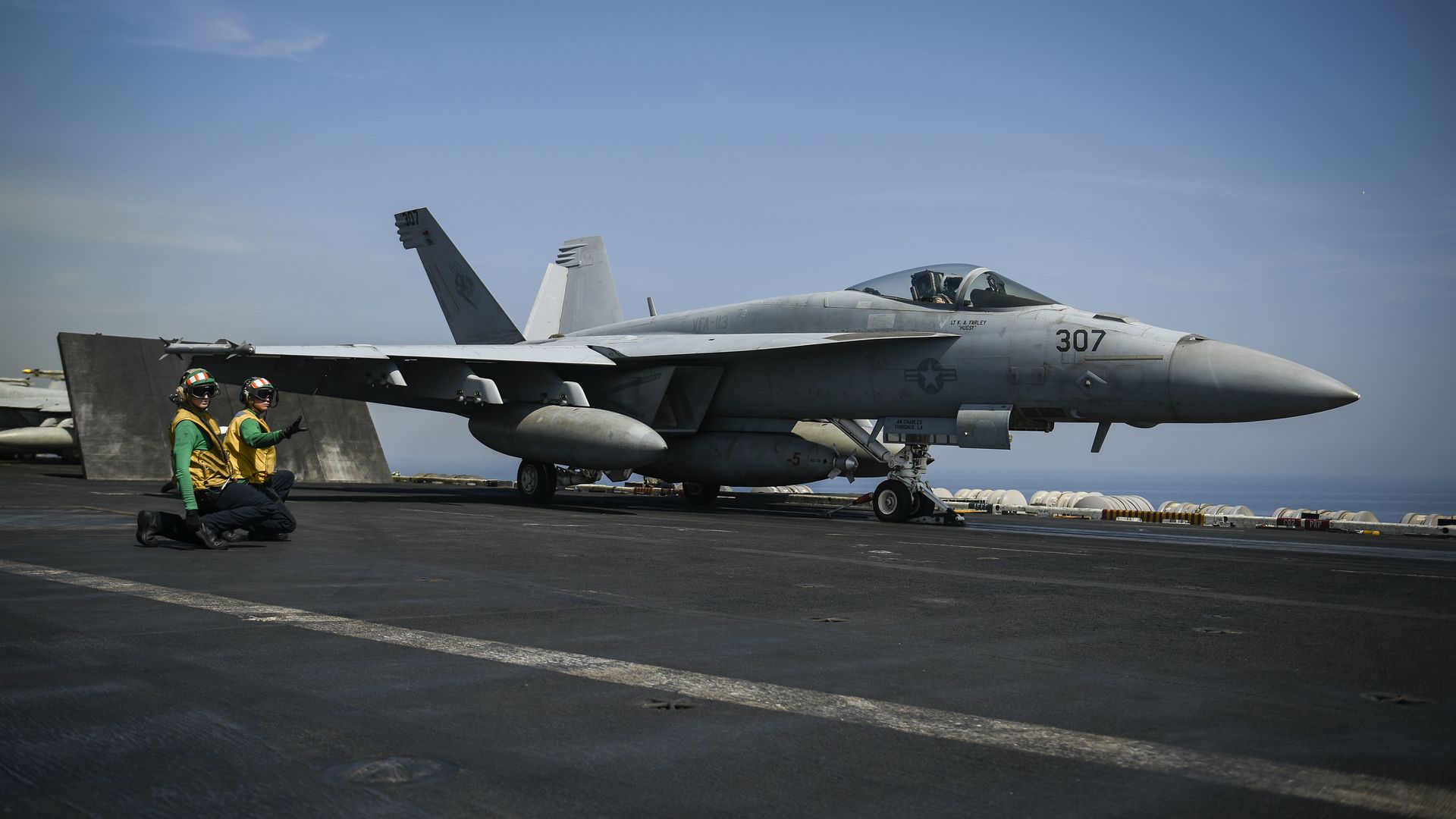
ARABIAN GULF (Feb. 17, 2018) A C-2A Greyhound, assigned to the Providers of Fleet Logistics Support Squadron (VRC) 30, lands on the flight deck of the aircraft carrier USS Theodore Roosevelt (CVN 71). Theodore Roosevelt and its carrier strike group are deployed to the U.S. 5th Fleet area of operations in support of maritime security operations to reassure allies and partners and preserve the freedom of navigation and the free flow of commerce in the region. (U.S. Navy photo by Mass Communication Specialist Seaman Michael Hogan/Released)
-
 Main AdminARABIAN GULF (Feb. 18, 2018) An F/A-18E Super Hornet, assigned to the Stingers of Strike Fighter Attack Squadron (VFA) 22, lands on the flight deck of the aircraft carrier USS Theodore Roosevelt (CVN 71). Theodore Roosevelt and its carrier strike group are deployed to the U.S. 5th Fleet area of operations in support of maritime security operations to reassure allies and partners and preserve the freedom of navigation and the free flow of commerce in the region. (U.S. Navy photo by Mass Communication Specialist Seaman Michael Hogan/Released)
Main AdminARABIAN GULF (Feb. 18, 2018) An F/A-18E Super Hornet, assigned to the Stingers of Strike Fighter Attack Squadron (VFA) 22, lands on the flight deck of the aircraft carrier USS Theodore Roosevelt (CVN 71). Theodore Roosevelt and its carrier strike group are deployed to the U.S. 5th Fleet area of operations in support of maritime security operations to reassure allies and partners and preserve the freedom of navigation and the free flow of commerce in the region. (U.S. Navy photo by Mass Communication Specialist Seaman Michael Hogan/Released)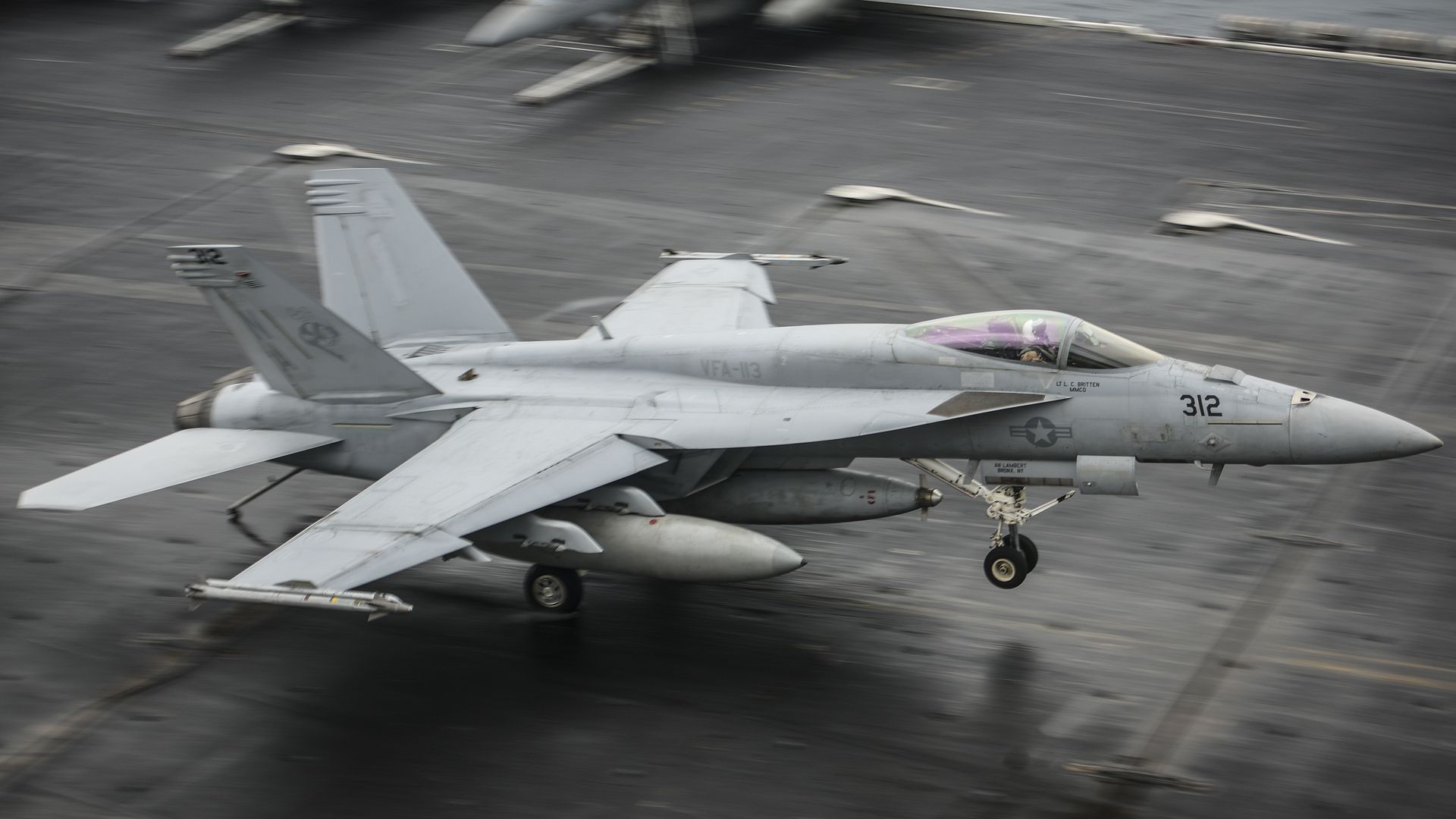
Texan T6C arrives at RAF Valley
A milestone was reached today at RAF Valley, with the arrival of two brand new training aircraft. The two Texan T6C advanced turboprops - manufactured by Textron Aviation Incorporated in the United States ? are part of a planned fleet of 10 that is set to deliver Basic Flying Training (BFT) at RAF Valley for RAF and Royal Navy pilots from 2019.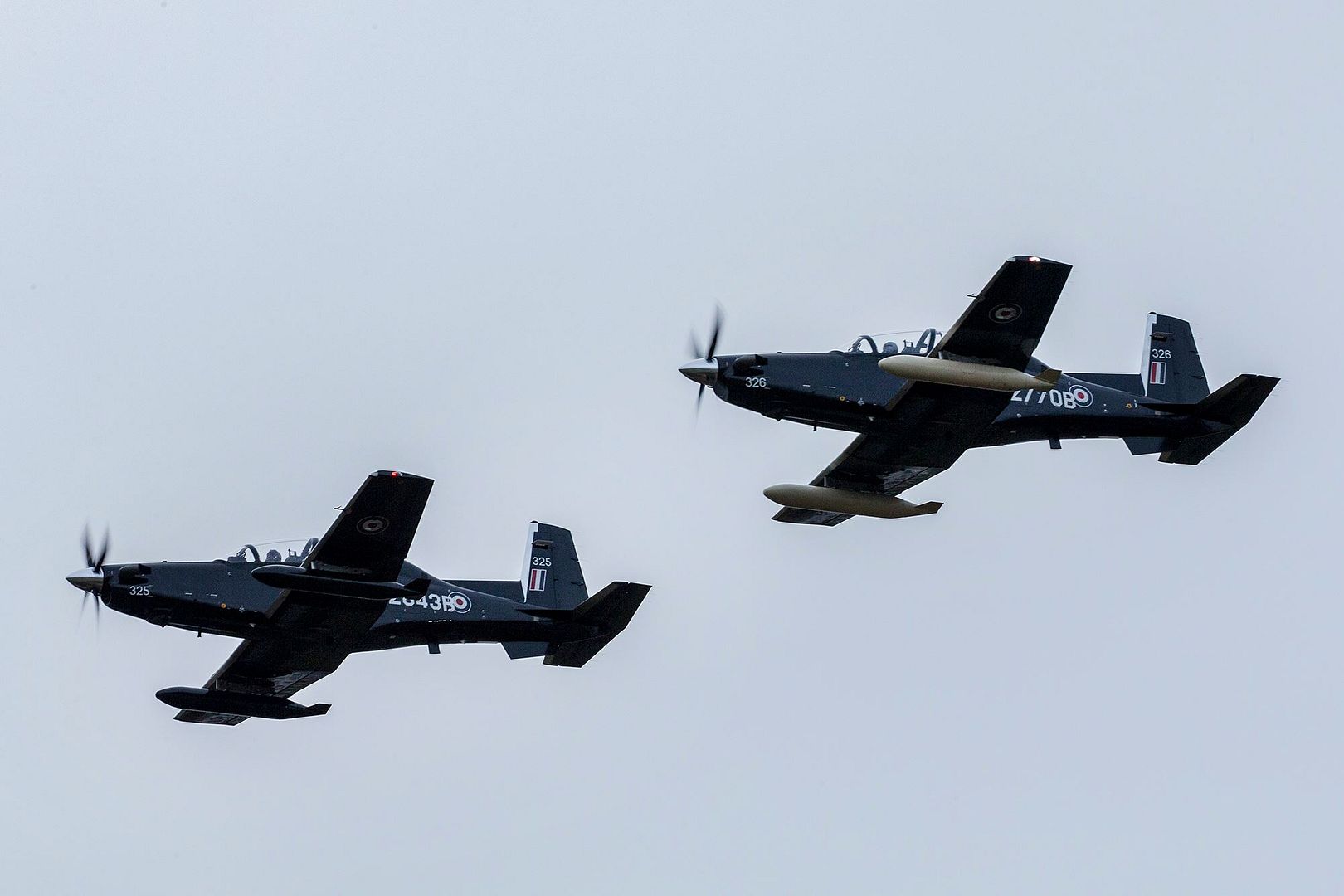
Their arrival represents a further development in the delivery of the UK Military Flying Training System (UKMFTS). The UKMFTS is a partnership between the UK Ministry of Defence and Ascent Flight Training Ltd which will replace the current military flying training system with a modern training system that is better-equipped to meet the needs of the next generation of front-line aircraft operated by the UK Armed Forces.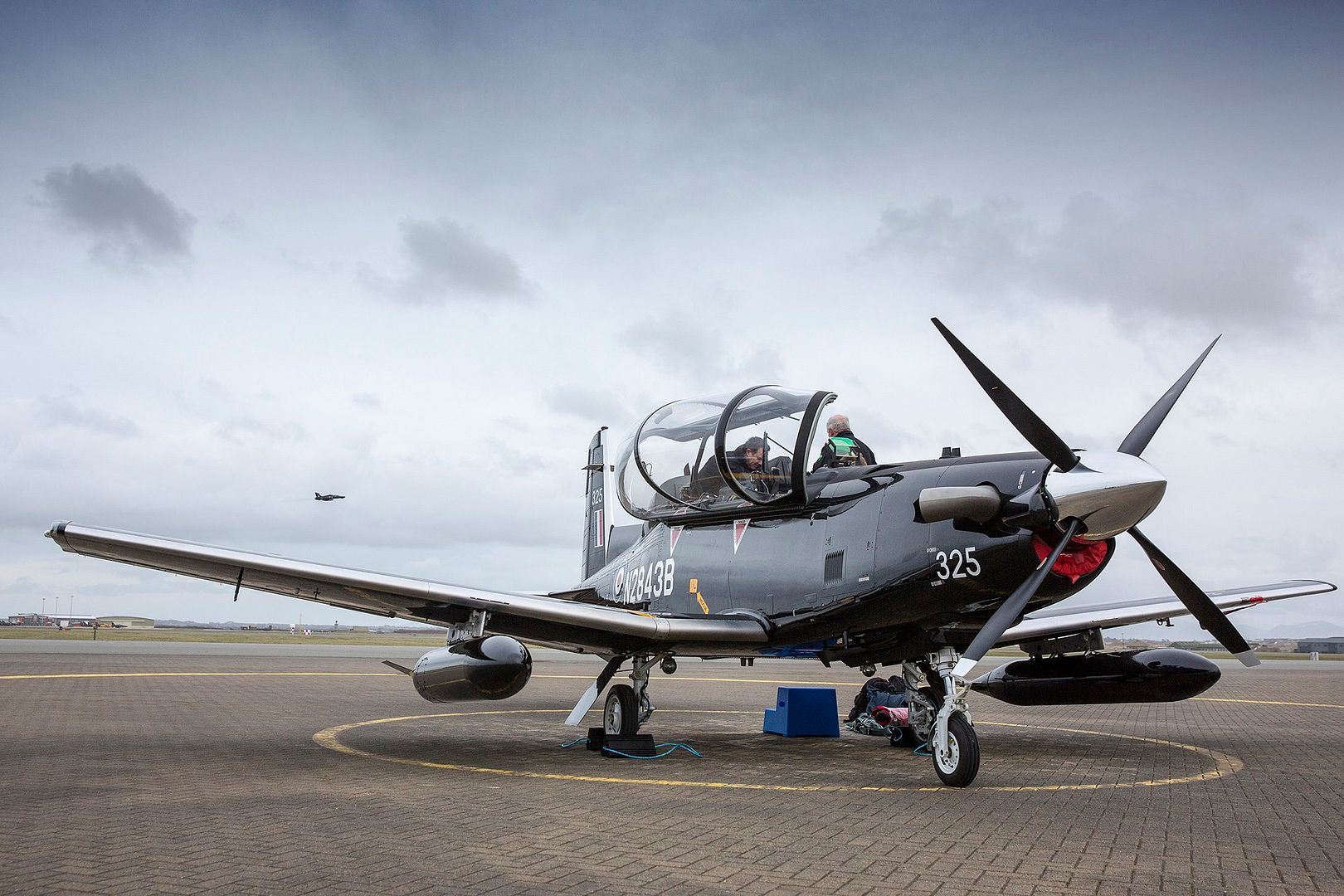
-
6 years agoTue Feb 20 2018, 10:39pm
 Main AdminSTRATFORD, Conn., Feb. 20, 2018 /PRNewswire/ -- Sikorsky, a Lockheed Martin (NYSE: LMT) company, is beginning final assembly of the first HH-60W Combat Rescue Helicopter, which will bring unprecedented capability enhancements to the U.S. Air Force rescue mission. The timing of final assembly supports the program's accelerated schedule and positions the aircraft's first flight for the end of this year, two months ahead of schedule.
Main AdminSTRATFORD, Conn., Feb. 20, 2018 /PRNewswire/ -- Sikorsky, a Lockheed Martin (NYSE: LMT) company, is beginning final assembly of the first HH-60W Combat Rescue Helicopter, which will bring unprecedented capability enhancements to the U.S. Air Force rescue mission. The timing of final assembly supports the program's accelerated schedule and positions the aircraft's first flight for the end of this year, two months ahead of schedule.
"Final assembly of this first HH-60W helicopter marks a significant milestone for Sikorsky, our workforce and the U.S. Air Force," said Tim Healy, director of Sikorsky Air Force Programs. "We are on track to deliver this significant capability enhancement ahead of schedule, ensuring the U.S Air Force continues its mission 'That Others May Live.'"
The final assembly process includes installation of the new Tactical Mission Kit (TMK) delivered from Lockheed Martin's Owego, New York, facility. The integration of sensors, radar and multiple defense systems will bring added intelligence into the cockpit, giving pilots more information to make split second decisions to complete the mission.
"The HH-60W will be the most thoroughly networked and connected vertical lift platform ever produced, bringing unrivaled capability in high-threat environments," said Healy. "The modern battlespace is an unforgiving place, no one survives on their own, and the HH-60W allows the entire suite of air and space power to be linked and employed in support of combat rescue operations, even in deep and denied territory."
The final assembly process also involves installation of a new fuel system that features duel internal fuel tanks totaling 660-gallons, nearly doubling the capacity of the internal tank on a UH-60M Black Hawk. This enhanced capability gives the U.S Air Force crew greater range and more capability to rescue those injured in the battle space.
This Engineering Manufacturing Development (EMD) aircraft is the first to be assembled at the Sikorsky headquarters in Stratford, Connecticut. A total of nine aircraft will be built in Connecticut during the EMD phase of the program ? four EMD aircraft and five System Demonstration Test Articles (SDTA).
The U.S. Air Force program of record calls for 112 helicopters to replace the Air Force's aging HH-60G Pave Hawk helicopters, which perform critical combat search and rescue and personnel recovery operations for all U.S. military services.
The $1.5 billion EMD and SDTA contract includes development and integration of the next generation combat rescue helicopter and mission systems, including delivery of nine HH-60W helicopters as well as six aircrew and maintenance training devices, and instructional courseware designed specifically for the HH-60W aircraft. Sikorsky successfully conducted the training systems design review in September.
CALGARY, Alberta, Feb. 20, 2018 /PRNewswire/ -- Lockheed Martin (NYSE: LMT) software has been simultaneously flying, on average, at least six unmanned aircraft during every hour of the last 25 years, completing missions as diverse as reconnaisance, inspection, mapping and targeting. Today, Lockheed Martin is launching VCSi, a new vehicle control software, as the culmination of more than two decades of experience and 1.5 million hours of operational use.
Lockheed Martin will unveil VCSi ? commercial software that enables operators to simultaneously control dozens of unmanned vehicles and conduct information, surveillance and reconaissance missions ? during the Unmanned Systems Exhibition and Conference in Abu Dhabi this month.
"VCSi is a safe and reliable software platform that can be adapted to any vehicle ? from one you can hold in your hand, to a 50,000-pound machine; from a vehicle that flies for a few minutes, to a vehicle that flies for months at a time," said John Molberg, business development manager, Lockheed Martin CDL Systems. "The user can integrate as many vehicles as required to complete their missions, including boats, quadcopters, fixed-wing aircraft or even high-altitude pseudo satellites. Across commercial or military missions, VCSi is adaptable to the challenge and further extends the power of the human-machine team."
VCSi's major enhancements include:
Multi-Vehicle: Control interfaces to allow for true 1:n control of dissimilar vehicles anywhere on earth
Intuitive: Lockheed Martin further advanced its fly-by-mouse interface to enable easier training and reduce operator/analyst task loads
Affordable: Priced competitively with all unmanned systems in mind, customers can buy essential modules for their mission set
Modular: Offers a robust plug-in architecture, which allows for custom content to be added by the user or selected from pre-existing modules
International: Commercial software, made in Canada and free of export restrictions
VCSi is designed around the NATO Standardization Agreement known as STANAG 4586, which supports unmanned vehicle interoperability. Customers can build attachments or plug-ins beyond 4586 to customize the VCSi software, which also supports multiple languages and non-Latin scripts. VCSi provides advanced 3D visualization of vehicles and airspace, and it is at the forefront of integration into unmanned traffic management systems.
This year marks the 25th anniversary of the VCS unmanned control product family, which has accumulated more than 1.5 million flight hours by operators controlling 40 different vehicles across several dozen companies.
Lockheed Martin has five decades of experience in unmanned and autonomous systems for air, land and sea. From the depths of the ocean to the rarified air of the stratosphere, Lockheed Martin's unmanned systems help militaries, civil and commercial customers accomplish their most difficult challenges.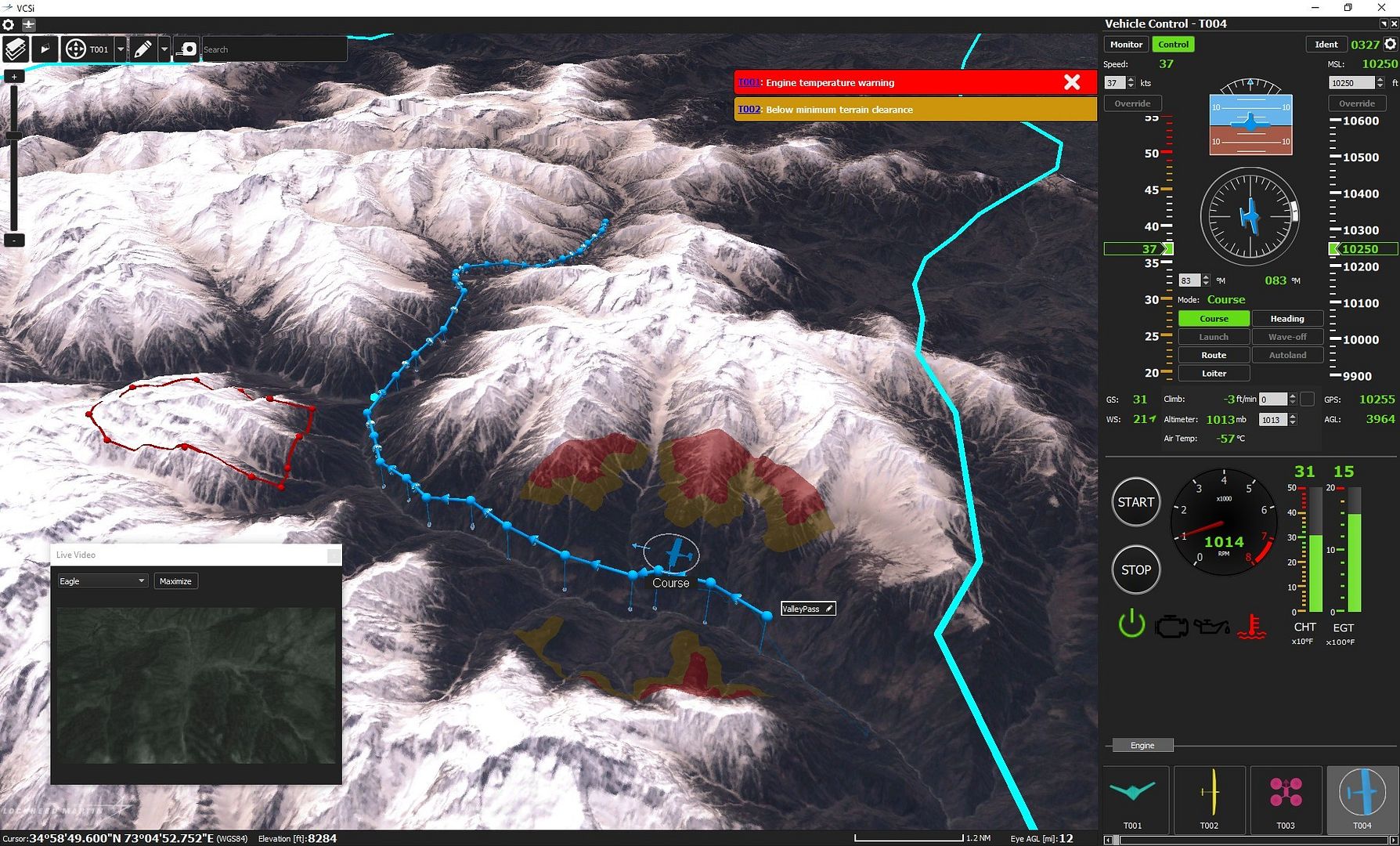
Boeing delivers first Super Hornet to the Navy in two years
February 20, 2018 in Defense
A familiar roar across the skies of St. Louis was recently heard as the first F/A-18 Super Hornet to come off the production line since May 2016 was delivered to the U.S. Navy.
Super Hornet E298 is the first of many more Super Hornets to be delivered this year as part of Fiscal Year (FY) 2016 and 2017 budget commitments. The President?s FY18 budget included a requirement for 24 more Super Hornets, and the FY19 budget added an additional 110 Super Hornets to be built through FY23.
?Fiscal year 2018 commitments are behind those deliveries, and beyond FY18 is a promising future for F/A-18,? said Dave Sallenbach, F/A-18 &EA-18G Production program manager. ?We?ve added capability to the air frame. We?ve shown a need for Super Hornets for well into the mid-2020s, well into the 2030s.?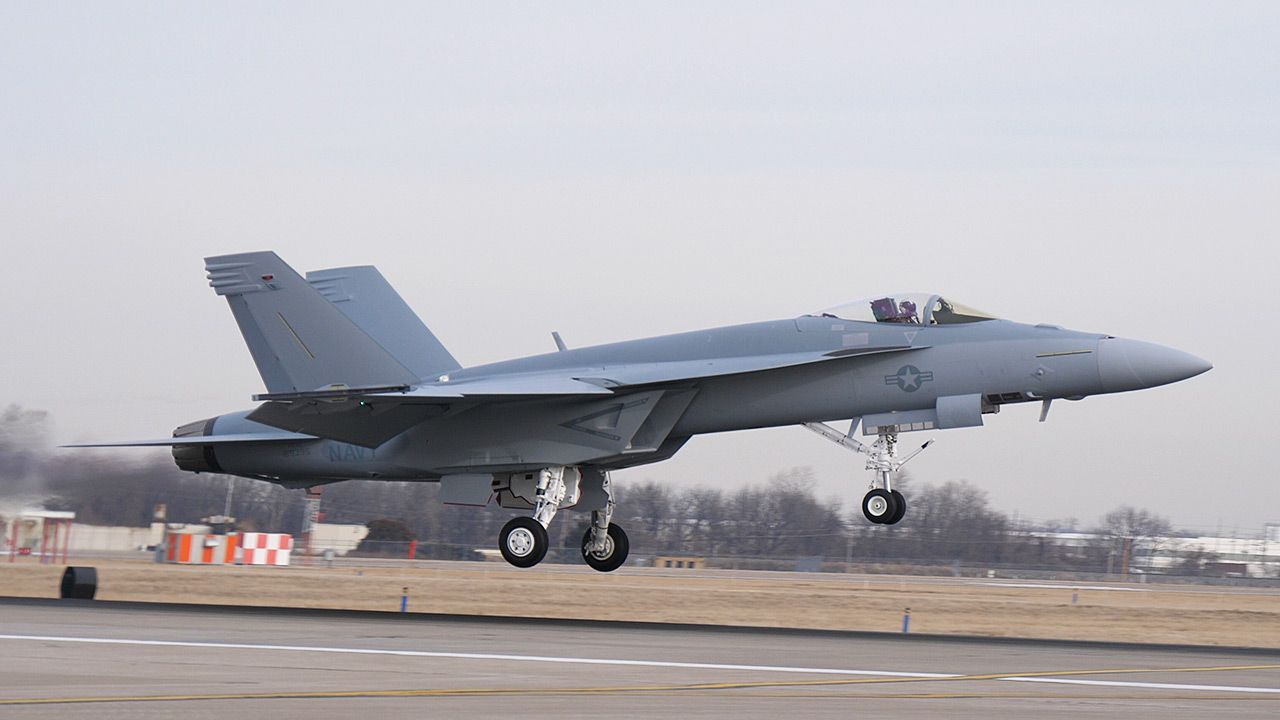
Airbus has delivered the world?s first A350-1000 widebody airliner to launch customer Qatar Airways at a delivery event in Toulouse, France. The aircraft is the first of 37 A350-1000s ordered by the carrier and is the first ever Airbus aircraft fitted with the revolutionary new Qsuite seats, offering the first ever double bed in Business class. Qatar Airways is the world?s largest A350 XWB family customer with 76 aircraft on order and the largest A350-1000 customer.
?Qatar Airways always demands the very best for its customers, so it is right that we are the first airline in the world to fly the Airbus A350-1000,? said Qatar Airways Group Chief Executive, His Excellency Mr. Akbar Al Baker, ?This remarkable state-of-the-art aircraft will become a firm part of Qatar Airways fleet and will keep us ahead of the curve, allowing us to continue to offer our passengers outstanding levels of comfort and service?.
The A350-1000 fits seamlessly alongside Qatar Airways? growing fleet, including 20 A350-900s today. Both aircraft are complementary and provide for maximum commonality with unmatched operating efficiencies and the same unique passenger experience in their Airspace cabin. Flyers will benefit from absolute well-being in the cabin, with more personal space, optimised cabin altitude, more fresh air, controlled temperature & humidity, integrated connectivity and the latest generation of in-flight entertainment system.
Chris Cholerton, Rolls-Royce President ? Civil Aerospace, stated ?We are very proud to have worked with Qatar Airways and Airbus to deliver engines for this latest version of the A350 XWB family. This delivery marks another significant day in our partnership with the airline and the manufacturer as the new aircraft is powered by the most powerful engine ever developed for an Airbus aircraft, the Trent XWB-97.?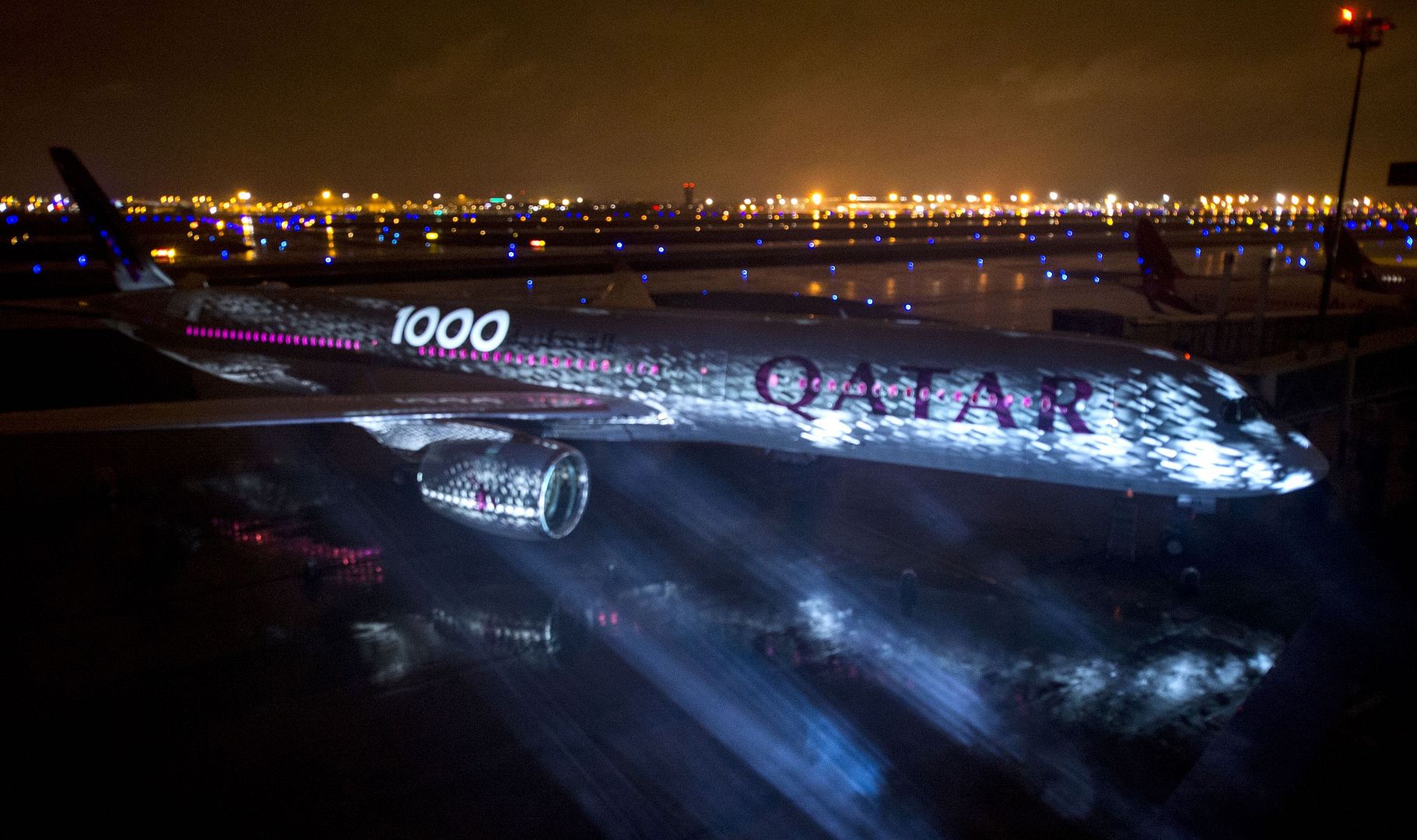
Fabrice Br?gier, Airbus, said ?It is a huge pride for us to deliver the very first A350-1000 to our launch customer Qatar Airways. Bringing major advantages in fuel and cost efficiency along with unmatched passenger comfort, the A350-1000 is the ideal aircraft to showcase Qatar Airways? legendary customer service. With its greater capacity compared to the A350-900, the newest widebody will play a major role on the carrier?s busiest long-haul routes and will contribute to strengthen their position at the forefront of the aviation industry.?
The A350-1000 is Airbus? latest and largest widebody in the twin-aisle category. With a 7-metre longer fuselage, the A350-1000 space for premium cabin products is 40% larger than its smaller sibling the A350-900. In Qatar Airways configuration the A350-1000 offers 44 additional seats. It is a truly long-range aircraft with a range of 8,000nm (14,800 km) at entry into service. The A350-1000 features a modified wing trailing-edge, new six-wheel main landing gears and more powerful Rolls-Royce Trent XWB-97 engines. As with the A350-900, the A350-1000 brings together the very latest in aerodynamics, design and advanced technologies for a 25 per cent step change in operating cost compared to previous generation competitor aircraft.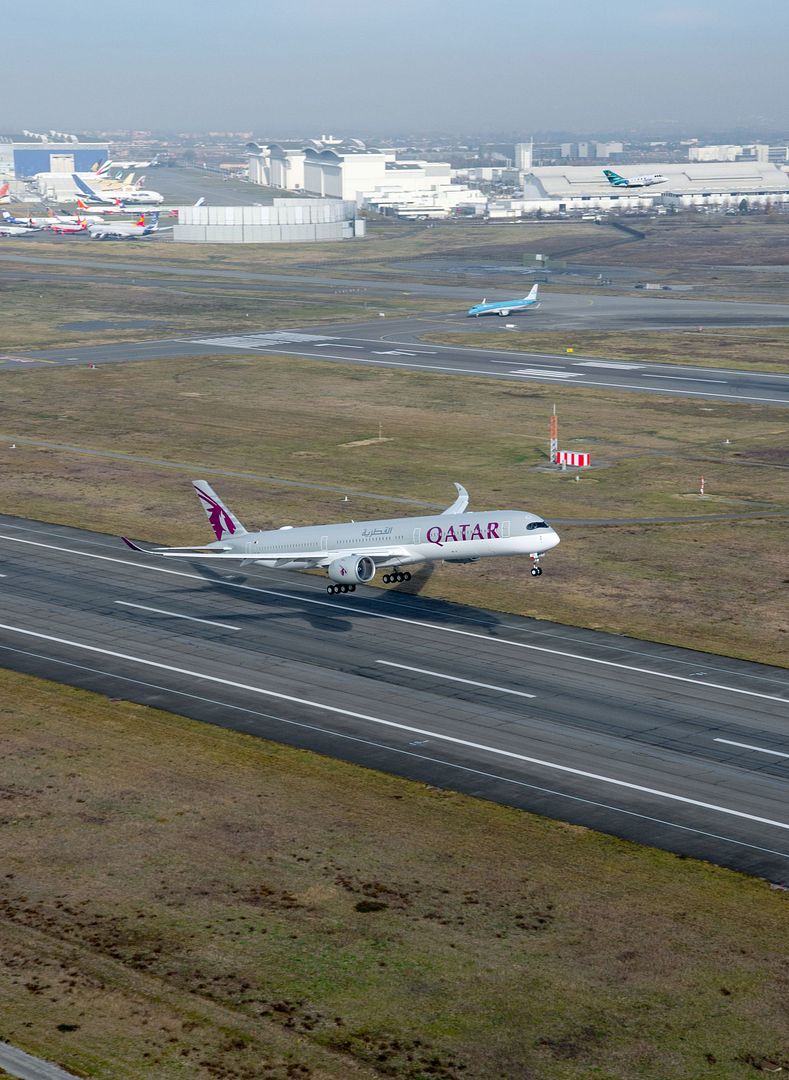
-
 Main AdminA Royal Thai Air Force EC275 lands at the Disaster Relief Training Center in support of Cobra Gold 2018 in Chachoengsao province, Kingdom of Thailand, Feb. 20, 2018. CG18 provides a venue for both United States and partner nations to advance interoperability and increase partner capacity in planning and executing complex and realistic multinational force and combined task force operations. CG18 is an annual exercise conducted in the Kingdom of Thailand and runs from Feb. 13-23 with seven full participating nations. (U.S. Marine Corps photo's by Cpl. Justin Huffty)
Main AdminA Royal Thai Air Force EC275 lands at the Disaster Relief Training Center in support of Cobra Gold 2018 in Chachoengsao province, Kingdom of Thailand, Feb. 20, 2018. CG18 provides a venue for both United States and partner nations to advance interoperability and increase partner capacity in planning and executing complex and realistic multinational force and combined task force operations. CG18 is an annual exercise conducted in the Kingdom of Thailand and runs from Feb. 13-23 with seven full participating nations. (U.S. Marine Corps photo's by Cpl. Justin Huffty)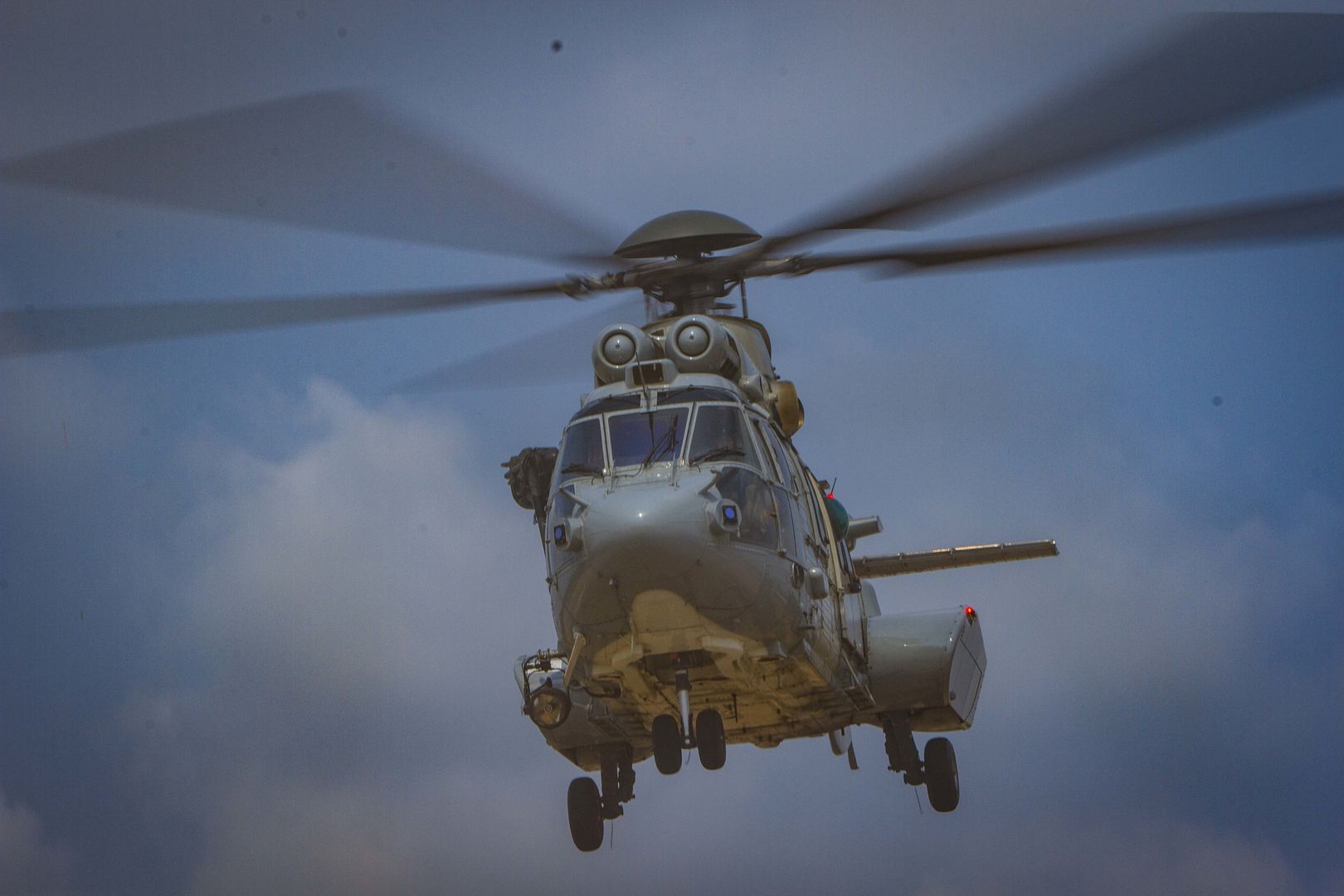
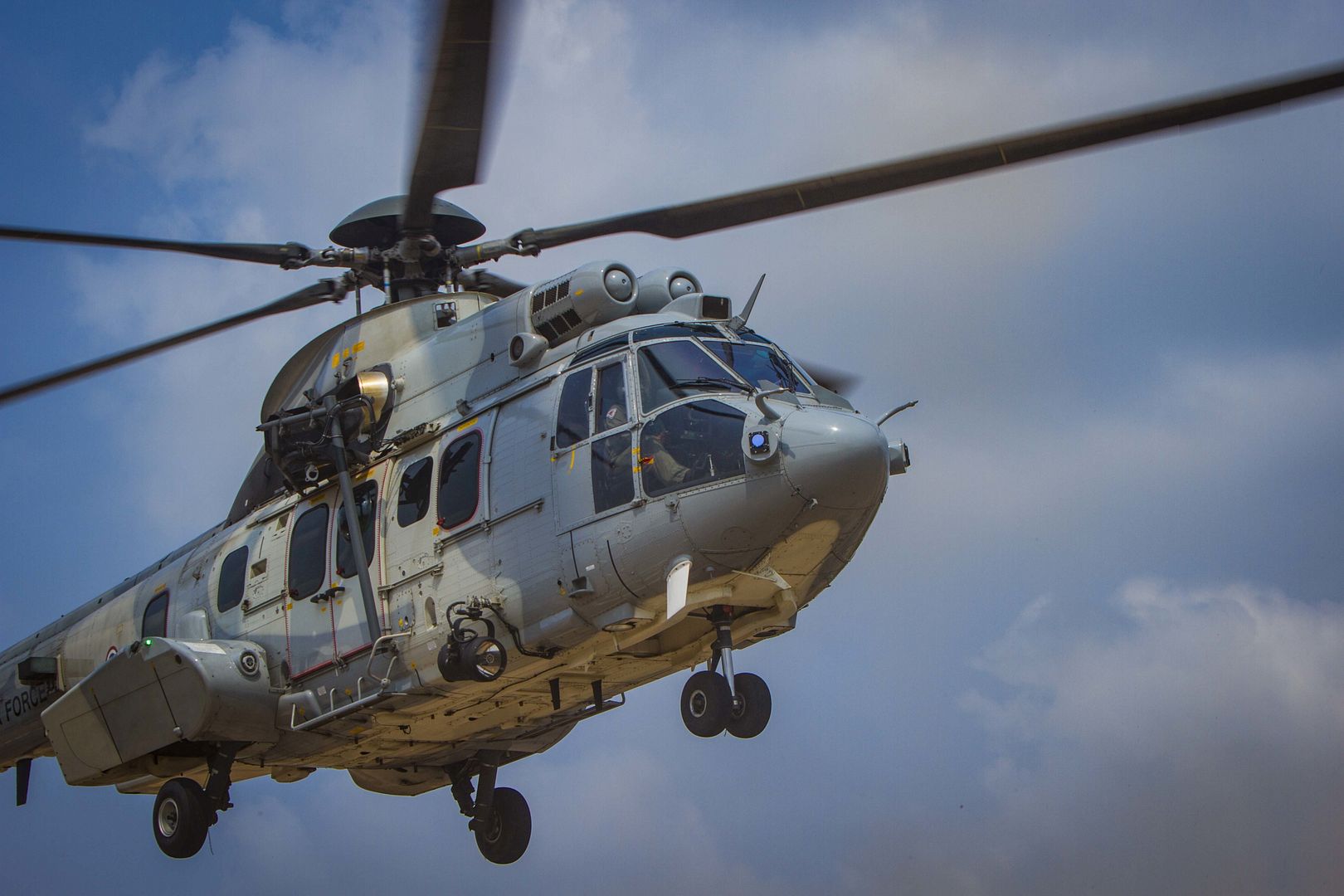
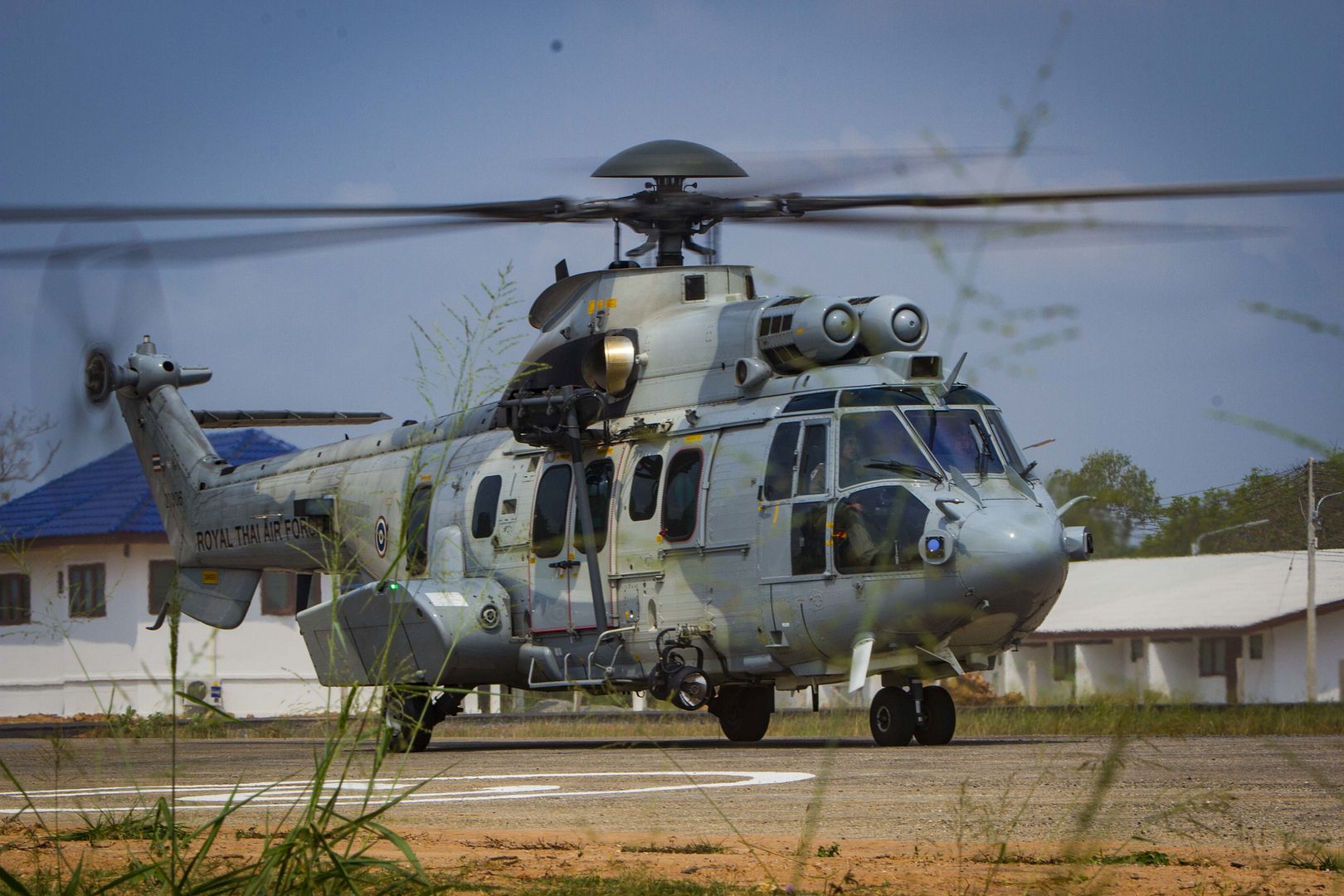
A snow plow removes ice from flight line Feb. 20, 2018, at McConnell Air Force Base, Kansas. The snow removal team helps ensure the efficient takeoffs and landings of all inbound and outbound aircraft on the flight line. (U.S. Air Force photo by Senior Airman Jenna K. Caldwell)
ARABIAN GULF (Feb. 21, 2018) An E-2C Hawkeye, assigned to the Sunkings of Carrier Airborne Early Warning Squadron (VAW) 116, approaches the flight deck of the aircraft carrier USS Theodore Roosevelt (CVN 71). Theodore Roosevelt and its carrier strike group are deployed to the U.S. 5th Fleet area of operations in support of maritime security operations to reassure allies and partners and preserve the freedom of navigation and the free flow of commerce in the region. (U.S. Navy photo by Mass Communication Specialist 3rd Class Alex Corona/Released)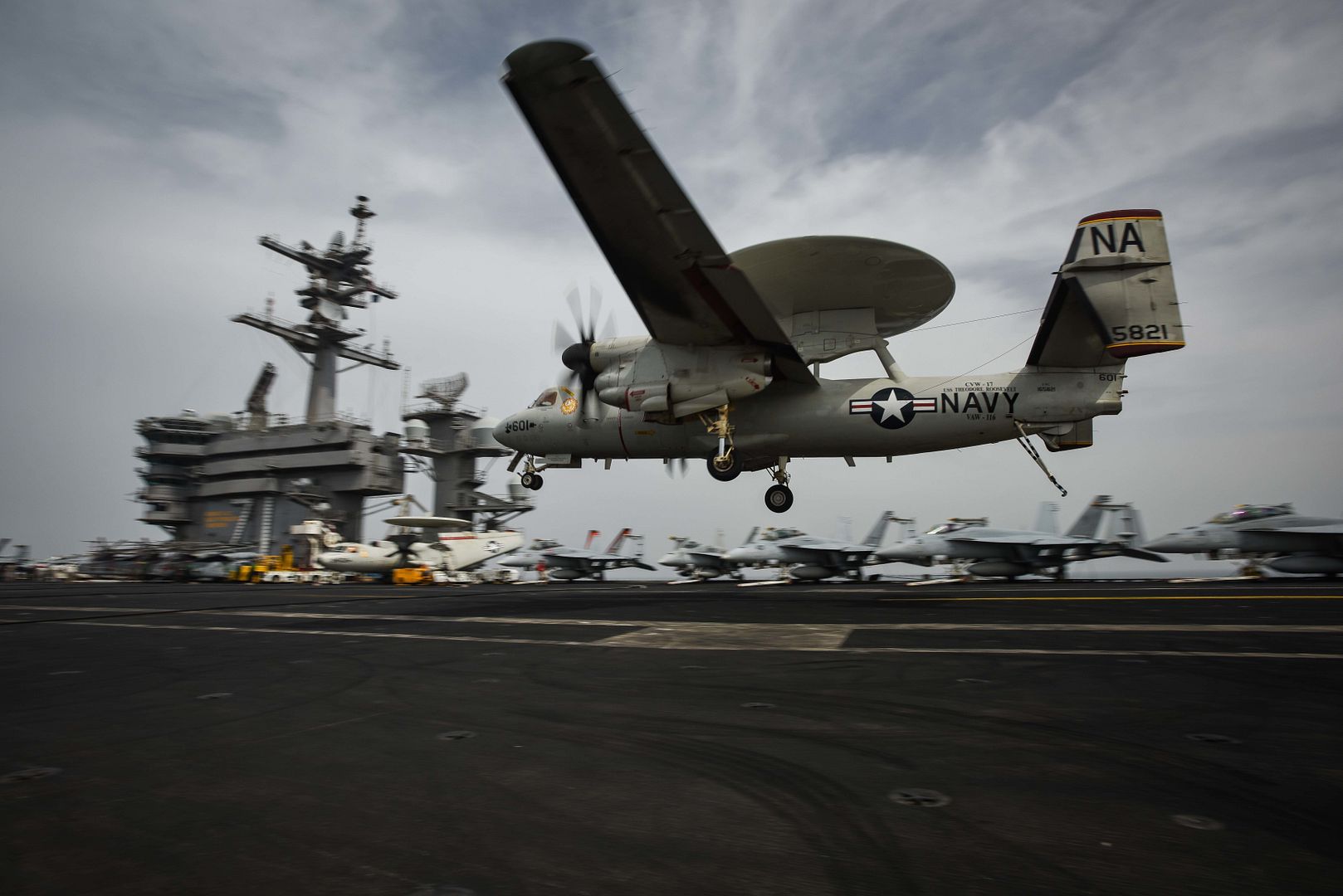
ARABIAN GULF (Feb. 20, 2018) A C-2A Greyhound, attached to the Providers of Fleet Logistics Support Squadron (VRC) 30, approaches the flight deck of the USS Theodore Roosevelt (CVN 71). Theodore Roosevelt and its carrier strike group are deployed to the U.S. 5th Fleet area of operations in support of maritime security operations to reassure allies and partners and preserve the freedom of navigation and the free flow of commerce in the region. (U.S. Navy photo by Mass Communication Specialist 3rd Class Andrew Langholf/Released)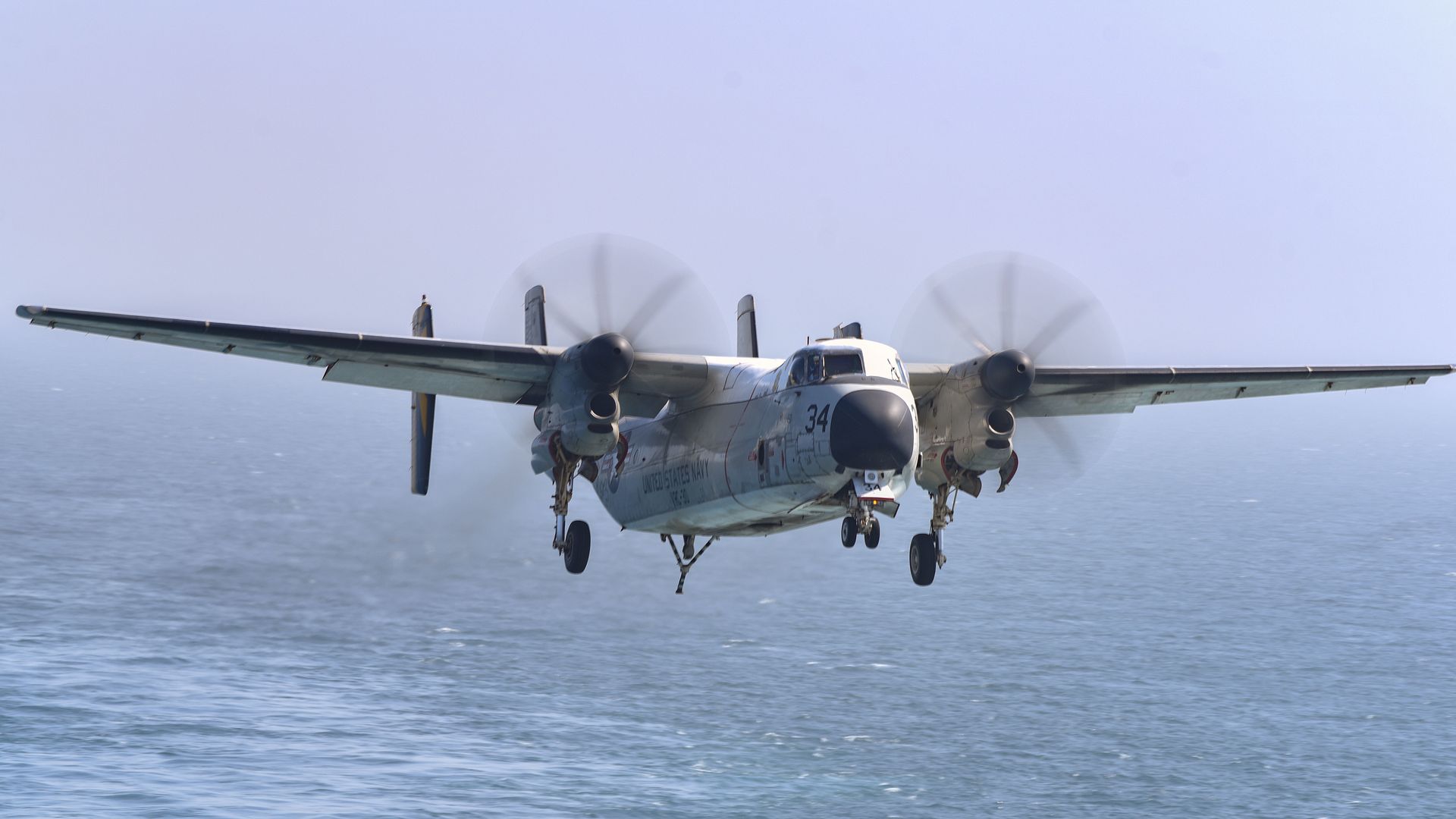
Las Vegas, USA, The H160 prototype has landed in Las Vegas and will be headlining Airbus Helicopters? presence for the first time ever at an international airshow at this year?s Heli-Expo from 27 Feb - 1 March at the Las Vegas convention centre. Showgoers will be able see for themselves the #H160ReasonsWhy the H160 is raising the bar in the industry.
?We are proud to be bringing the H160 prototype to Heli-Expo for the first time?, said Ben Bridge, Executive Vice President for Global Business. ?This aircraft is emblematic of the company?s transformation in every domain from concept and design, to the revamped industrial production model enabling enhanced industrial maturity from entry into service, and capitalizing on key digital technologies for greater customer support and maintenance. All of this has been done with our customers? priorities in mind, and we are excited that they will get to experience the H160 shortly with the US demo tour kicking off after the show,? he added.
Maintenance demos on the H160 will be performed daily to show how maintenance has been optimized and facilitated thanks to its unique design and new processes like the ?Operator Zero? campaign.
Alongside the second prototype of the H160, on booth N1915, Airbus Helicopters will be displaying its HGeneration range of mission enablers including HCare services that allow customers to focus on their operations safely, efficiently and cost-effectively. On display will be an H125 in a law enforcement configuration, the H135 equipped with Helionix, and the H145 in a private and business aviation configuration.
In its on-going commitment to innovation and the future of flight, Airbus Helicopters is incorporating new digital and electrical technologies into products and services alike. A great example of this is CityAirbus, Airbus? self-piloted battery powered aircraft designed with the latest safety standards to transport four passengers for inner-city flights. A mock-up of this innovative project will be showcased at Heli-Expo as the project team is busy maturing technologies that will allow a demonstrator to fly at the end of this year. However Urban Air Mobility for Airbus Helicopters does not stop at the aircraft itself and as part of its new customer services offer, Airbus Helicopters intends to provide travellers with on-demand helicopter services to escape urban congestion by taking to the skies, as the recently integrated Voom project exemplifies.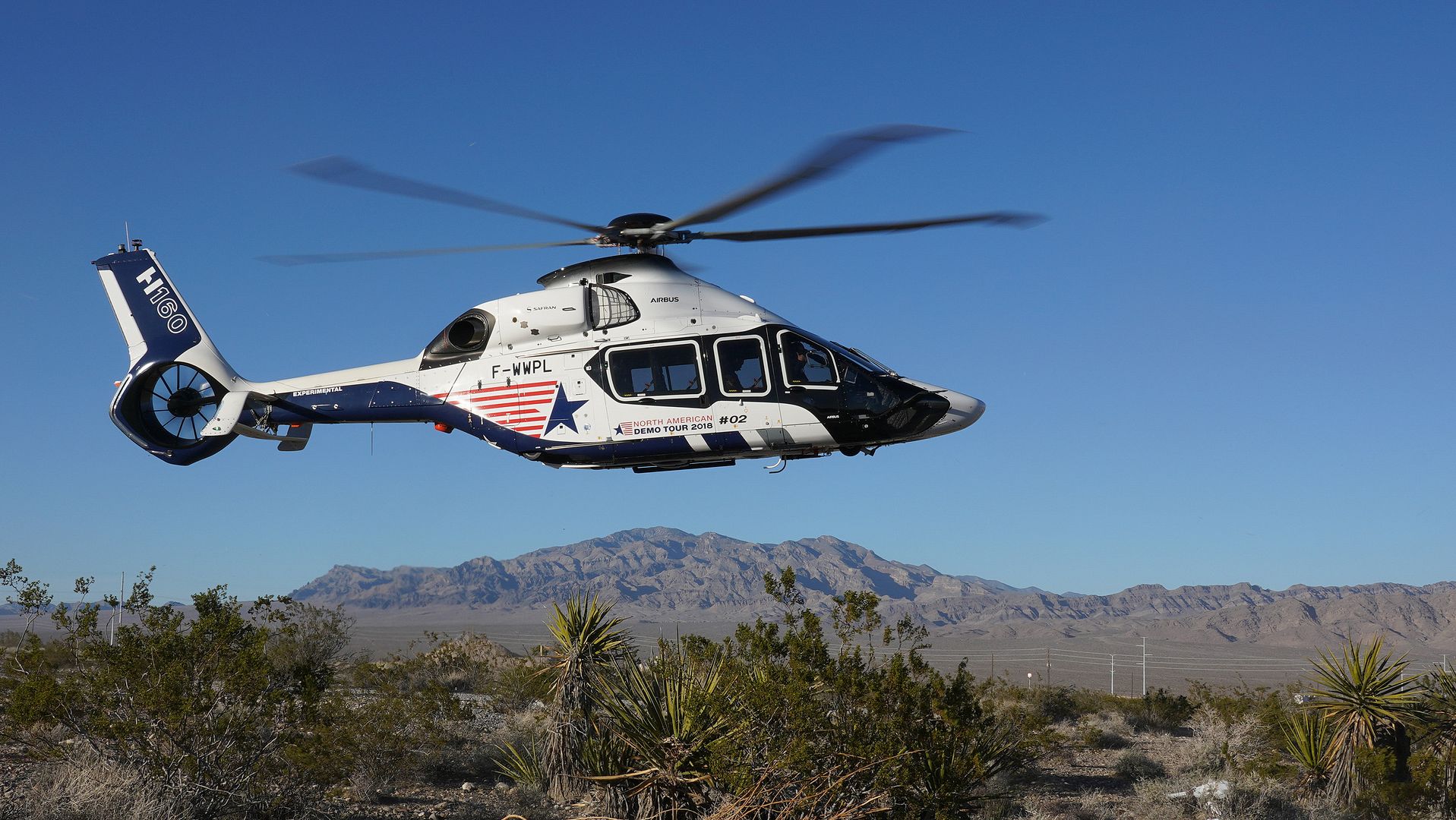
-
 Main AdminAn Alaska Air National Guard C-17 Globemaster III prepares to depart Joint Base Elmendorf-Richardson for exercise Arctic Eagle 2018 on Feb. 20, 2018. Arctic Eagle 18 is a statewide exercise involving national, state, and local agencies designed to provide opportunities for participants to conduct sustained operations in arctic conditions and test chemical, biological, radiological and nuclear response missions. (U.S. Army National Guard photo by 2nd Lt. Marisa Lindsay/released)
Main AdminAn Alaska Air National Guard C-17 Globemaster III prepares to depart Joint Base Elmendorf-Richardson for exercise Arctic Eagle 2018 on Feb. 20, 2018. Arctic Eagle 18 is a statewide exercise involving national, state, and local agencies designed to provide opportunities for participants to conduct sustained operations in arctic conditions and test chemical, biological, radiological and nuclear response missions. (U.S. Army National Guard photo by 2nd Lt. Marisa Lindsay/released)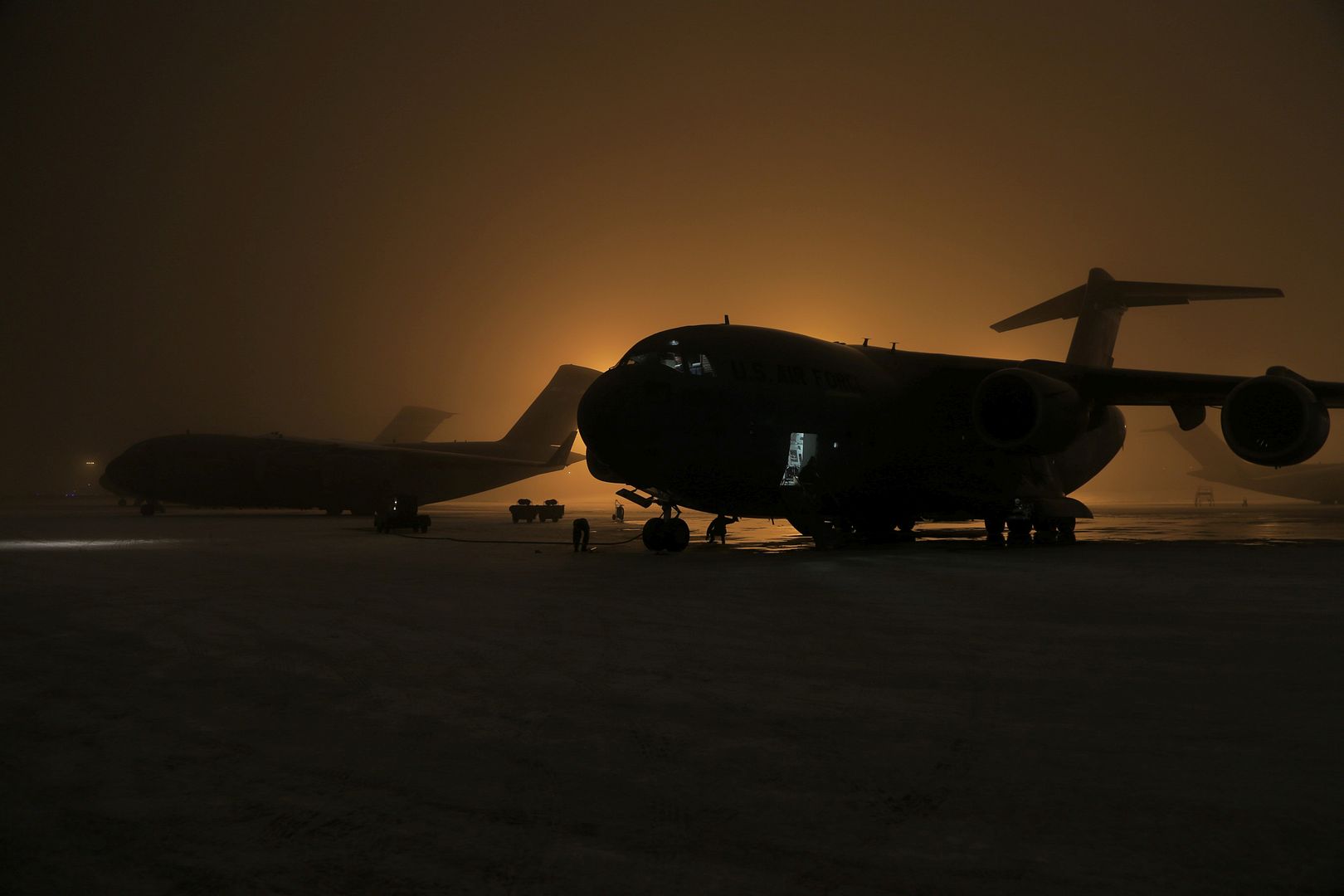
GULF OF THAILAND (Feb. 19, 2018) An MH-60S Sea Hawk helicopter assigned to the Sea Knights of Helicopter Sea Combat Squadron (HSC) 22, currently assigned to the amphibious assault ship USS Bonhomme Richard (LHD 6), fires a 2.75-inch unguided rocket during a live fire exercise. Bonhomme Richard is participating in Exercise Cobra Gold 2018 alongside Royal Thai Navy ships and personnel, conducting a range of amphibious operations that will enhance the tactical expertise of participants and rehearse combined capabilities to respond to contingencies. Cobra Gold is an annual exercise conducted in the Kingdom of Thailand, held this year from Feb. 13-23 with seven full participating nations. (U.S. Navy photo's by Mass Communication Specialist 2nd Class Diana Quinlan/Released)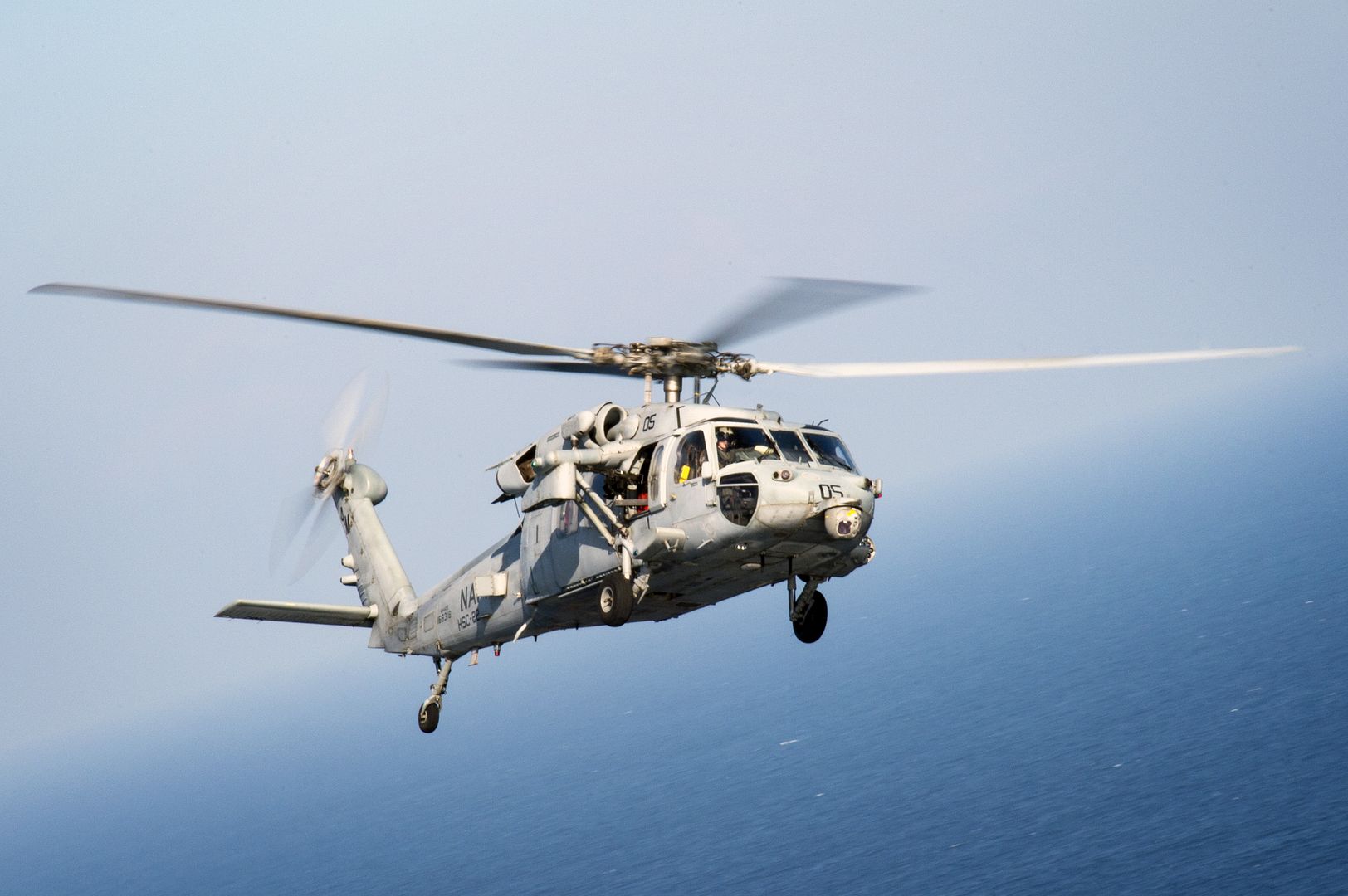

An U.S. Air Force KC-10 Extender returns to the 380th Air Expeditionary Wing, Al Dhafra Air Base, Unite Arab Emirates after completing a mission in support of Operation Inherent Resolve, Feb. 13, 2018. The KC-10 provides refueling capabilities to U.S. and Coalition aircraft defending the region and delivering decisive Airpower to the fight against ISIS.
(U.S. Air Force photo by Tech. Sgt. Anthony Nelson Jr.)
A U.S. Air Force F-22 Raptor assigned to the 380th Air Expeditionary Wing,
Al Dhafra Air Base, United Arab Emirates prepares to taxi down the runway in
support of Operation Inherent Reslove, Feb. 13, 2018. The Raptor is a
critical component of the Global Strike Task Force and is designed to
project air dominance, rapidly and at great distances and defeat threats
attempting to deny access to our nation's Air force, Army, Navy and Marine
Corps. (U.S. Air Force photo by Tech. Sgt. Anthony Nelson Jr.)
An icy landscape and sundogs surround a U.S. Air Force KC-135 parked on the back of the ramp at the end of the day in anticipation of approaching snow fall in Sioux City, Iowa on February 21, 2018. The Stratotanker is assigned to the 185th Air Refueling Wing of the Iowa Air National Guard.
U.S. Air National Guard photo by Master Sgt. Vincent De Groot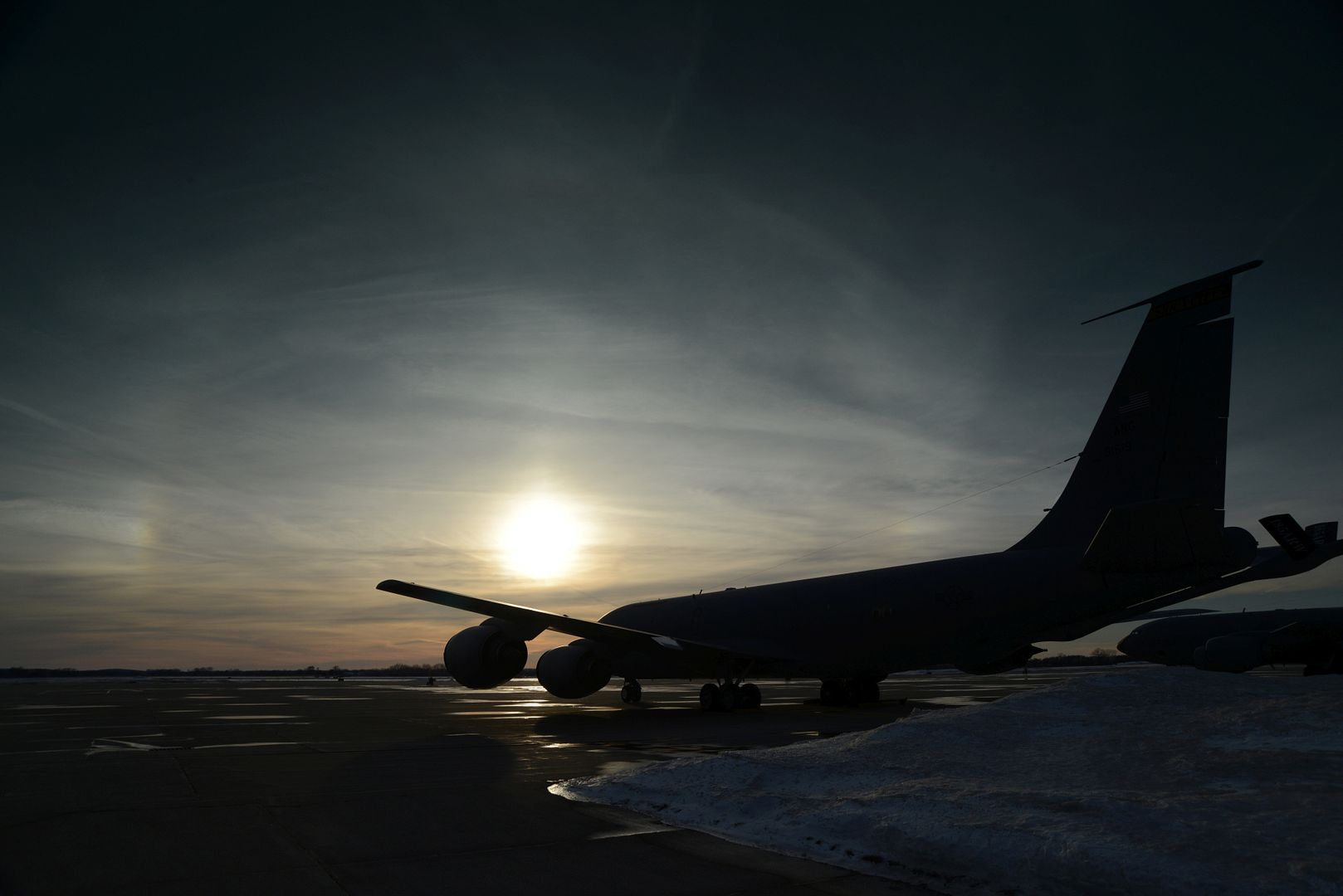
Team Vandenberg successfully launched a Falcon 9 rocket carrying a PAZ payload from Space Launch Complex-4 here, Thursday, Feb. 22, at 6:17 a.m. PST. (U.S. Air Force photo by Tech. Sgt. Jim Araos/Released)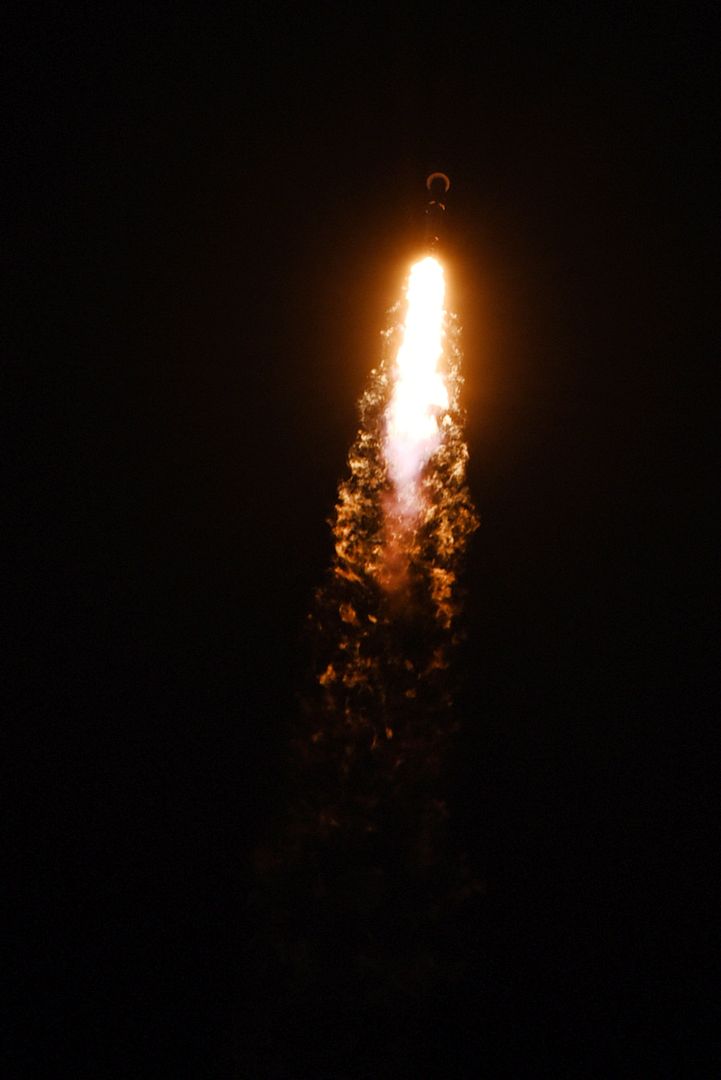
-
 Main AdminU.S. Air Force, U.S. Marine Corps and U.S. Navy aircraft fly in formation alongside Koku Jieitai (Japan Air Self-Defense Force) and Royal Australian Air Force aircraft during exercise COPE NORTH 18 in the vicinity of Guam, Feb. 21. COPE NORTH is a long-standing exercise designed to strengthen relationships in the Indo-Pacific region through air operations, humanitarian assistance/disaster relief training. (U.S. Air Force photo by Senior Airman Jarrod Vickers)
Main AdminU.S. Air Force, U.S. Marine Corps and U.S. Navy aircraft fly in formation alongside Koku Jieitai (Japan Air Self-Defense Force) and Royal Australian Air Force aircraft during exercise COPE NORTH 18 in the vicinity of Guam, Feb. 21. COPE NORTH is a long-standing exercise designed to strengthen relationships in the Indo-Pacific region through air operations, humanitarian assistance/disaster relief training. (U.S. Air Force photo by Senior Airman Jarrod Vickers)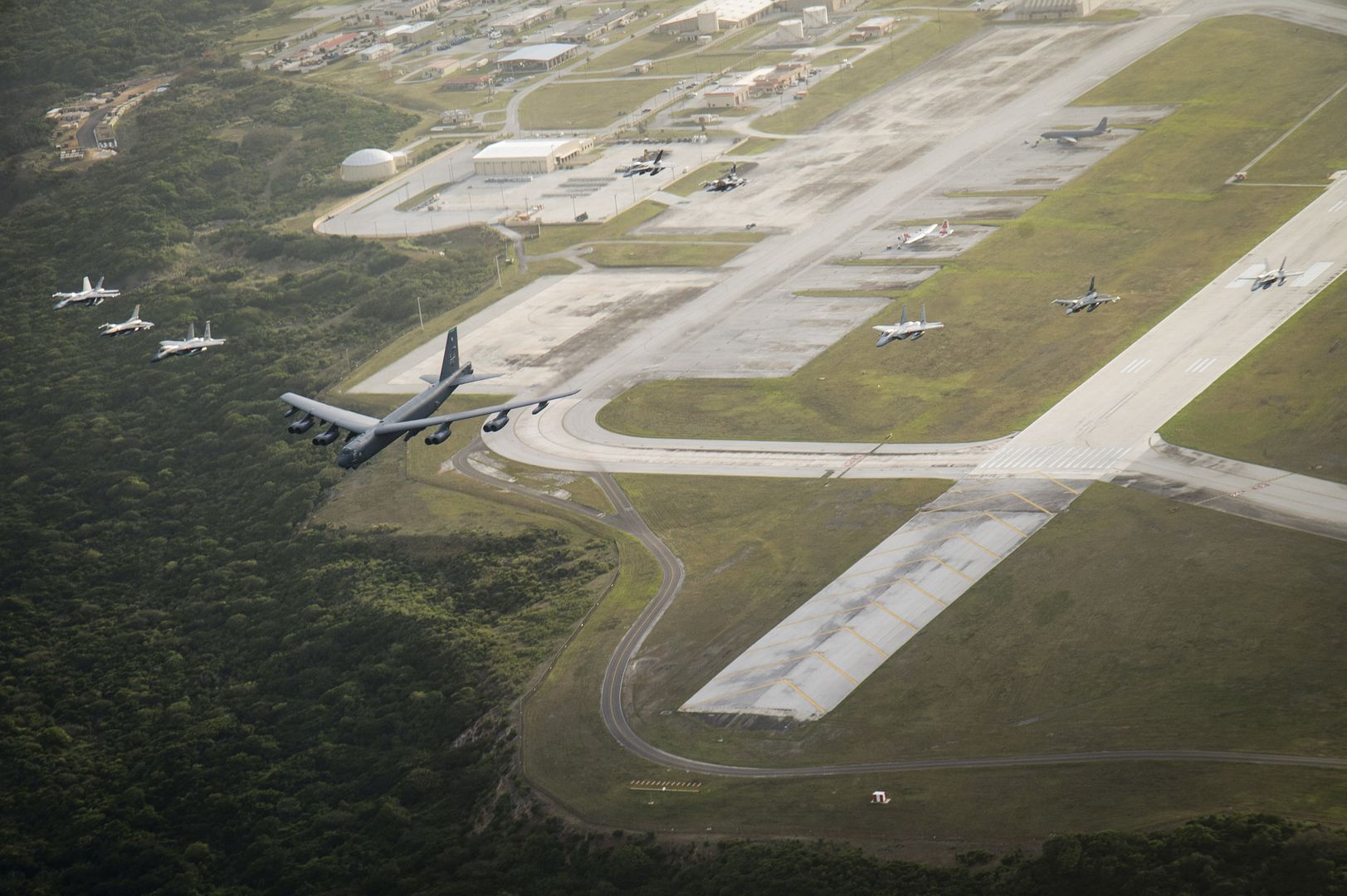
A Koku Jieitai (Japan Air Self-Defense Force) U-125A surveys the area while training for search and rescue and medical evacuation operations in exercise COPE NORTH 18 over Tinian, U.S. Commonwealth of the Northern Marianas Islands, Feb. 21. COPE NORTH is a model opportunity to practice humanitarian assistance/disaster relief in order to increase interoperability and readiness between the U.S. Air Force and allied forces. (U.S. Air Force photo's by Airman 1st Class Christopher Quail)
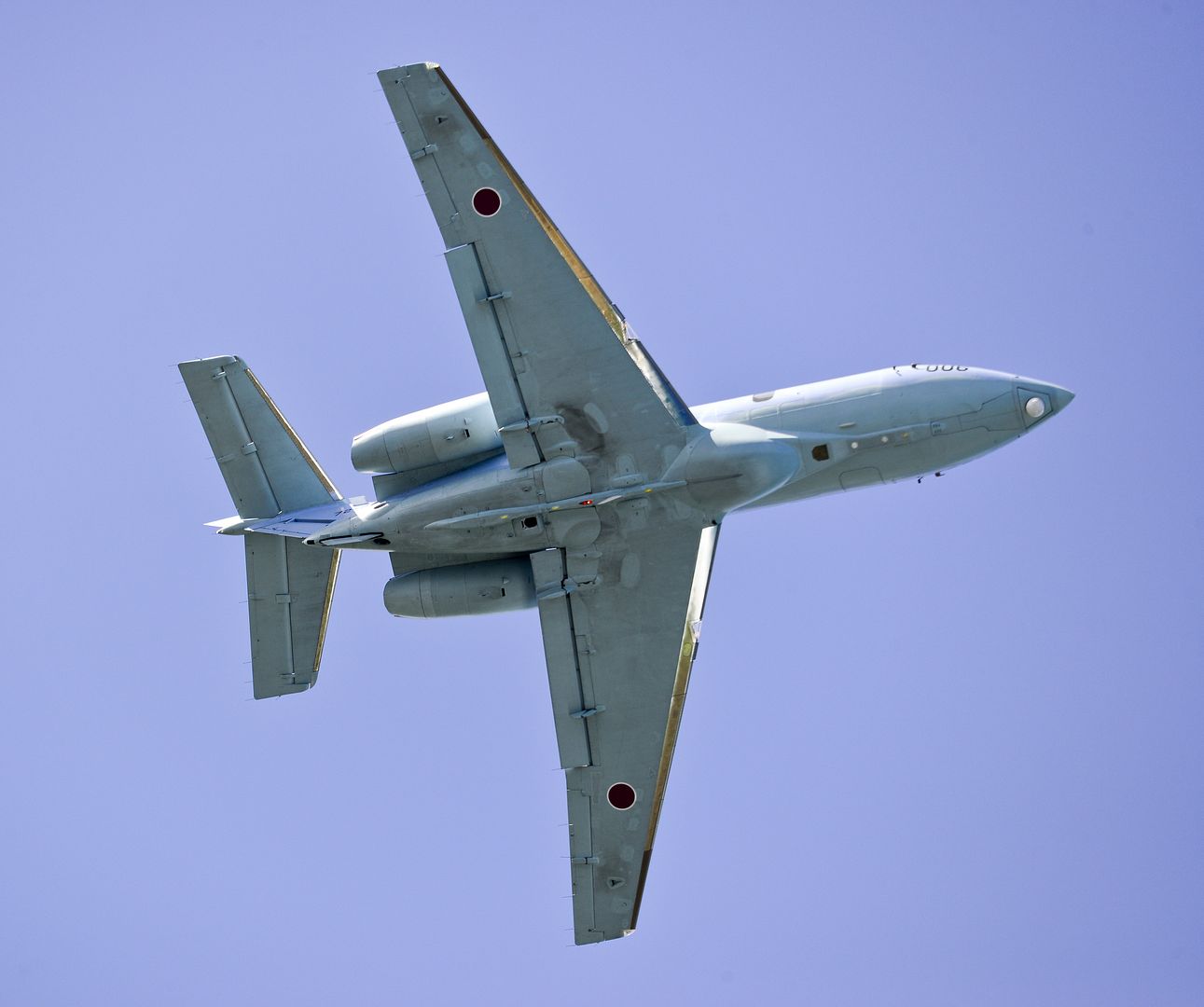
A C-130J Super Hercules lands at Yokota Air Base, Japan, Feb. 22, 2018. Yokota has received its eleventh C-130J from Lockheed Matin Aeronautics Company, Ga., as part of fleet-wide redistribution of assets set in motion by Air Mobility Command. (U.S. Air Force photo by Yasuo Osakabe)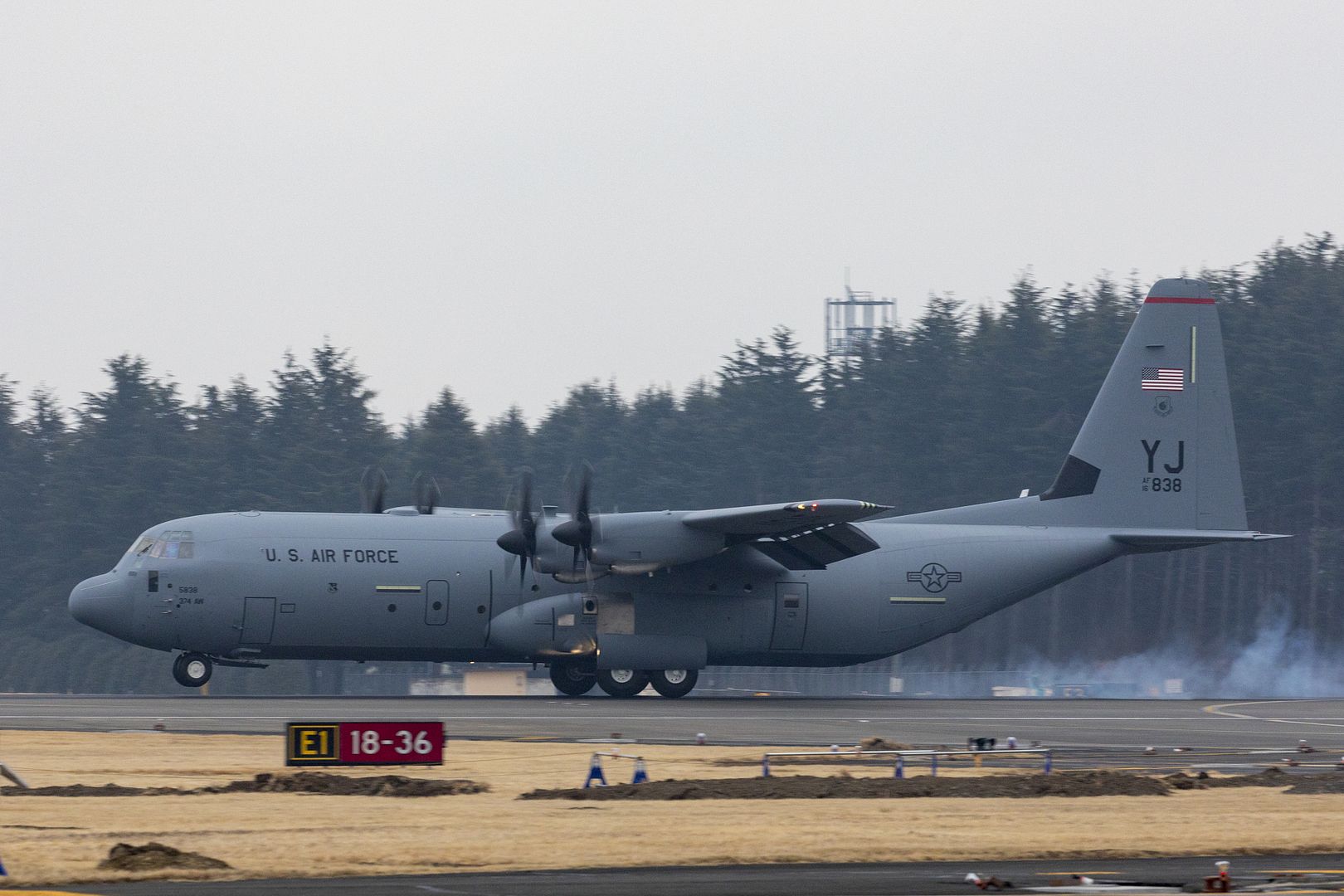
A Royal Netherlands air force F-16 pulls away from a U.S. Air Force KC-135 Stratotanker after aerial refueling over Germany, Feb. 23, 2018. The refueling was part of a NATO exercise including Belgian, Dutch, French and German air forces. (U.S. Air Force photo by Airman 1st Class Luke Milano)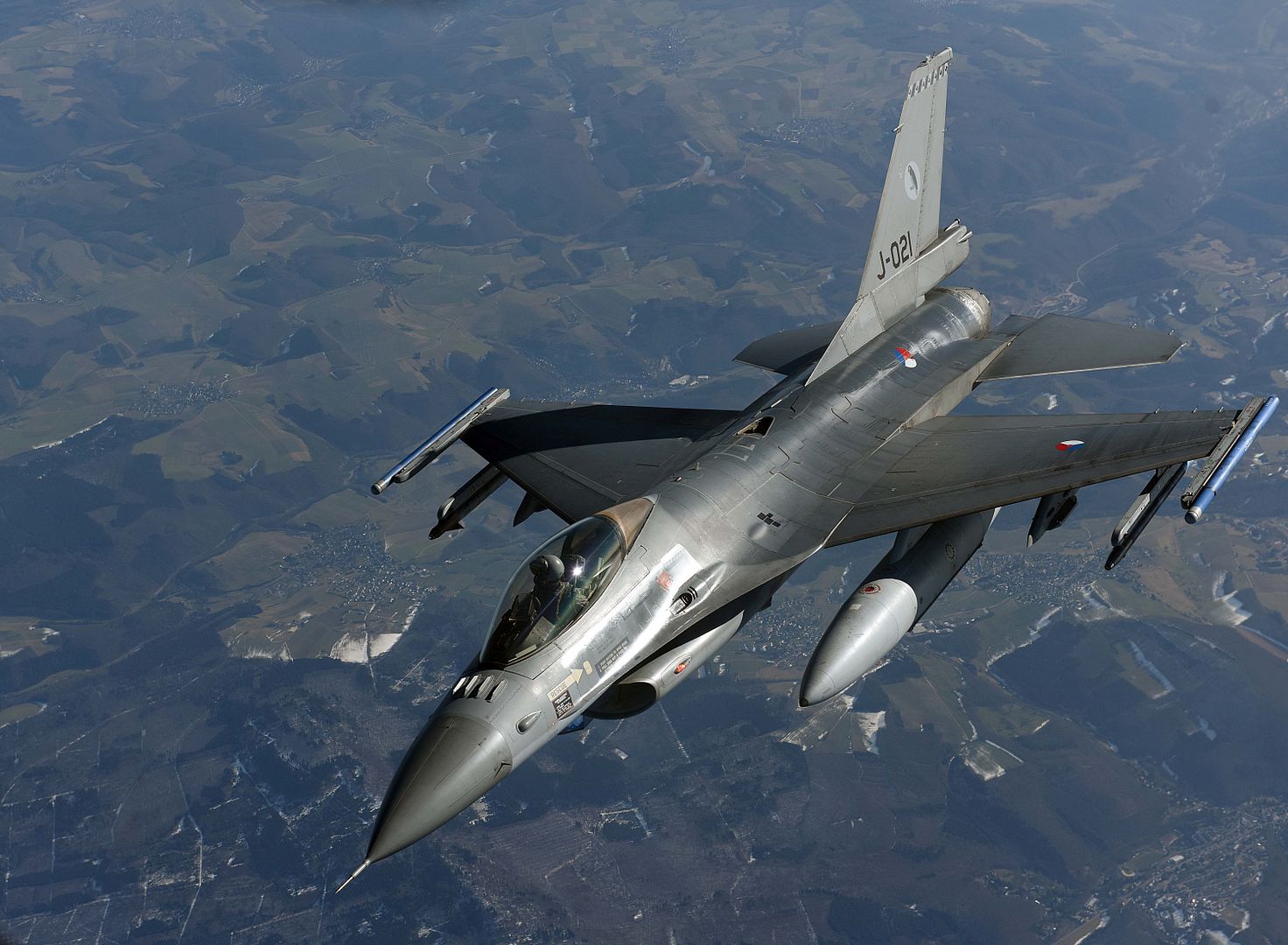
A Belgian air component F-16 flies behind a U.S. Air Force KC-135 Stratotanker before receiving fuel over Germany, Feb. 23, 2018. The air refueling was part of a NATO exercise including Belgian, Dutch, French and German air forces. (U.S. Air Force photo by Airman 1st Class Luke Milano)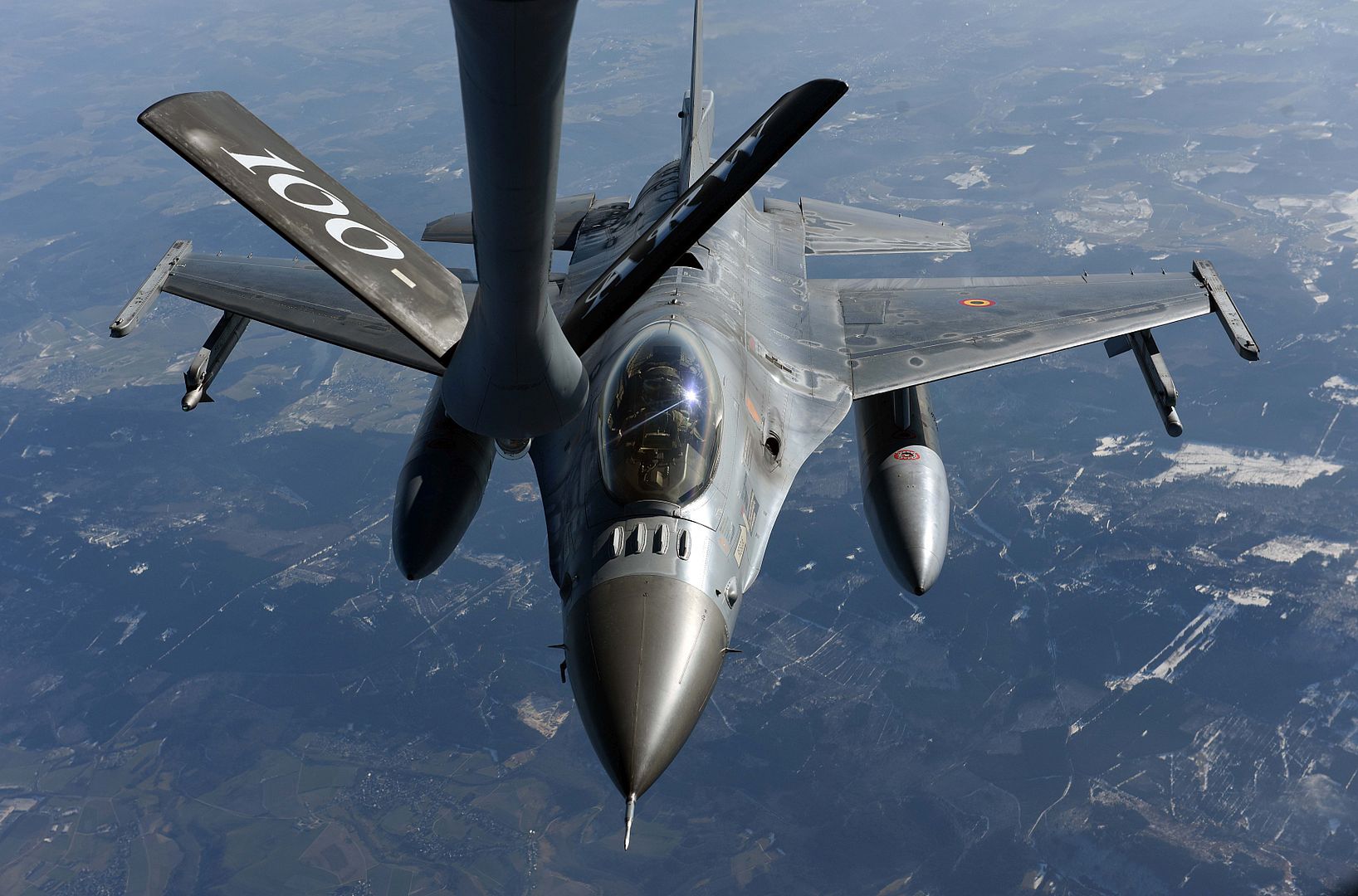
A KC-135 Stratotanker from the 101st Air Refueling Wing refuels F-22 Raptors from the 94th Fighter Squadron over the Atlantic Ocean, Feb. 22, 2018. The 94th FS is the second oldest fighter squadron in the U.S. Air Force; the oldest is the 27th Fighter Squadron, a fellow F-22 unit also stationed at Joint Base Langley-Eustis, Virginia. (U.S. Air Force photo's by Tech. Sgt. Natasha Stannard)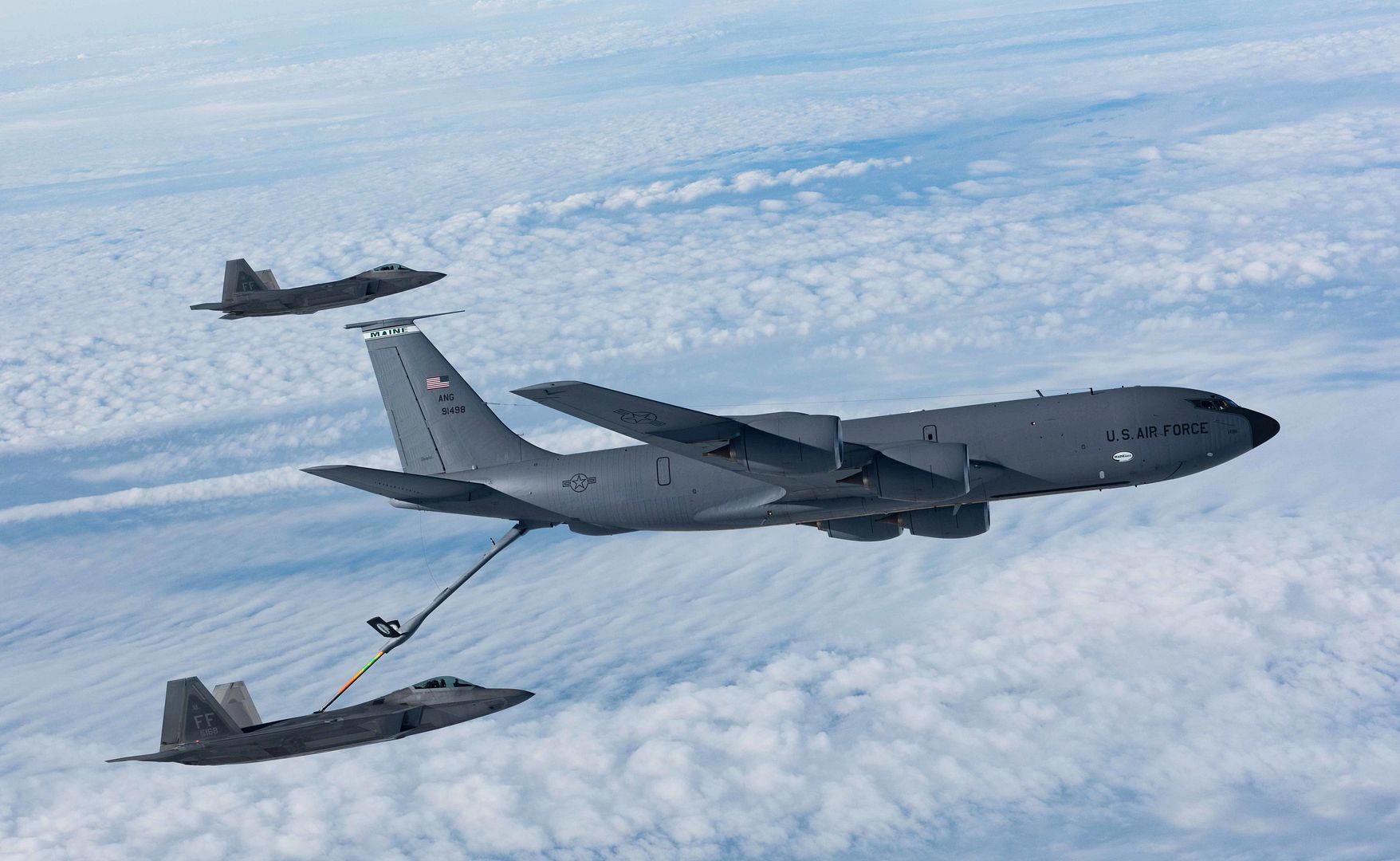
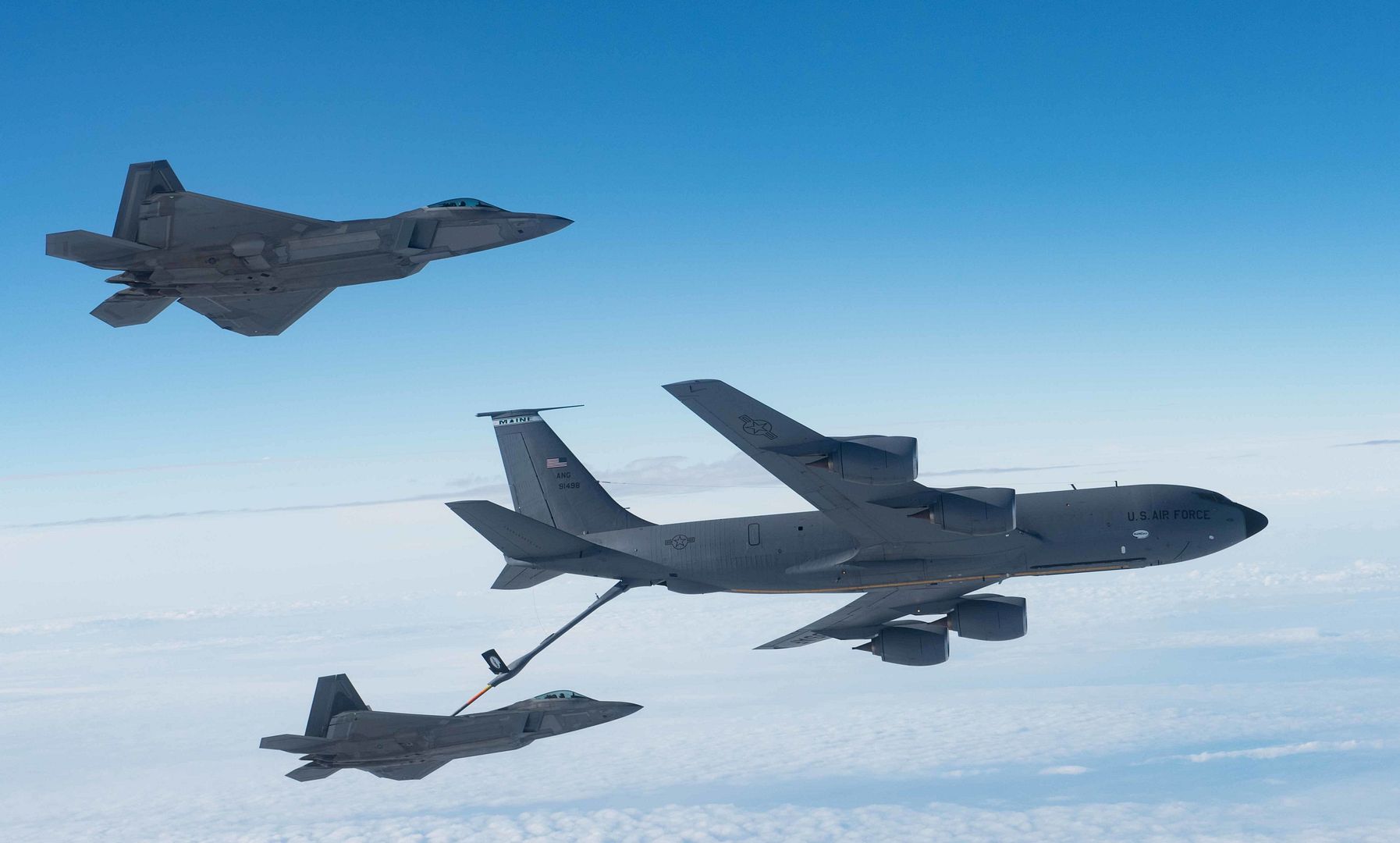

An F-15C Eagle fighter jet assigned to the Oregon Air National Guard?s 123rd Fighter Squadron approaches an in-flight refueling boom during Red Flag 18-1 over the Nevada Test and Training Range Feb. 7, 2018. Units from across the country along with members from the Royal Air Force and Royal Australian Air Force participated as Blue Forces in this year?s first Red Flag exercise. (U.S. Air Force photo by Airman 1st Class Andrew D. Sarver)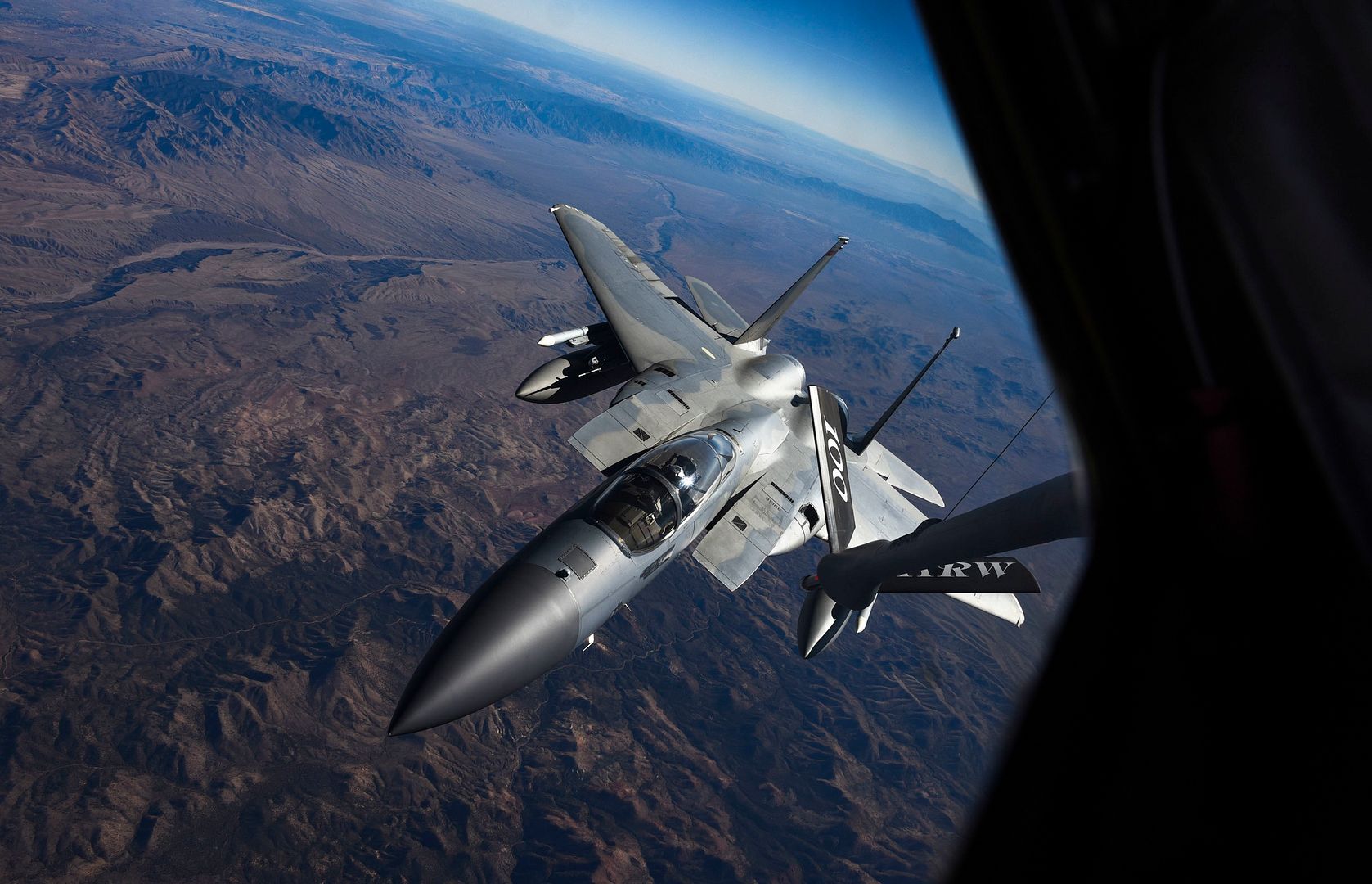
An F-22 Raptor assigned to the 3rd Wing flies over Joint Base Elmendorf-Richardson, Alaska, Feb. 13, 2018. The F-22 is the Air Force?s premium fifth-generation fighter asset. (U.S. Air Force photo by Alejandro Pe?a)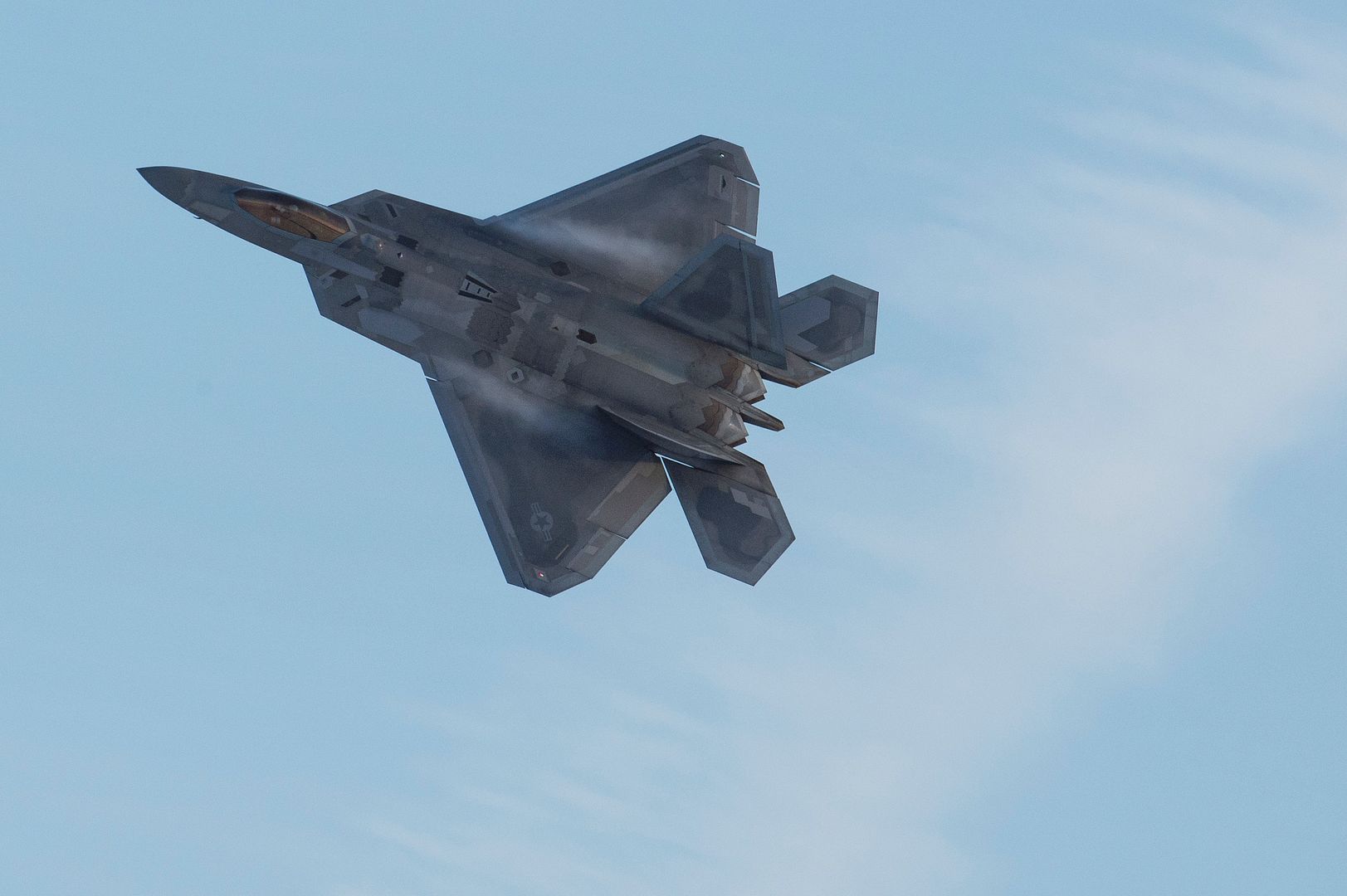
ATLANTIC OCEAN (Feb. 22, 2018) An F/A-18F Super Hornet assigned to the "Red Rippers" of Strike Fighter Squadron (VFA) 11 prepares to launch from the flight deck aboard the aircraft carrier USS Harry S. Truman (CVN 75). Truman is underway for composite training unit exercise (COMPTUEX), which evaluates the strike group's ability as a whole to carry out sustained combat operations from the sea, ultimately certifying the Harry S. Truman Carrier Strike Group for deployment. (U.S. Navy photo by Mass Communication Specialist 3rd Class Rebekah A. Watkins/Released)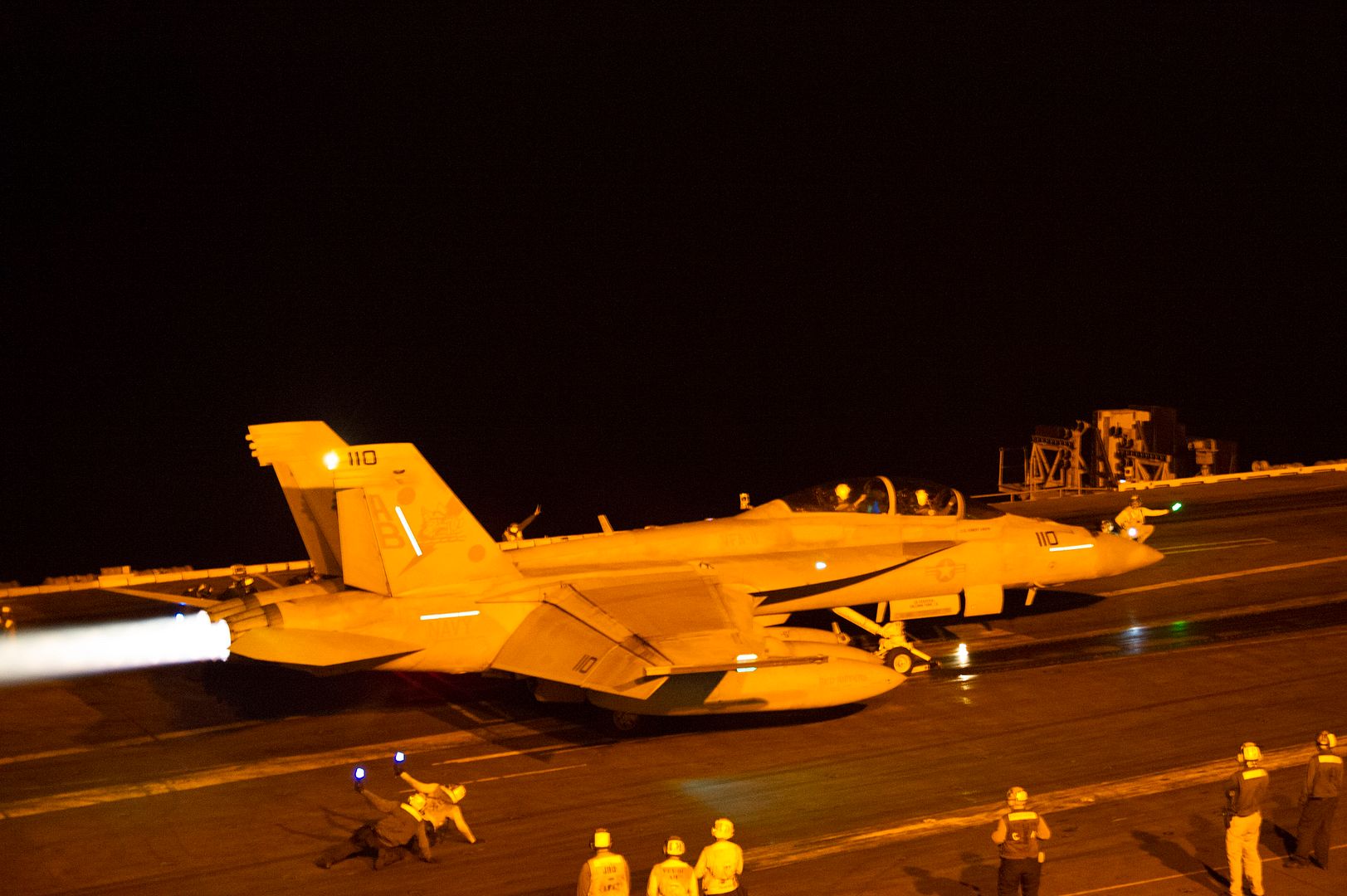
SOUTH CHINA SEA (Feb. 23, 2018) An F/A-18F Super Hornet assigned to the "Bounty Hunters" of Strike Fighter Squadron (VFA) 2 takes off from the flight deck of the Nimitz-class aircraft carrier USS Carl Vinson (CVN 70). The Carl Vinson Strike Group is currently operating in the Western Pacific as part of a regularly scheduled deployment. (U.S. Navy Photo by Mass Communication Specialist 3rd Class Matthew Granito/Released)
ATLANTIC OCEAN (Feb. 21, 2018) An F/A-18F Super Hornet assigned to the "Fighting Checkmates" of Strike Fighter Squadron (VFA) 211 lands aboard the aircraft carrier USS Harry S. Truman (CVN 75). Harry S. Truman is underway for a composite training unit exercise (COMPTUEX), which evaluates the strike group's ability as a whole to carry out sustained combat operations from the sea - ultimately certifying the Harry S. Truman Carrier Strike Group for deployment. (U.S. Navy photo by Mass Communication Specialist 3rd Class Juan Sotolongo/Released)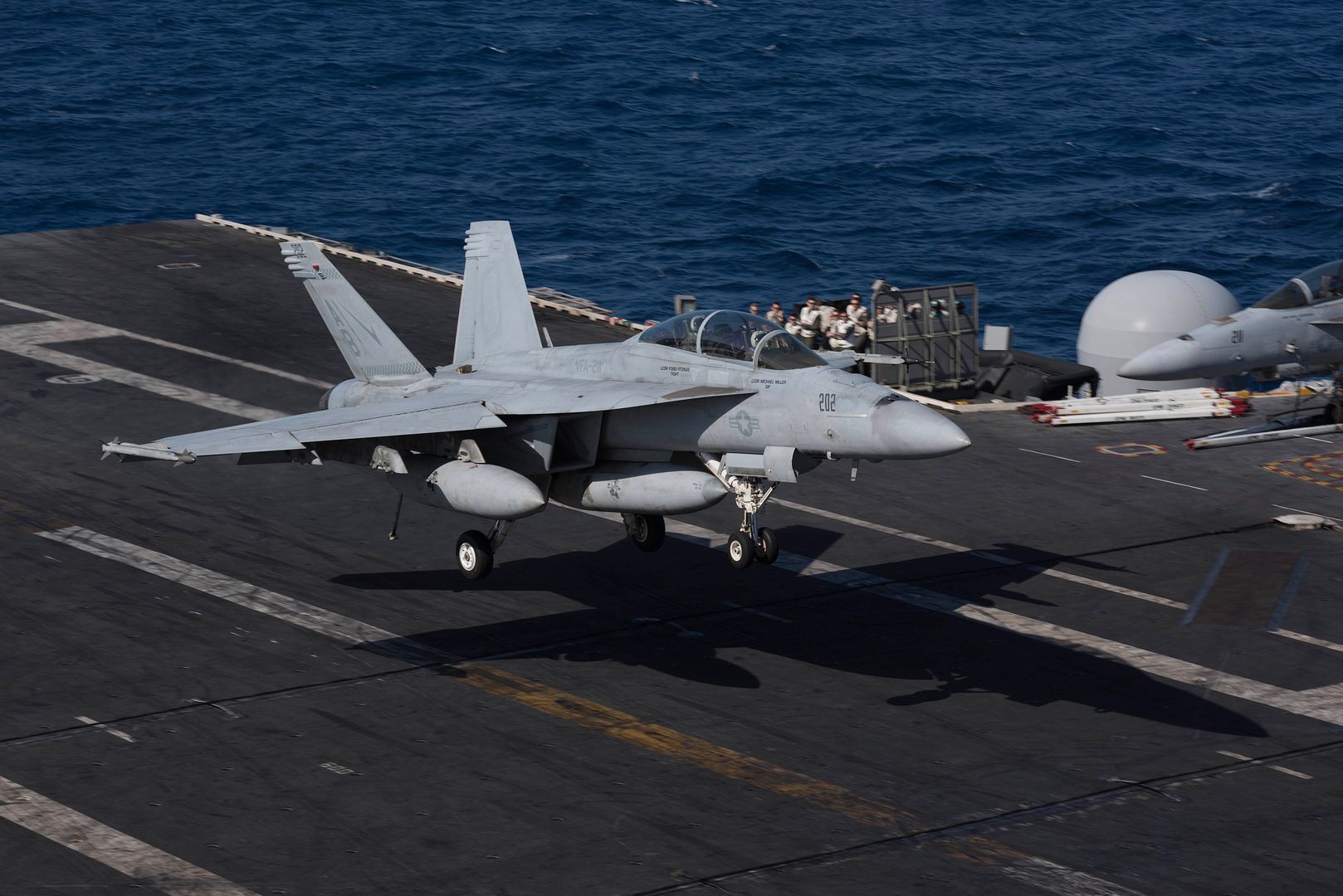
23 February 2018
Today Saab rolls out the first GlobalEye Airborne Early Warning & Control (AEW&C) aircraft to the media at its Link?ping site, Sweden. GlobalEye is an advanced, swing role airborne surveillance system based on a Global 6000 jet aircraft from Bombardier, which has undergone a thorough modification programme to adapt it for its role. The rollout marks a significant milestone on the programme.
Saab is currently producing the GlobalEye AEW&C, combining air, maritime and ground surveillance in one single solution. GlobalEye combines a full suite of sophisticated sensors including the powerful new extended range radar (Erieye ER), with the ultra-long range Global 6000 jet aircraft.
?Saab?s breadth and depth of expertise combines all of the necessary knowledge and technology required to design, develop and produce the most advanced AEW&C systems. Our collective capabilities deliver unrivalled solutions such as GlobalEye,? said Anders Carp, Senior Vice President and Head of Saab?s business area Surveillance. ?This milestone is clear evidence that the GlobalEye programme and Saab are delivering on our commitments.?
This first aircraft is equipped and being prepared for ground and flight trials to gather aerodynamic data as part of the ongoing development and production programme.
The development and production contract was awarded at the Dubai Air Show November 2015 by the United Arab Emirates with an initial order for two systems. An additional order by the UAE for a third system was announced in 2017. The GlobalEye solution brings extended detection range, endurance and the ability to perform multiple roles with one solution, including tasks such as search & rescue, border surveillance and military operations.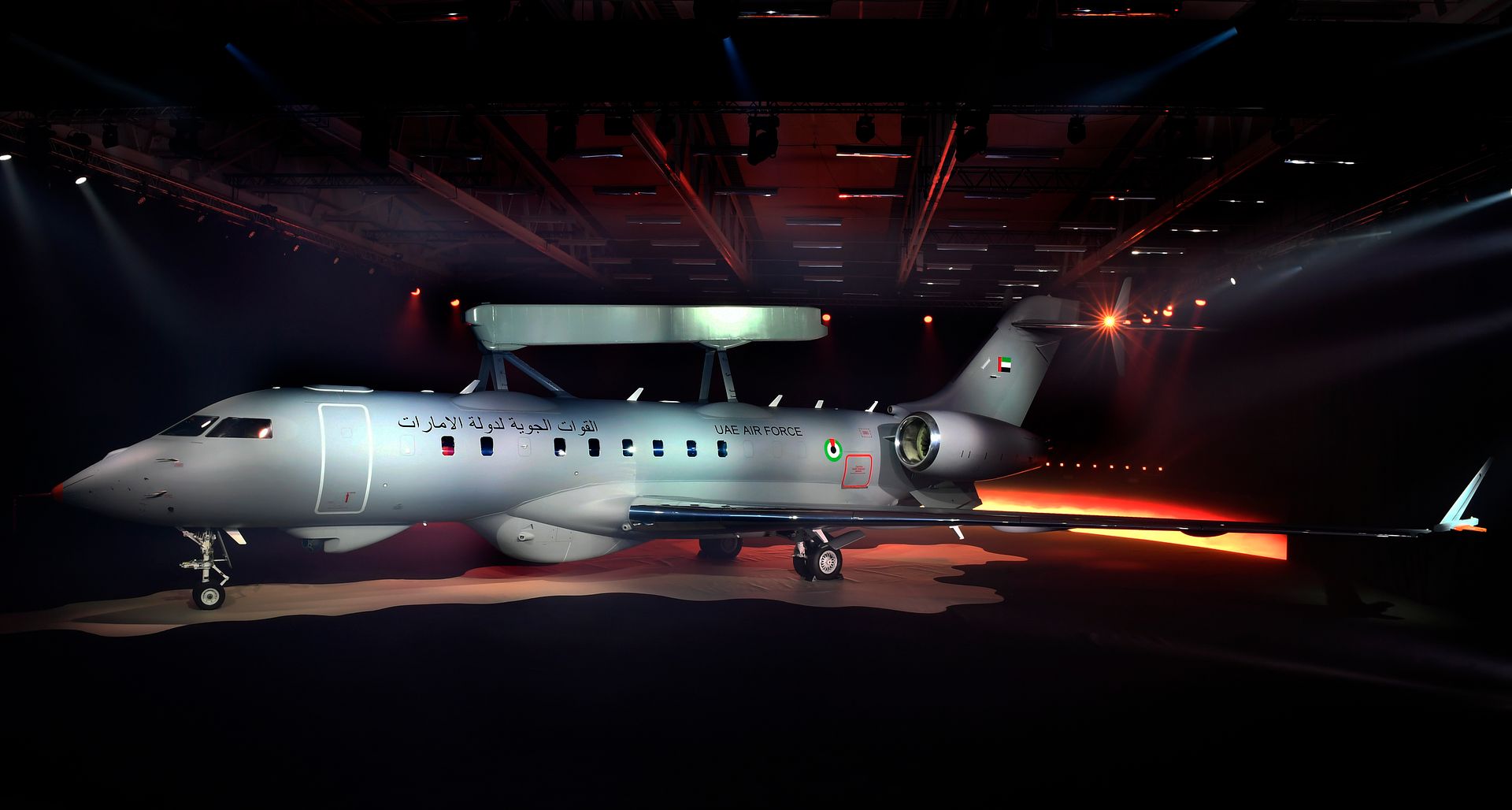
February 23, 2018 Montr?al Business Aircraft, Press Release
Bombardier today announced that deliveries of its best-selling Challenger 350 business jet continue to dominate the super midsize segment and the Medium aircraft category in 2017, according to the annual shipment and billings report published by the General Aviation Manufacturers Association (GAMA). Bombardier delivered 56 Challenger 350 aircraft in 2017, capturing 53 percent of the super midsize segment.
?Thanks to their exceptional cabin comfort, connectivity, reliable performance and ultra-smooth ride, our Challenger 350 business jets continue to lead the market in unit sales and have earned their place as the leading choice among experienced flight departments and charter operators,? said Peter Likoray, Senior Vice President, Sales and Marketing, Bombardier Business Aircraft. ?The result extends a remarkable record for our Challenger 350 aircraft program, which has tallied more deliveries in the last decade than any other business jet platform.?
The Challenger 350 aircraft, which entered service in 2014, has maintained a brisk pace of deliveries in its first years of production, surpassing the 200-delivery mark in 2017.
Exceptional ride quality is an important component of the aircraft?s success, and the Challenger 350 business jet features a smooth and quiet ride that elevates its widely-praised cabin experience to the next level. The aircraft?s optimally-balanced wing, engine and landing gear were designed to provide an exceptionally smooth ride, from takeoff to landing. At the same time, its cabin is optimized with state-of-the-art acoustical insulation that delivers sound levels that are among the lowest in the super midsize segment.
Challenger 350 aircraft: Designed with a no-compromise approach, the Challenger 350 aircraft effortlessly blends powerful performance and sleek styling to deliver an unrivalled private jet experience. Industry-leading connectivity, immersive sound and ergonomically-positioned touch screens are seamlessly integrated to create an intuitive and incomparable cabin experience. Paired with impressive high-performance attributes, the Challenger 350 aircraft is designed to access challenging airfields, climb faster, and cruise efficiently while providing a smooth ride. Standing the test of time, the Challenger 300 aircraft series is the best-selling business jet platform of the last decade.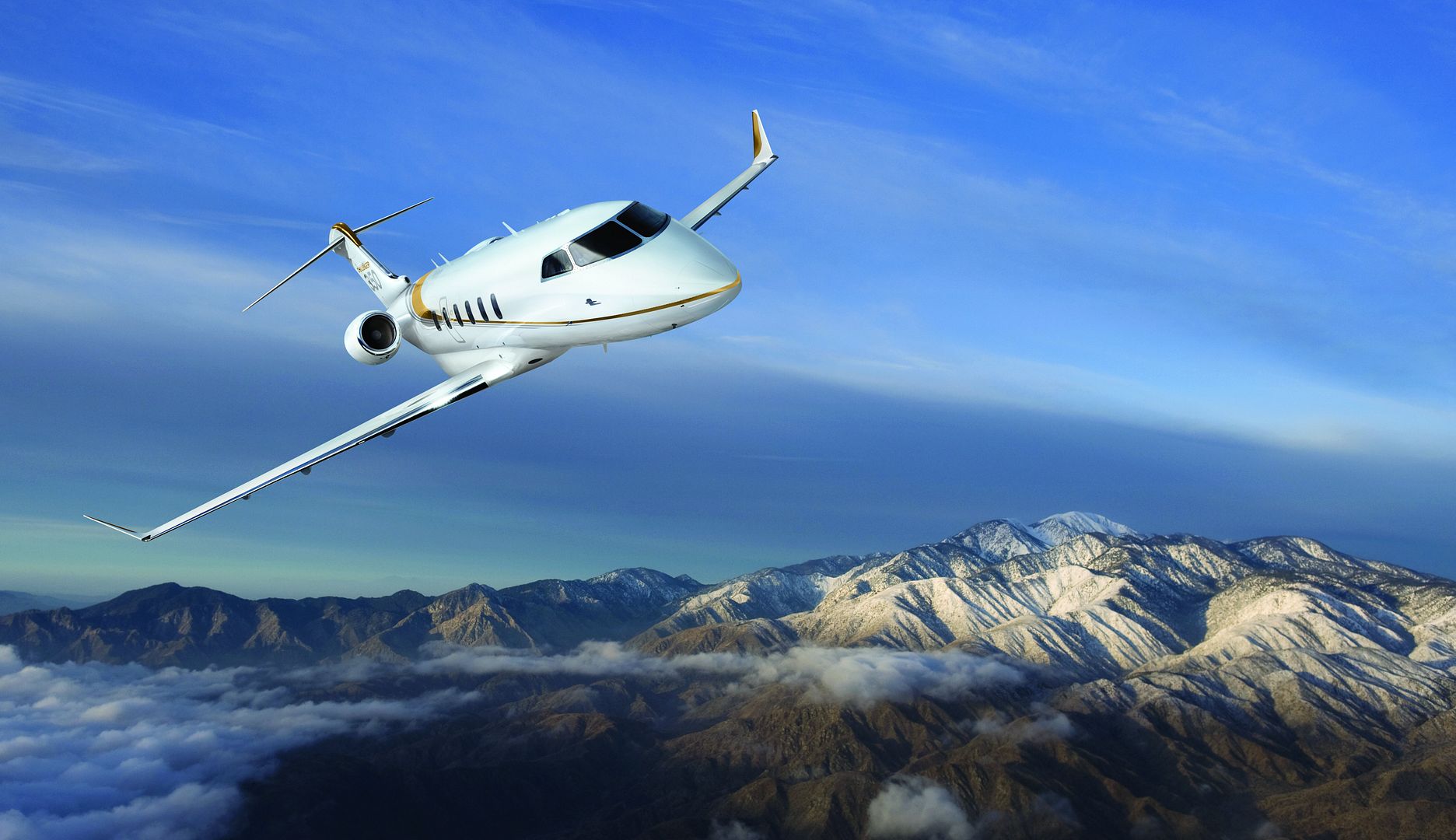
21 February.
A RAAF No. 35 Squadron C-27J Spartan arrives at Andersen Air Force Base, Guam to participate in Exercise Cope North 2018.
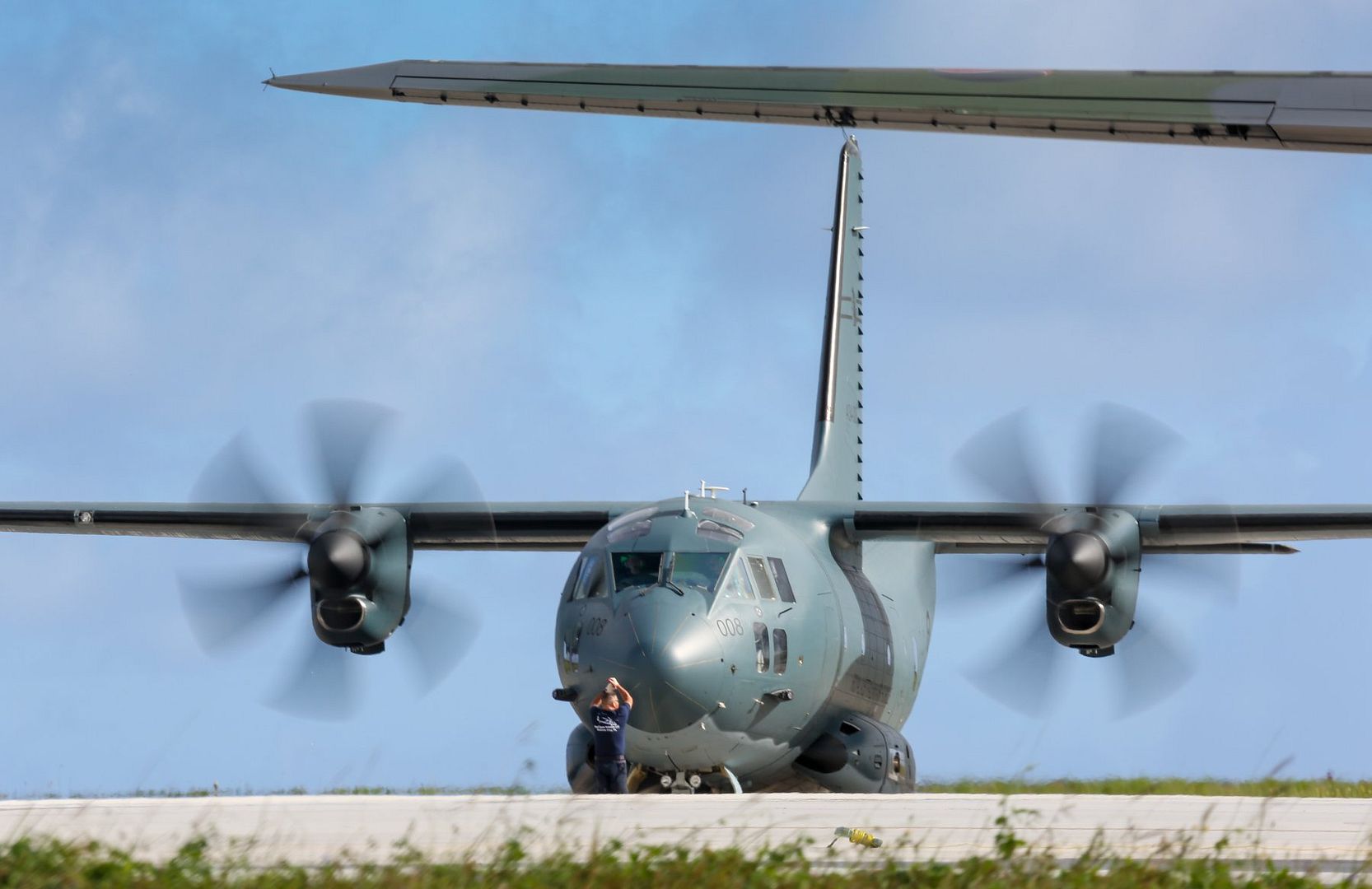
-
 Main AdminARABIAN GULF (Feb. 24, 2018) An EA-18G Growler, assigned to the Cougars of Electronic Attack Squadron (VAQ) 139, launches from the flight deck of the aircraft carrier USS Theodore Roosevelt (CVN 71). Theodore Roosevelt and its carrier strike group are deployed to the U.S. 5th Fleet area of operations in support of maritime security operations to reassure allies and partners and preserve the freedom of navigation and the free flow of commerce in the region. (U.S. Navy photo by Mass Communication Specialist 3rd Class Alex Corona/Released)
Main AdminARABIAN GULF (Feb. 24, 2018) An EA-18G Growler, assigned to the Cougars of Electronic Attack Squadron (VAQ) 139, launches from the flight deck of the aircraft carrier USS Theodore Roosevelt (CVN 71). Theodore Roosevelt and its carrier strike group are deployed to the U.S. 5th Fleet area of operations in support of maritime security operations to reassure allies and partners and preserve the freedom of navigation and the free flow of commerce in the region. (U.S. Navy photo by Mass Communication Specialist 3rd Class Alex Corona/Released)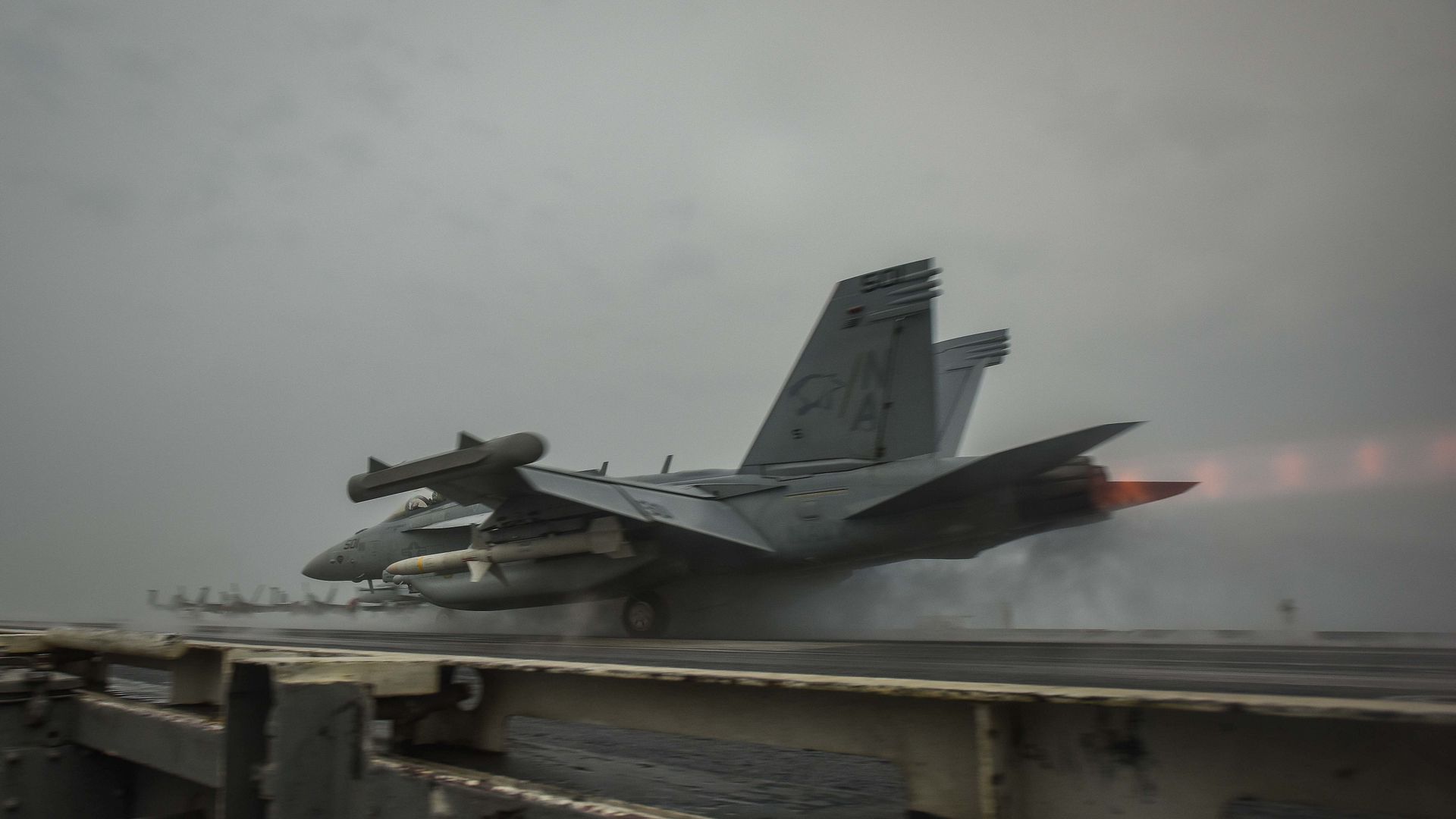
ARABIAN GULF (Feb. 24, 2018) An F/A-18E Super Hornet, assigned to the Stingers of Strike Fighter Attack Squadron (VFA) 113, launches from the flight deck of the aircraft carrier USS Theodore Roosevelt (CVN 71). Theodore Roosevelt and its carrier strike group are deployed to the U.S. 5th Fleet area of operations in support of maritime security operations to reassure allies and partners and preserve the freedom of navigation and the free flow of commerce in the region. (U.S. Navy photo by Mass Communication Specialist 3rd Class Alex Corona/Released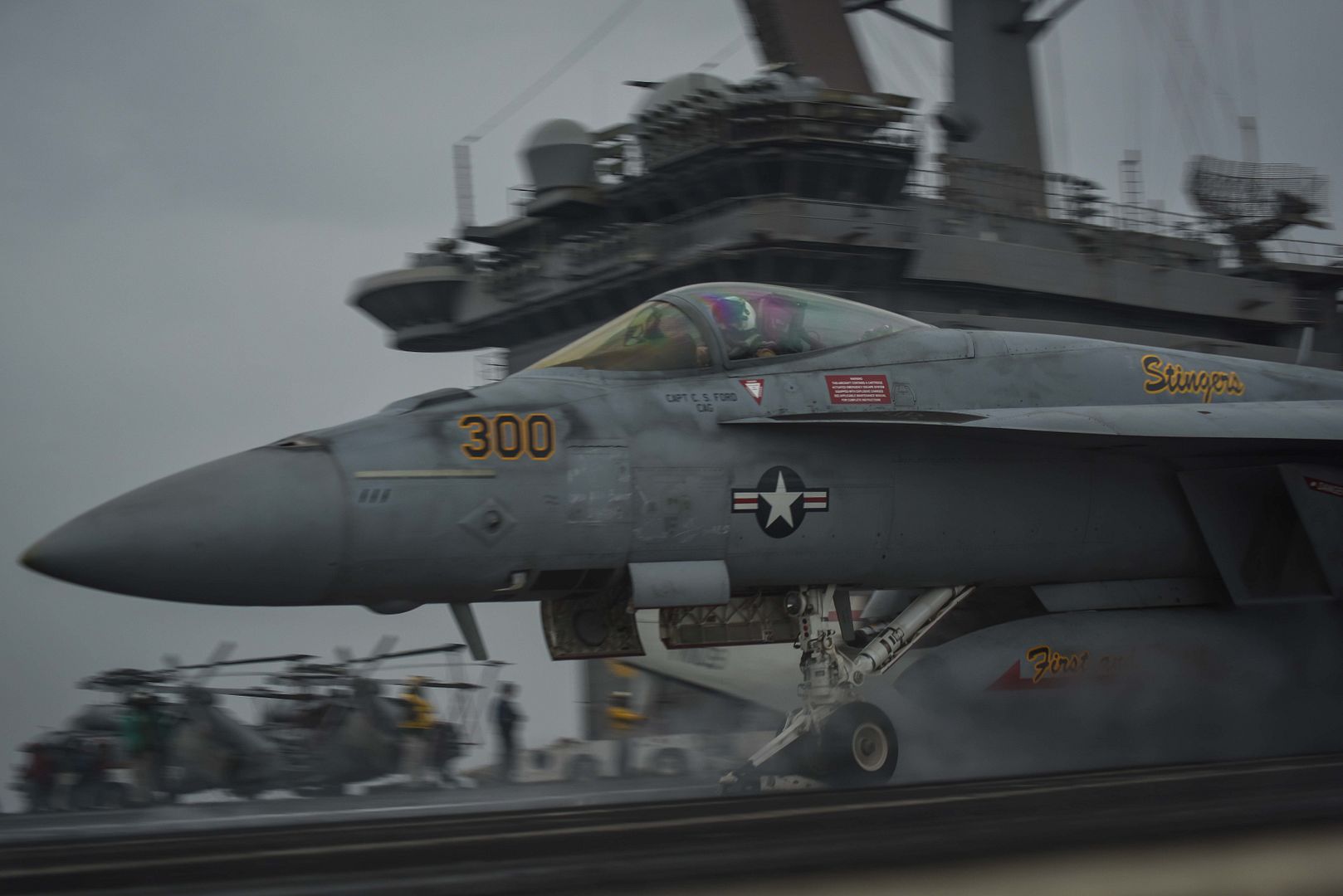
ARABIAN GULF (Feb. 25, 2018) An F/A-18F Super Hornet, assigned to the Fighting Redcocks of Strike Fighter Attack Squadron (VFA) 22, sits on the flight deck of the aircraft carrier USS Theodore Roosevelt (CVN 71). Theodore Roosevelt and its carrier strike group are deployed to the U.S. 5th Fleet area of operations in support of maritime security operations to reassure allies and partners and preserve the freedom of navigation and the free flow of commerce in the region. (U.S. Navy photo by Mass Communication Specialist 3rd Class Alex Perlman/Released)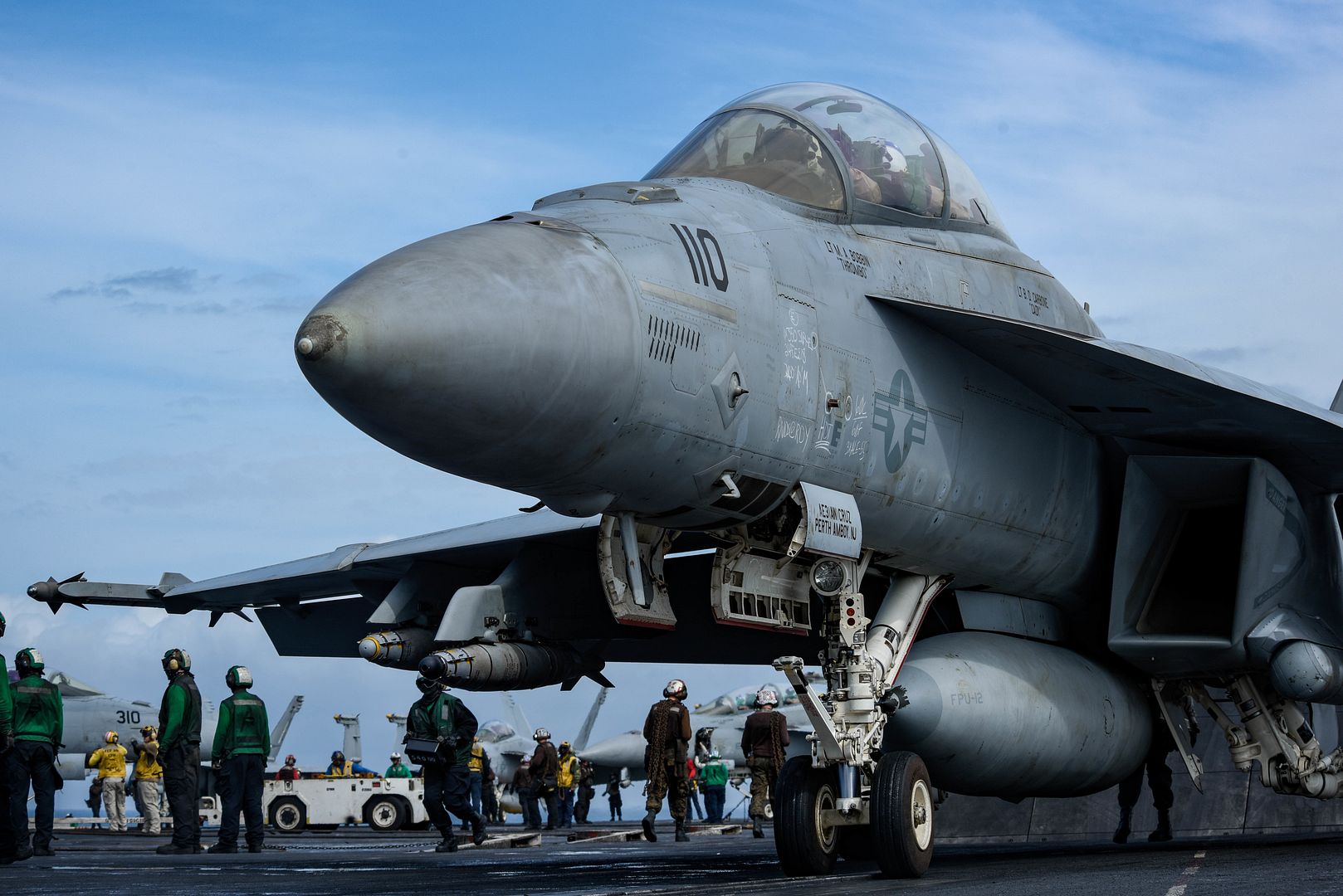
ARABIAN GULF (Feb. 25, 2018) An F/A-18F Super Hornet, assigned to the Fighting Redcocks of Strike Fighter Attack Squadron (VFA) 22, readies for launch from the flight deck of the aircraft carrier USS Theodore Roosevelt (CVN 71). Theodore Roosevelt and its carrier strike group are deployed to the U.S. 5th Fleet area of operations in support of maritime security operations to reassure allies and partners and preserve the freedom of navigation and the free flow of commerce in the region. (U.S. Navy photo by Mass Communication Specialist 3rd Class Alex Corona/Released)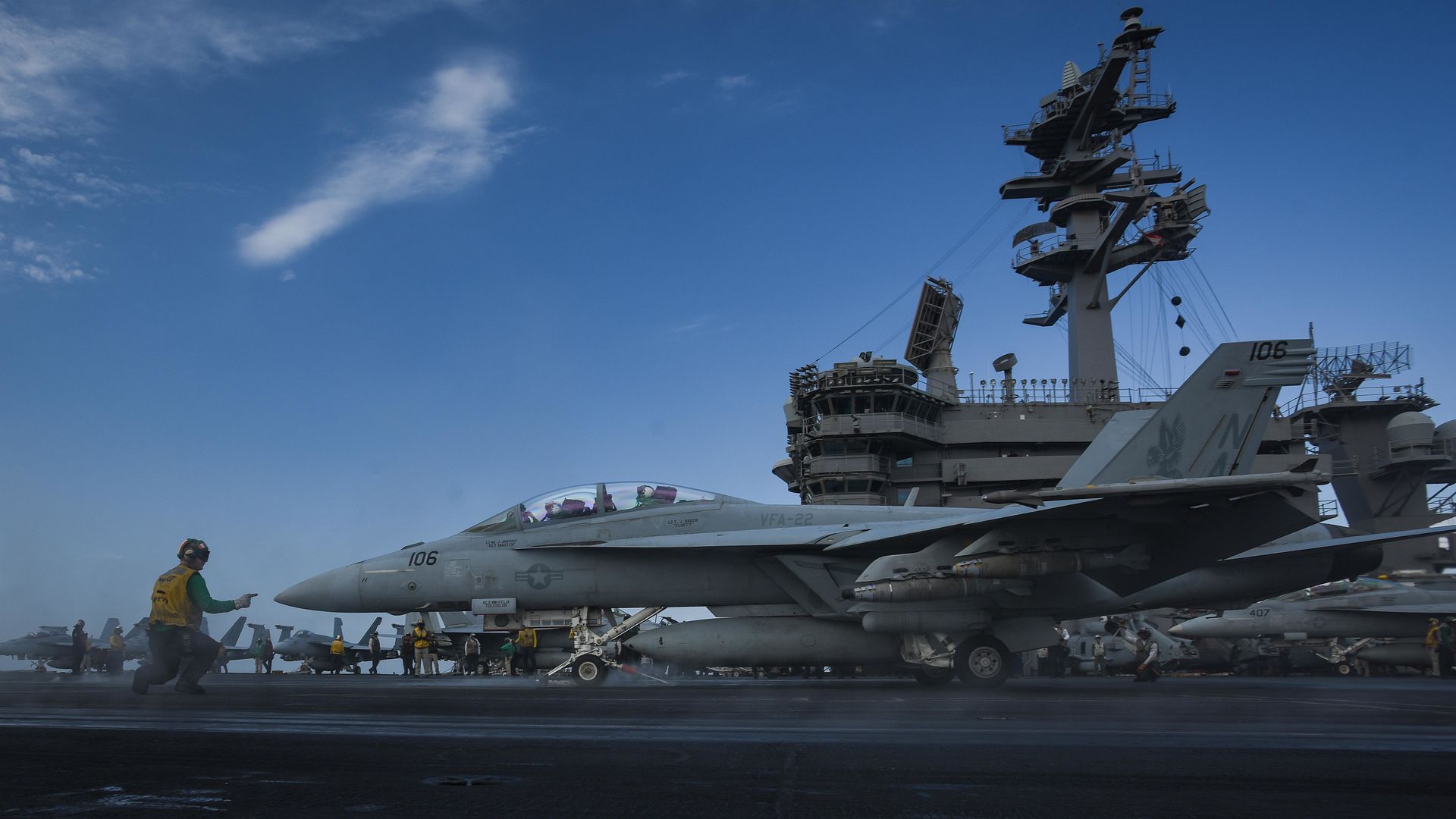
ARABIAN GULF (Feb. 25, 2018) An F/A-18E Super Hornet, assigned to the Stingers of Strike Fighter Attack Squadron (VFA) 113, launches from the flight deck of the aircraft carrier USS Theodore Roosevelt (CVN 71). Theodore Roosevelt and its carrier strike group are deployed to the U.S. 5th Fleet area of operations in support of maritime security operations to reassure allies and partners and preserve the freedom of navigation and the free flow of commerce in the region. (U.S. Navy photo by Mass Communication Specialist 3rd Class Alex Corona/Released)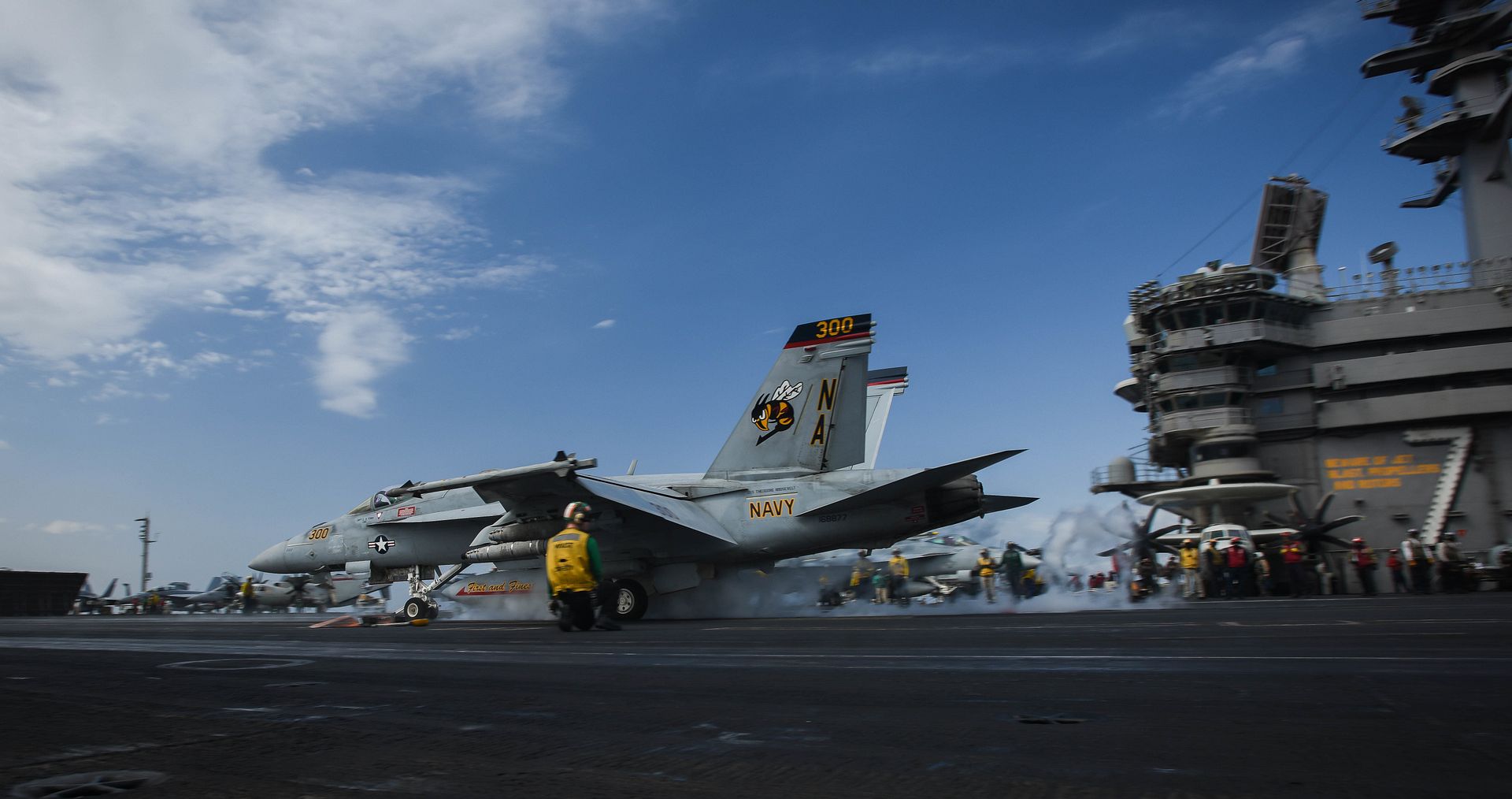
A Koku Jieitai (Japanese Air Self-Defense Force) C-130H Hercules lands on Tinian, U.S. Commonwealth of the Northern Marianas Islands, during exercise COPE NORTH 18, Feb. 21. Through exercises and engagements during COPE NORTH, United States Air Force, Koku Jieitai (Japan Air Self-Defense Force) and Royal Australian Air Force increase interoperability for humanitarian assistance/disaster relief operations. (U.S. Air Force photo by Airman 1st Class Christopher Quail)
A pair of HH-60 Pave Hawk helicopters receive fuel from a HC-130J Combat King II cargo aircraft during a training mission over the Nevada Test and Training Range Feb. 22, 2018. The HC-130J is designed to conduct personnel recovery missions, provide a command and control platform, in-flight refuel helicopters, and carry supplemental fuel for extending range or air refueling. (U.S. Air Force photo's by Senior Airman Kevin Tanenbaum)
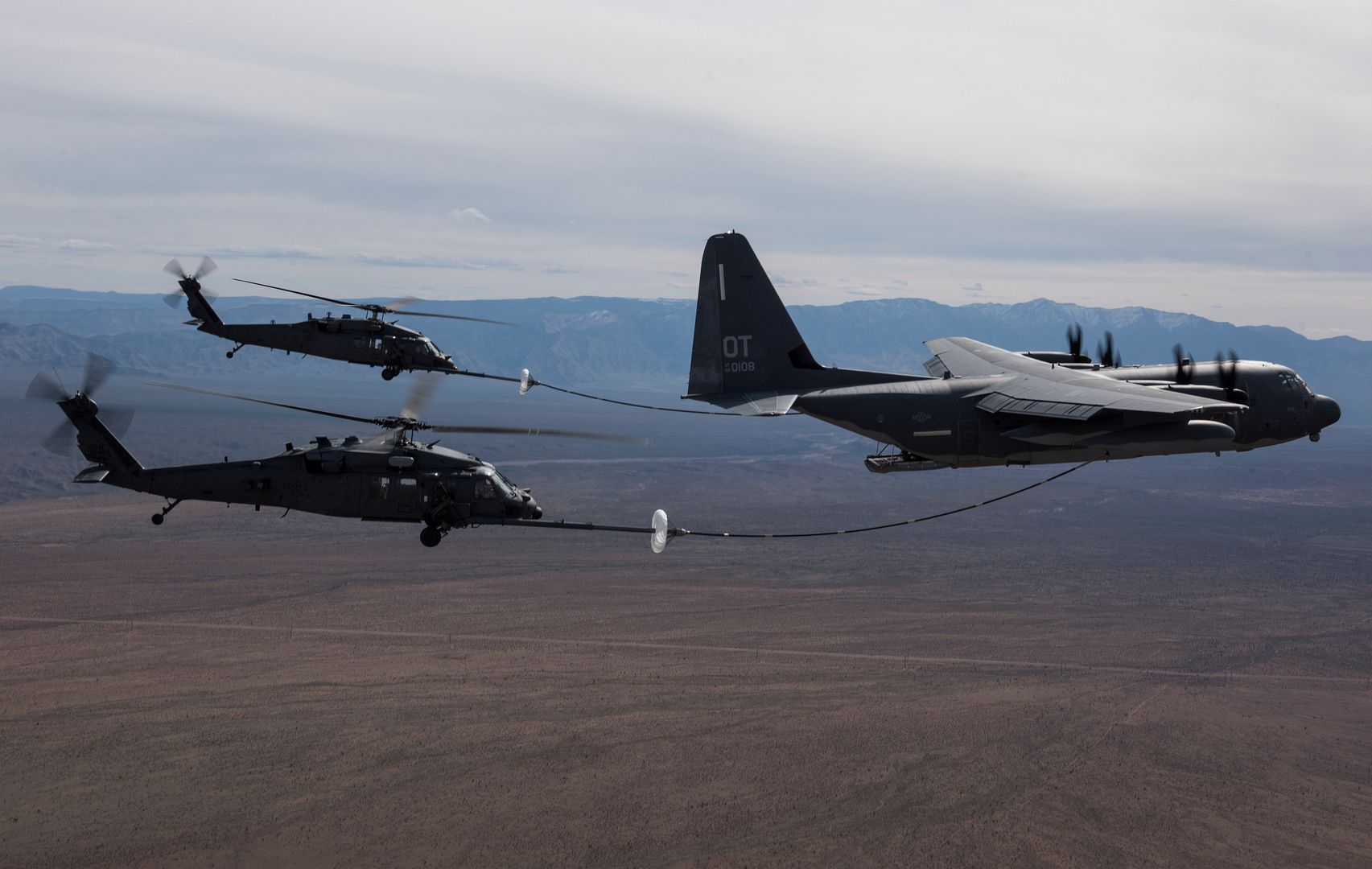
SOUTH CHINA SEA (Feb. 23, 2018) An F/A-18F Super Hornet assigned to the "Bounty Hunters" of Strike Fighter Squadron (VFA) 2 flies over the Nimitz-class aircraft carrier USS Carl Vinson (CVN 70). The Carl Vinson carrier Strike Group is operating in the western Pacific as part of a scheduled deployment. (U.S. Navy photo by Mass Communication Specialist 2nd Class John Grandin/Released
SOUTH CHINA SEA (Feb. 23, 2018) An F/A-18E Super Hornet assigned to the "Golden Dragons" of Strike Fighter Squadron (VFA) 192 flies near the Nimitz-class aircraft carrier USS Carl Vinson (CVN 70). The Carl Vinson Carrier Strike Group is operating in the western Pacific as part of a scheduled deployment. (U.S. Navy photo by Mass Communication Specialist 3rd Class Matthew Granito/Released)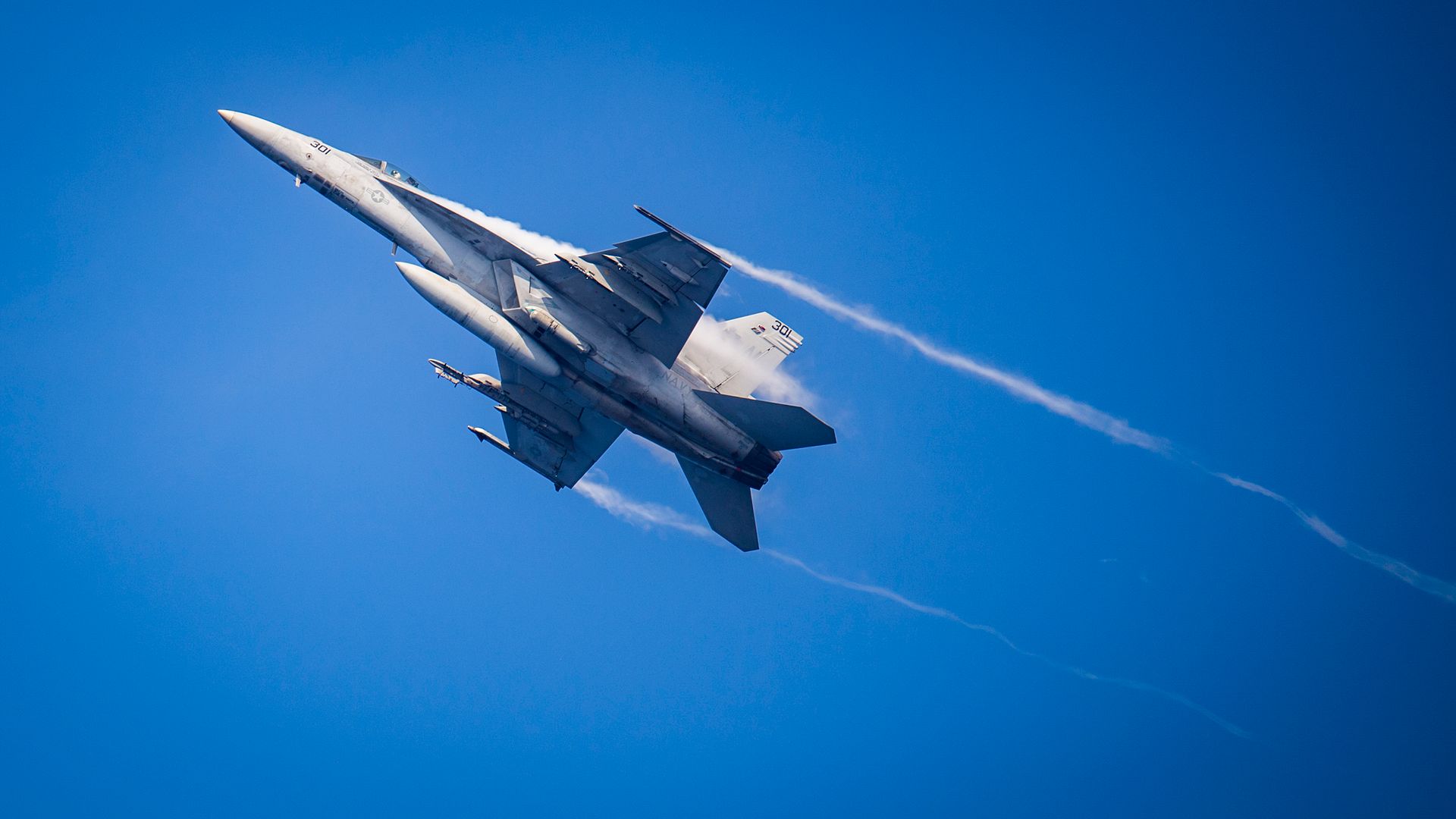
-
 Main AdminTwelve U.S. Air Force KC-135 Stratotankers assigned to the 100th Air Refueling Wing taxi down the runway at RAF Mildenhall, England, Feb. 27, 2018. The show of force maneuver demonstrates the readiness of the wing to provide global air refueling support at short notice. (U.S. Air Force photo by Senior Airman Justine Rho)
Main AdminTwelve U.S. Air Force KC-135 Stratotankers assigned to the 100th Air Refueling Wing taxi down the runway at RAF Mildenhall, England, Feb. 27, 2018. The show of force maneuver demonstrates the readiness of the wing to provide global air refueling support at short notice. (U.S. Air Force photo by Senior Airman Justine Rho)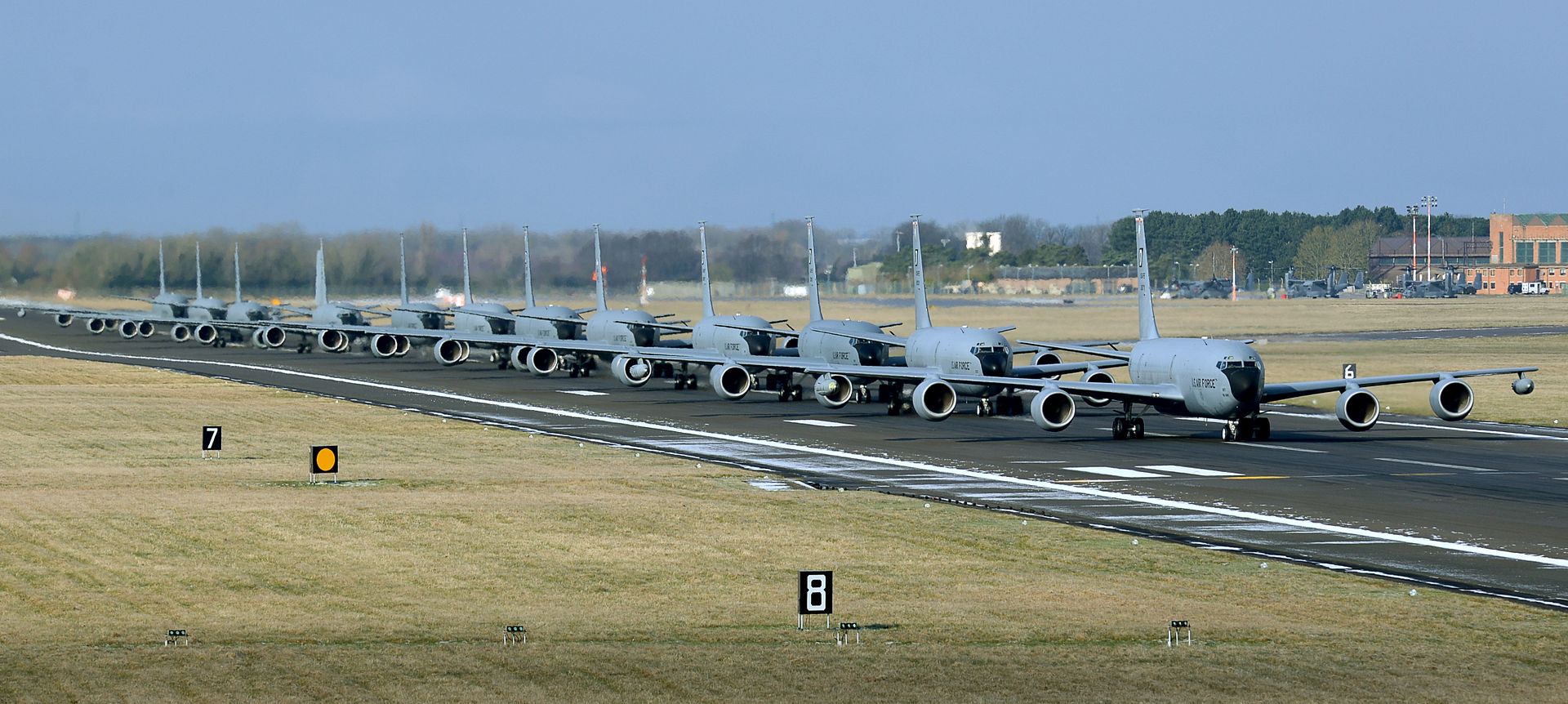
An F-22 Raptor from the 199th Fighter Squadron, Hawaii Air National Guard takes off February 21, 2018, at Joint Base Pearl Harbor-Hickam in Honolulu, Hawaii. The Raptors mission is to provide constant alert air defense for the Hawaiian Islands. (U.S. Air National Guard photo by Staff Sgt. Michael J. Kelly)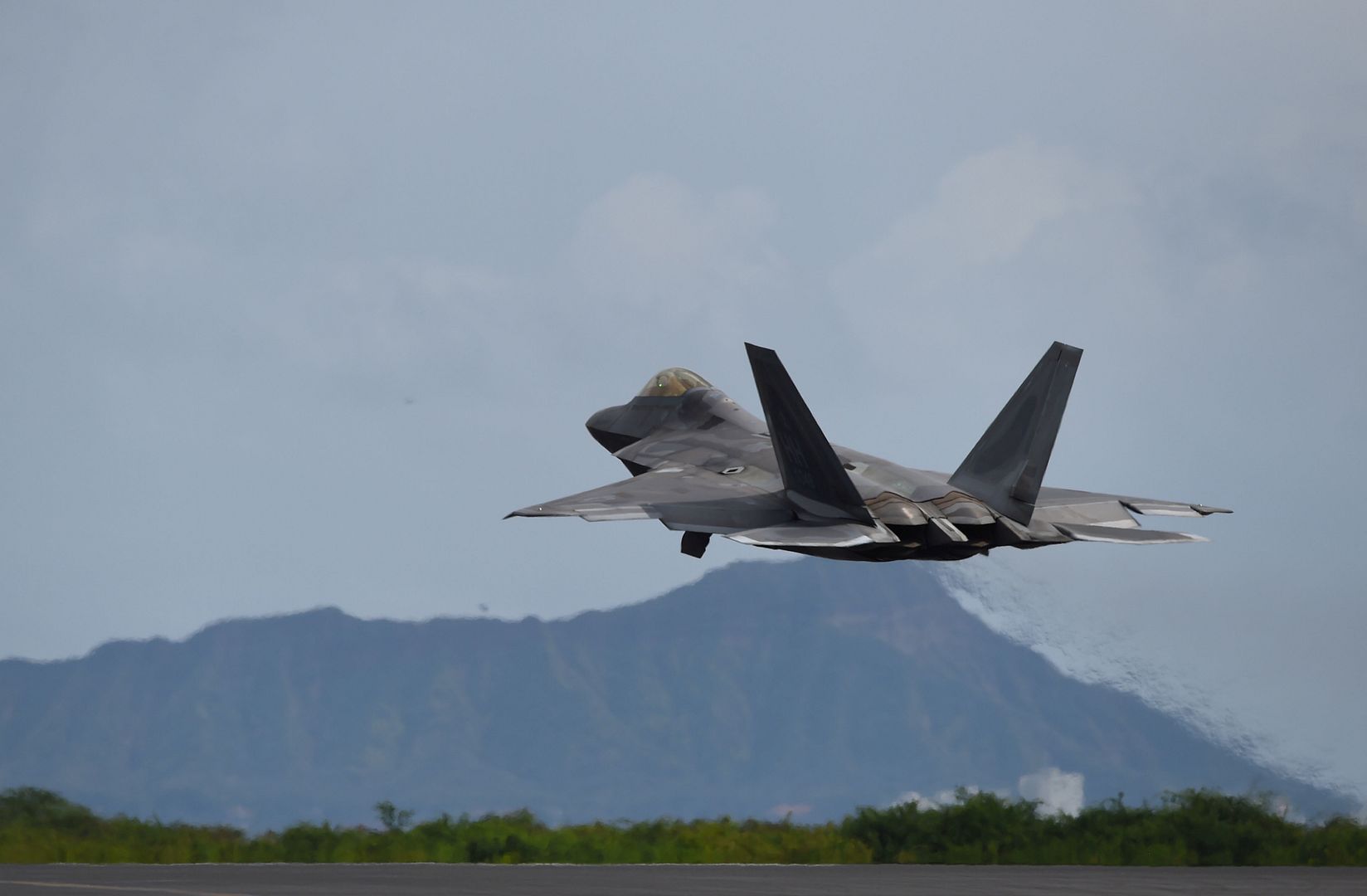
An F-22 Raptor taxis down the runway after landing at Joint Base Pearl Harbor-Hickam on February 21, 2018, in Honolulu, Hawaii. The Raptors mission is to provide constant alert air defense for the Hawaiian Islands. (U.S. Air National Guard photo by Staff Sgt. Michael J. Kelly)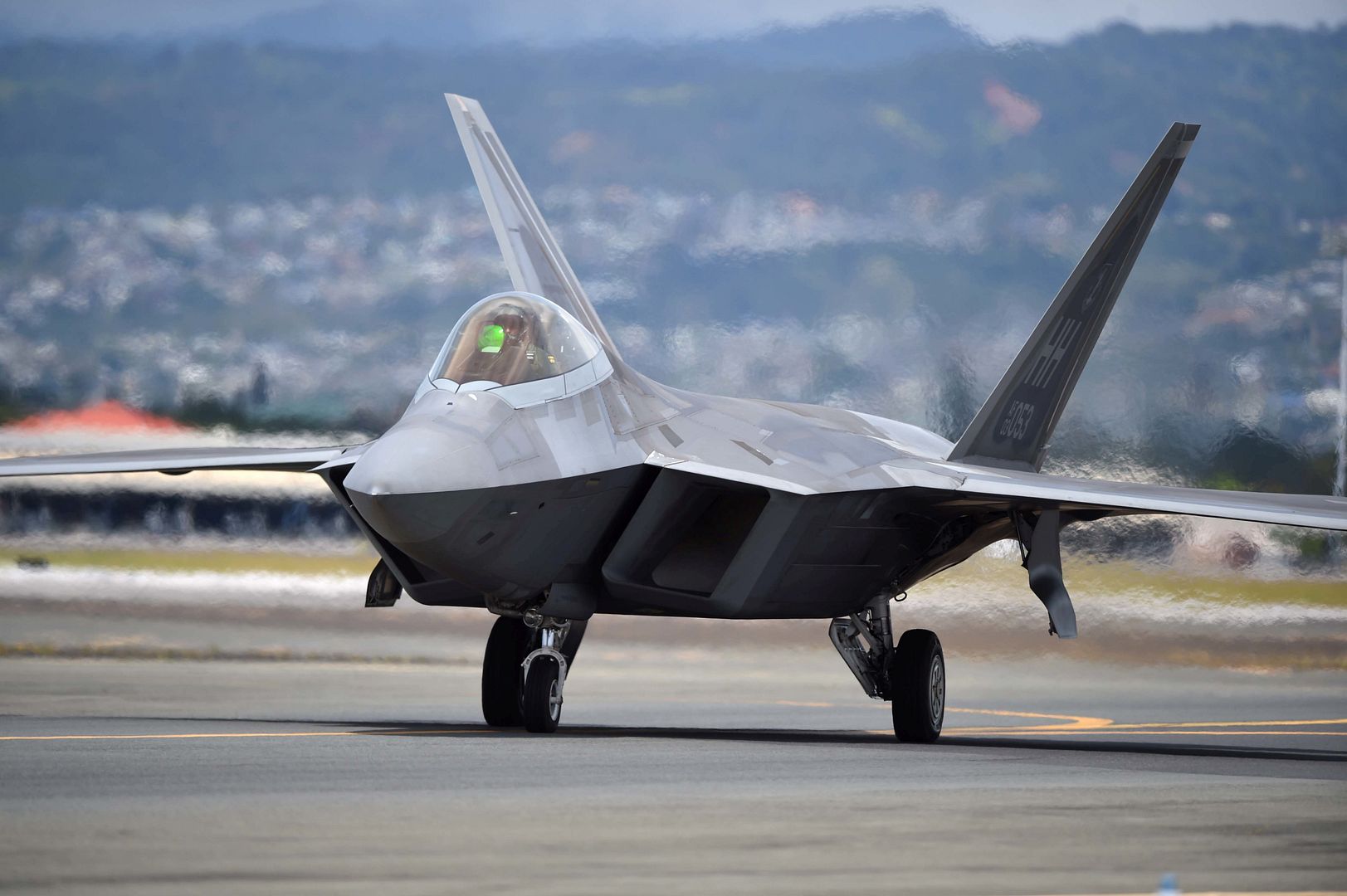
A U.S. Air Force F-15C Eagle with the 104th Fighter Wing, Massachusetts Air National Guard departs after being refueled a KC-10 Extender crewed by Reserve Citizen Airmen with the 76th Air Refueling Squadron, 514th Air Mobility Wing, during a joint training mission over the Atlantic Ocean Feb. 23, 2018. The 514th is an Air Force Reserve Command unit located at Joint Base McGuire-Dix-Lakehurst, N.J. The 104th is from Barnes Air National Guard Base, Mass. (U.S. Air Force photo by Master Sgt. Mark C. Olsen)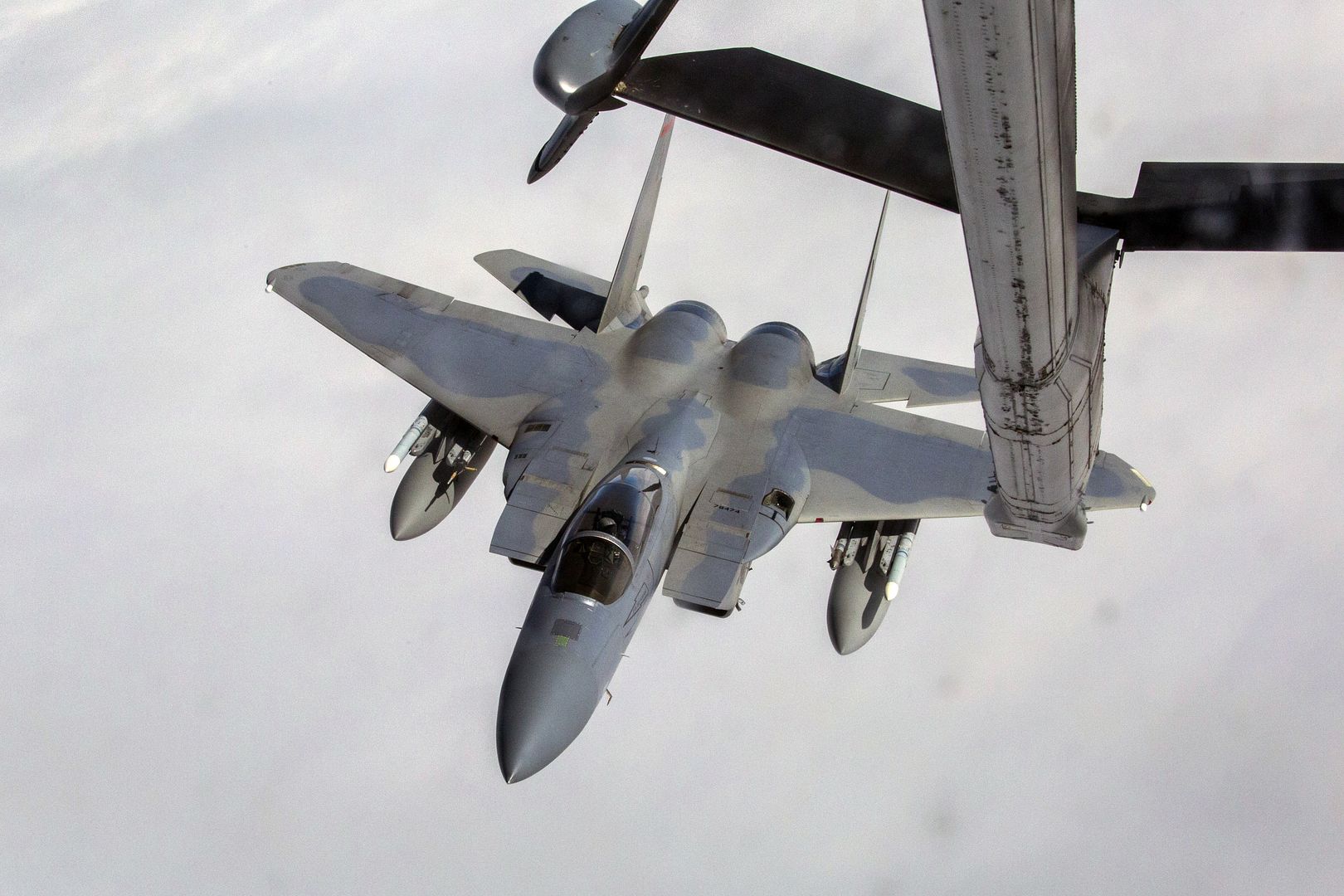
A U.S Air Force KC-10 Extender crewed by Reserve Citizen Airmen with the 76th Air Refueling Squadron, 514th Air Mobility Wing, refuels an F-15C Eagle with the 104th Fighter Wing, Massachusetts Air National Guard from Barnes Air National Guard Base, Mass., during a joint training mission over the Atlantic Ocean Feb. 23, 2018. The 514th is an Air Force Reserve Command unit located at Joint Base McGuire-Dix-Lakehurst, N.J. (U.S. Air Force photo's by Master Sgt. Mark C. Olsen)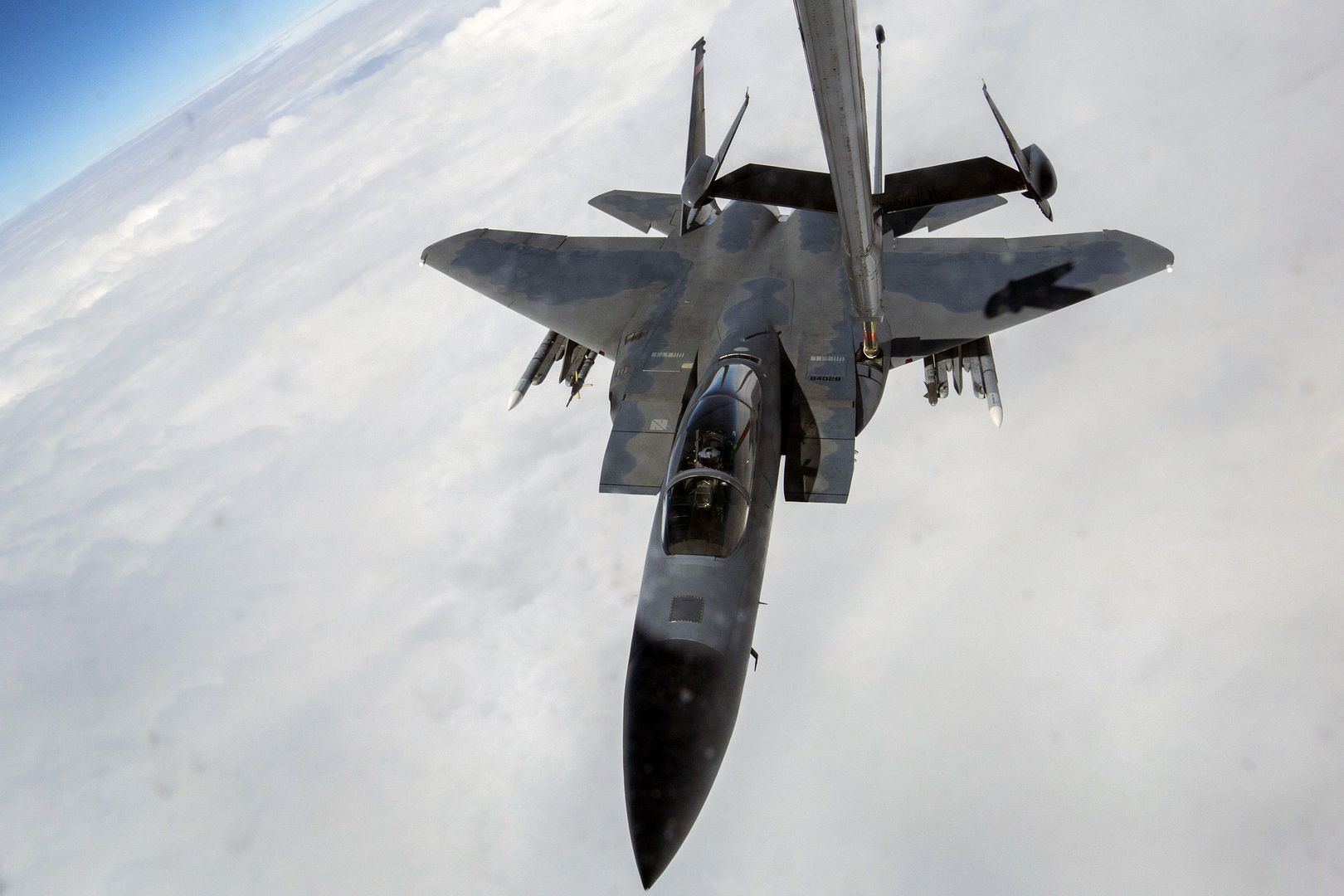
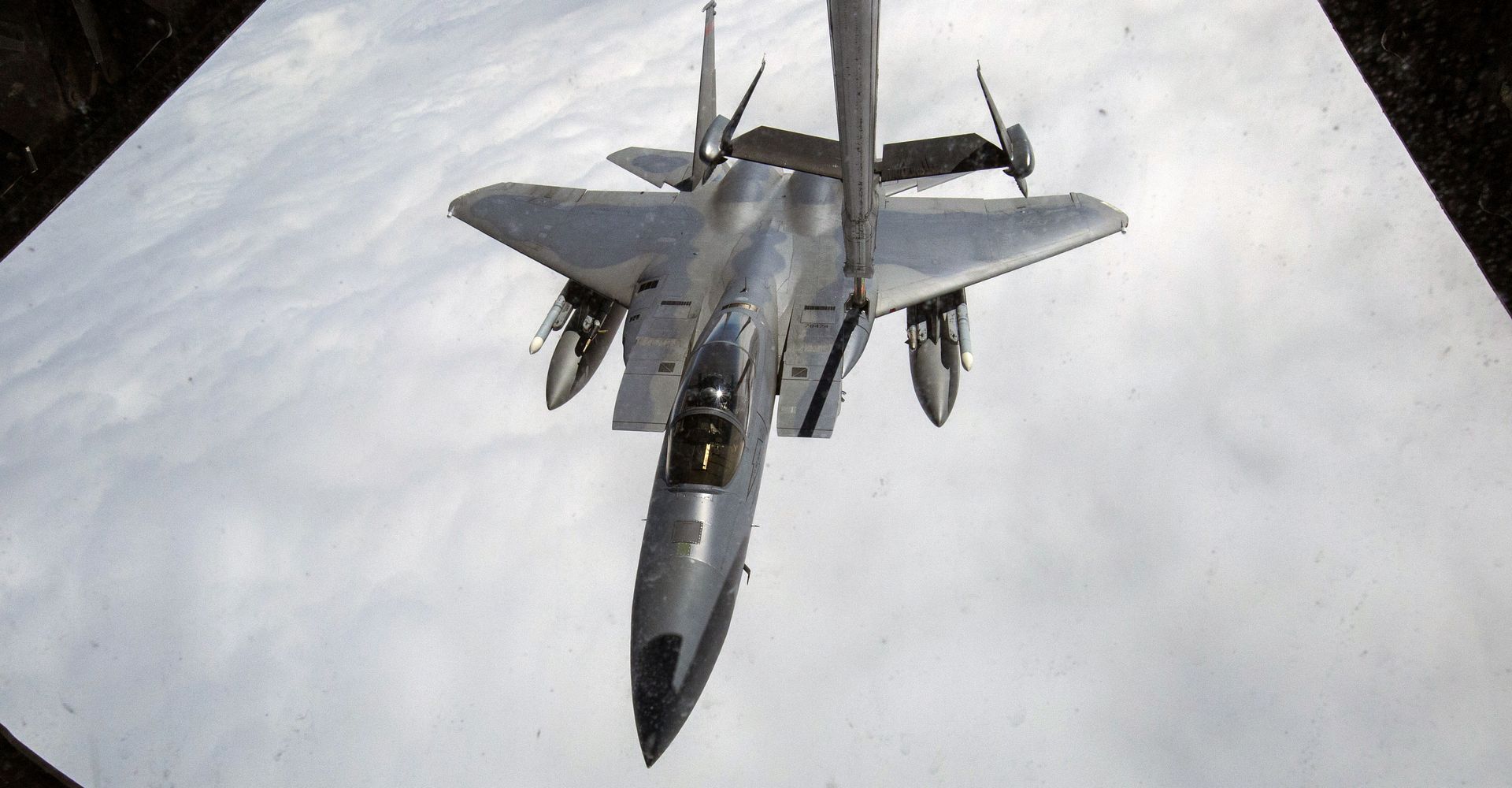
A U.S. Navy MH-60S Seahawk, assigned to the Helicopter Sea Combat Squadron 25, is refueled by a helicopter expedient refuel system (HERS) during exercise COPE NORTH 2018 at Tinian, U.S. Commonwealth of the Northern Mariana Islands, Feb. 26. A HERS is a deployable fueling system capable of storing 3,000 gallons of fuel. (U.S. Air Force photo by Airman 1st Class Juan Torres Chardon)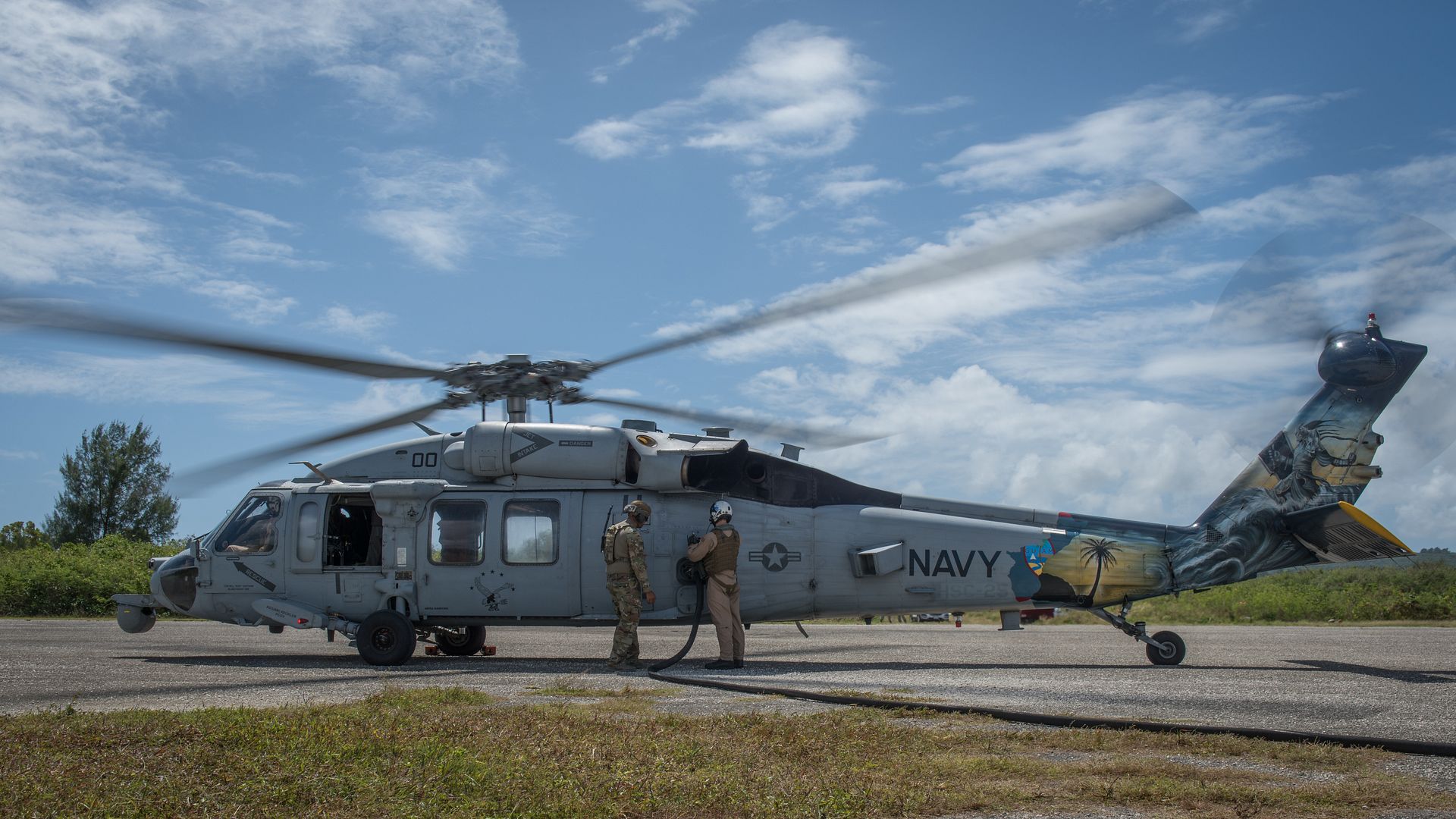
26 February 2018
Bell Helicopter, a Textron Inc. (NYSE: TXT) company, announced today the introduction of the Bell 407GXi at Heli-Expo 2018. The Bell 407GXi incorporates new avionics, an upgraded engine, and new executive interior design options.
Garmin?s G1000H NXi Integrated Flight Deck, complete with high-definition displays and faster processors offers increased brightness and clarity, faster startup and map rendering as well as connectivity to tablets and smartphones. Upgrades to the Bell 407GXi include a dual-channel FADEC engine with full automatic relight, and enhanced situational awareness through the G1000H NXi.
The Bell 407GXi is outfitted with the new Rolls-Royce M250-C47E/4 dual channel FADEC turbine engine delivering exceptional hot and high performance, fuel efficiency and the ability to cruise at 133 kts/246 km/h. Newly designed executive configuration options bring a modernized look and passenger experience to the five-seat club cabin.
Additional options for the 407GXi include the Garmin FlightStream 510 that allows pilots to upload flight plans from smart devices, Garmin SurfaceWatch that provides runway identification and alerting technology, a 3,100-lb. cargo hook, and Health Usage Monitoring (HUMS) for aircraft system diagnostics.
The Bell 407 GXi has been certified by Transport Canada and the first delivery is scheduled this Spring.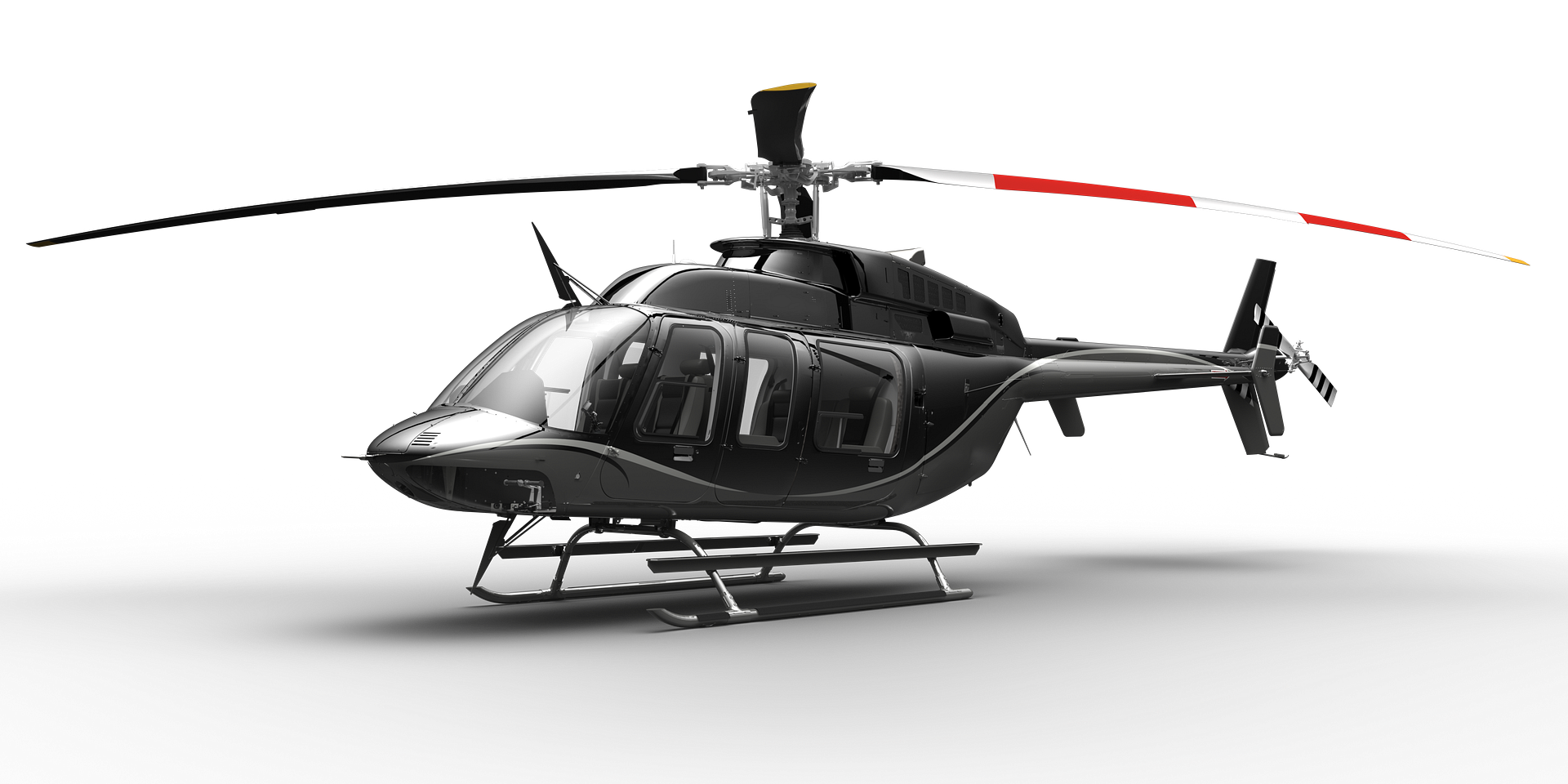
-
 Main AdminKC-10 Extenders parked on the ramp at Travis Air Force Base, Feb. 26, 2018. The aircraft were part of a week-long base wide readiness exercise which evaluated the base's readiness and ability to execute and sustain rapid global mobility around the world. (U.S. Air Force Photo by Heide Couch)
Main AdminKC-10 Extenders parked on the ramp at Travis Air Force Base, Feb. 26, 2018. The aircraft were part of a week-long base wide readiness exercise which evaluated the base's readiness and ability to execute and sustain rapid global mobility around the world. (U.S. Air Force Photo by Heide Couch)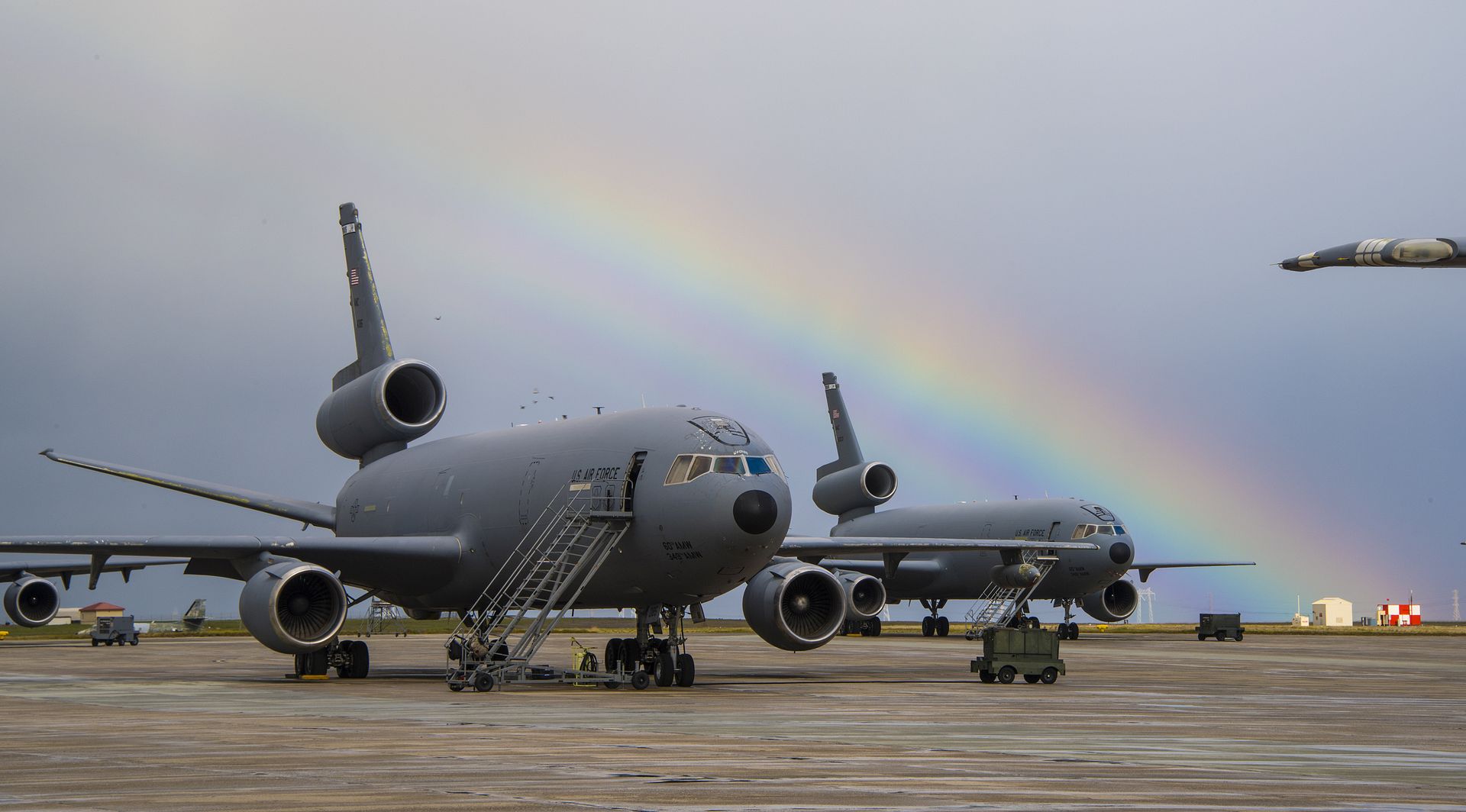
An unmanned, ultra-light aircraft comes in for a landing, Feb. 27, 2018, after delivering a crate to a training area at the Redstone Arsenal in Huntsville, Alabama, as part of the 2017 Air Force Research Laboratory Commander?s Challenge. The ultra-light aircraft carried a crate containing an autonomous vehicle with supplies, which was dropped by parachute with the hope it would be able to make its own way to a rendezvous point. (U.S. Air Force photo by R.J. Oriez)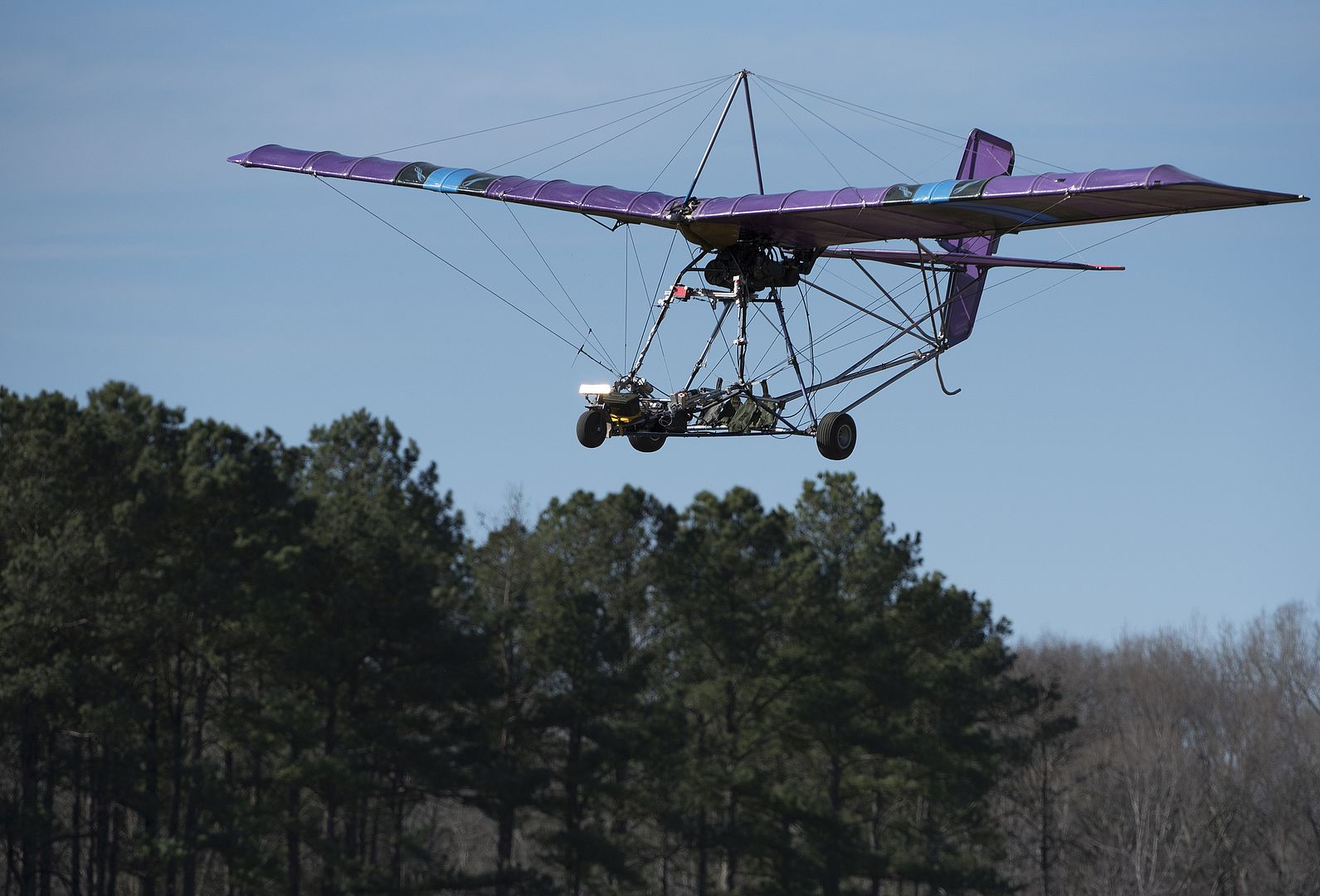
SAN DIEGO --
Today, Northrop Grumman Corporation celebrates the 20th anniversary of the first flight of its autonomous Global Hawk high altitude long endurance aircraft. The first Global Hawk aircraft, named Air Vehicle 1, or AV-1, was built by Teledyne Ryan Aeronautical at the Ryan factory near San Diego?s Lindberg Field. Northrop Grumman would acquire Teledyne Ryan in 1999.
On a clear and calm morning, Feb. 28, 1998, AV-1 taxied itself to its take-off position at Edwards Air Force Base. The aircraft was all white, except for its U.S. Air Force markings and sported a unicorn-like mast out of the front of its nose. Ryan pilot Mike Munski, in the ground control station nearby, clicked the take-off button on his control console and AV-1 took off into the desert sky. After a 56 minute flight, the first Global Hawk landed safely and stopped itself on the runway, just six inches off the painted centerline.
The first Global Hawk aircraft were in the Advanced Concept Technology Demonstration program, sponsored by the Defense Advanced Research Projects Agency. DARPA is responsible for the development of emerging technologies for use by the military.
The Global Hawk system is building on its heritage of innovation, modernizing its current capabilities by integrating new technologies that enhance capabilities, performance and reliability. In active operation with the U.S. Air Force since 2001, Global Hawk has amassed more than 250,000 flight hours with missions flown in support of military and humanitarian operations. Able to fly at high altitudes for greater than 30 hours, Global Hawk is designed to gather near-real-time, high-resolution imagery of large areas of land in all types of weather ? day or night.
This is a shot of a Global Hawk aircraft. Northrop Grumman Corporation celebrates the 20th anniversary of the first flight of its autonomous Global Hawk high altitude long endurance aircraft.(Courtesy photo by Northrop Grumman)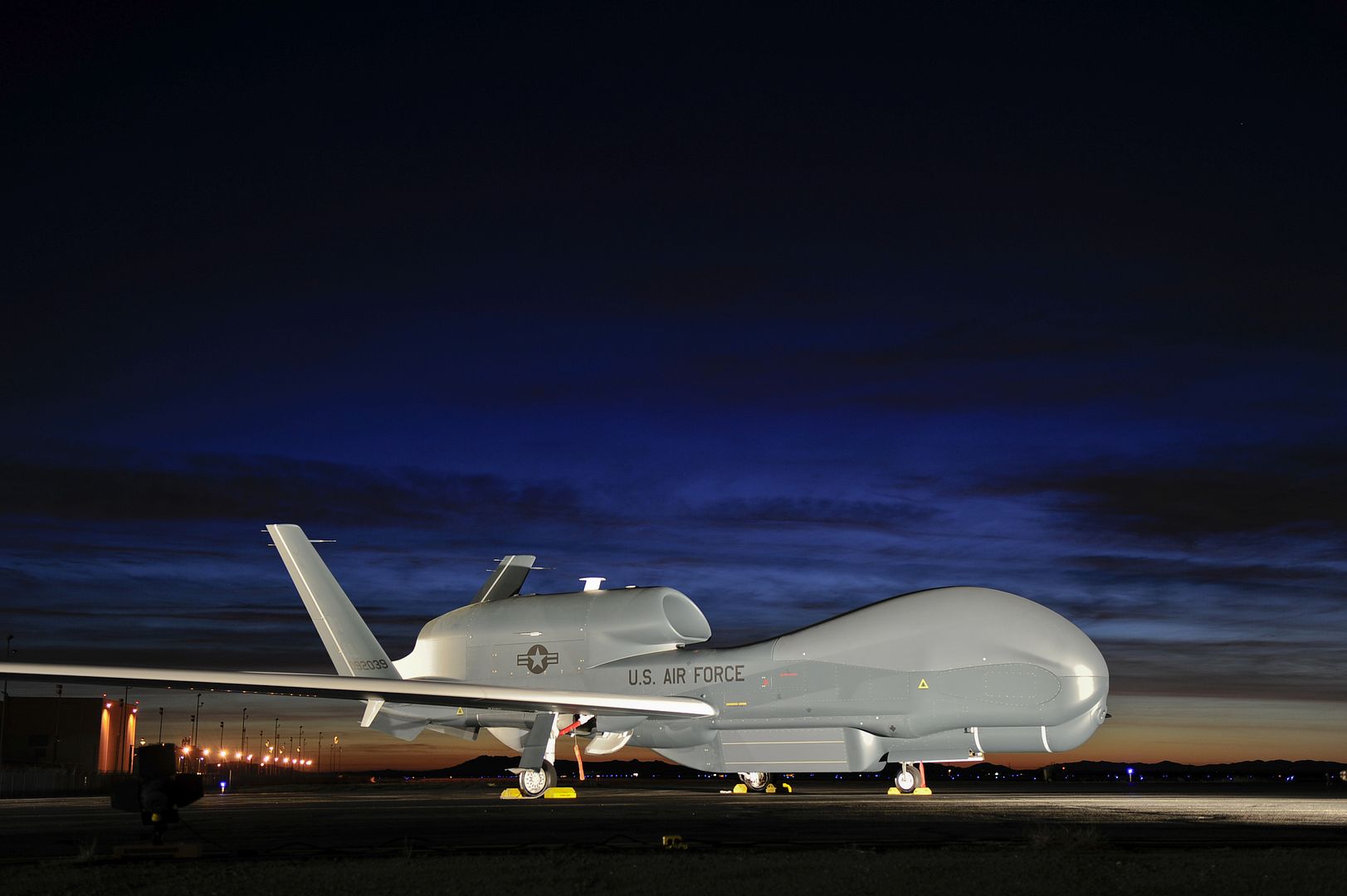
The first Global Hawk aircraft, named Air Vehicle 1, or AV-1, taxies itself at Edwards Air Force Base Feb. 28, 1998. (Courtesy photo by Northrop Grumman)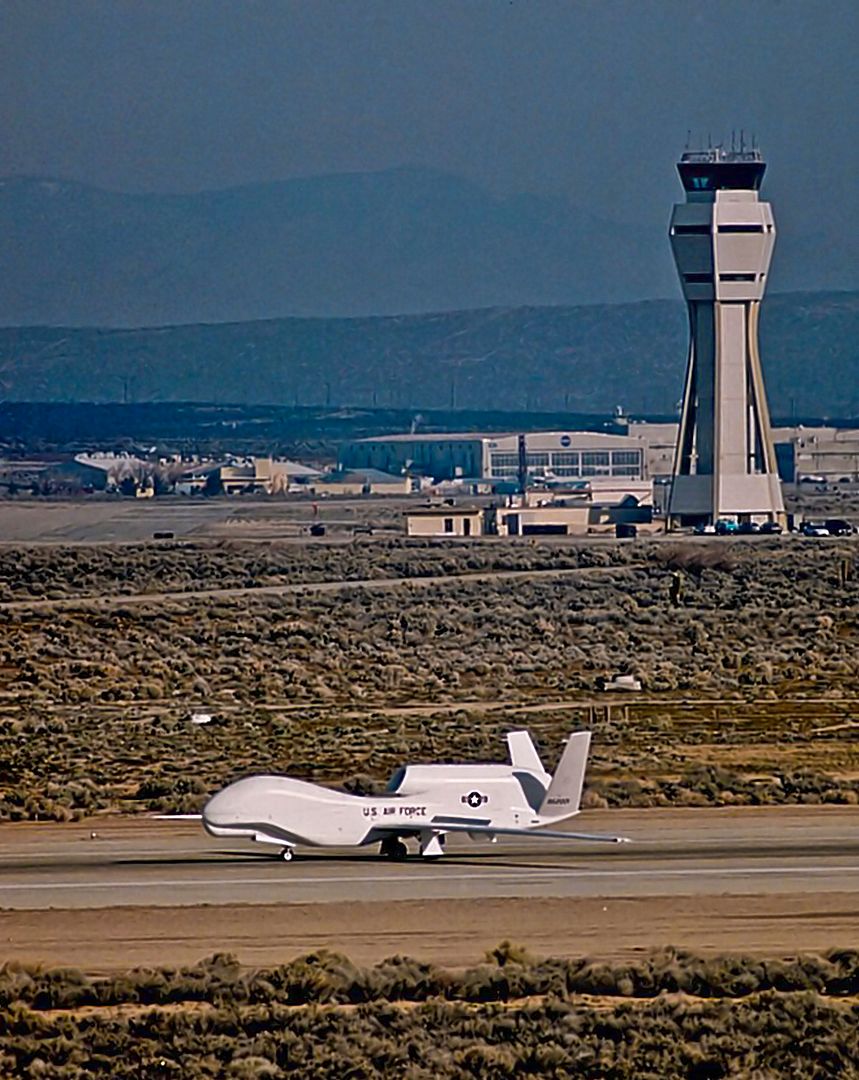
The first Global Hawk aircraft, named Air Vehicle 1, or AV-1, takes its first flight Feb. 28, 1998. (Courtesy photo by Northrop Grumman)
A U.S. Air Force F-16 Fighting Falcon taxies on the flight line at Davis-Monthan Air Force Base, Ariz., Feb. 27, 2018. The F-16 Viper Demonstration Team will be participating in this year?s Heritage Flight Training and Certification Course. The HFTCC is intended to certify pilots of both modern and historic aircraft to fly in formation together during the upcoming airshow season. (U.S. Air Force photo by Senior Airman Cheyenne A. Powers)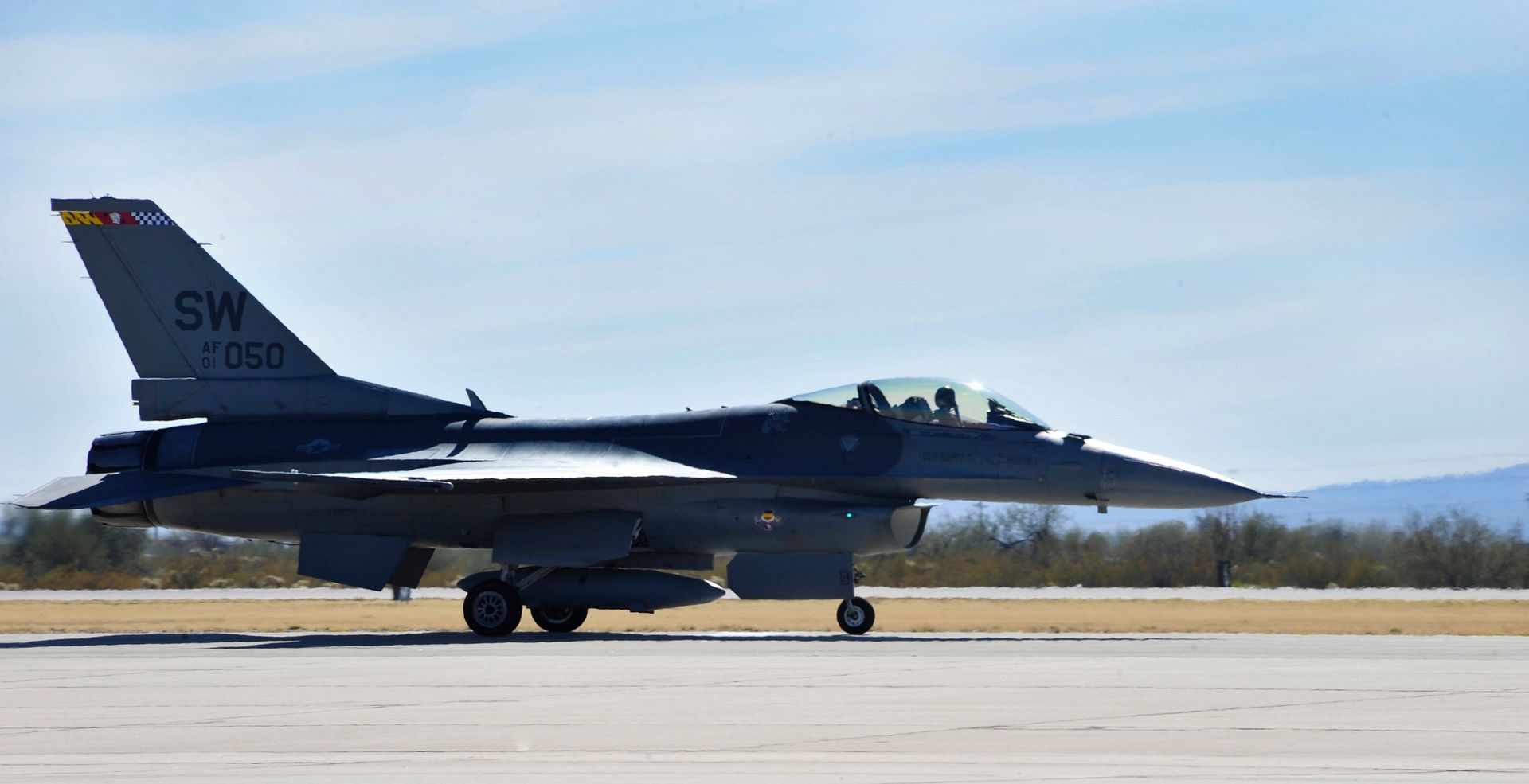
A U.S. Air Force F-22 Raptor taxies on the flight line at Davis-Monthan Air Force Base, Ariz., Feb. 27, 2018. The F-22 Demonstration Team will be participating in the 2018 Heritage Flight Training and Certification Course. The HFTCC is intended to certify pilots of both modern and historic aircraft to fly in formation together during the upcoming airshow season. (U.S. Air Force photo by Senior Airman Cheyenne A. Powers)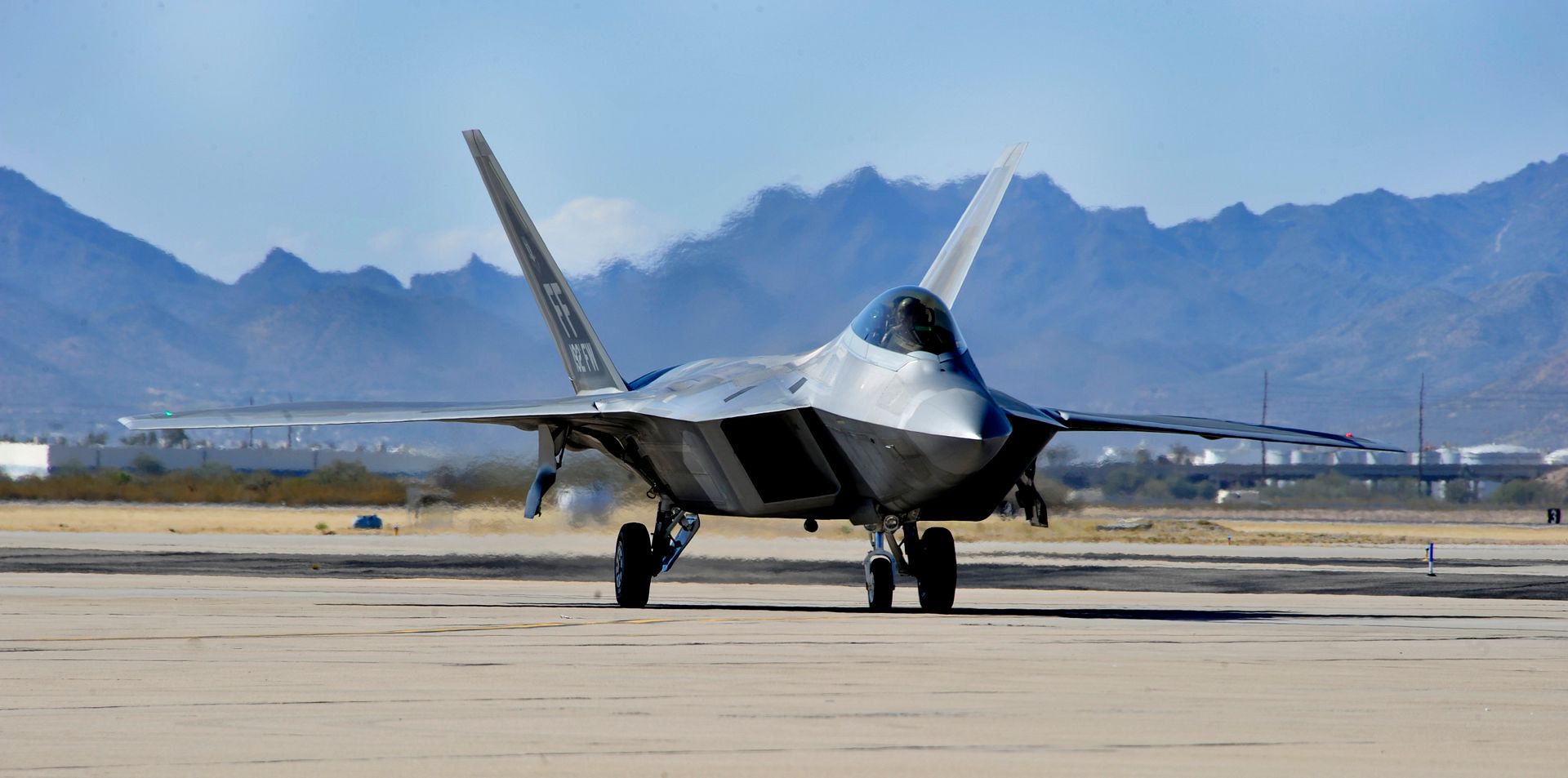
A U.S. Air Force A-10C Thunderbolt II taxies on the flight line in preperation for the 2018 Heritage Flight Training and Certification Course at Davis-Monthan Air Force Base, Ariz., Feb. 27, 2018. The HFTCC provides civilian and military pilots the opportunity to practice flying in formation together in preparation for future air shows. (U.S. Air Force Photo by Airman 1st Class Michael X. Beyer)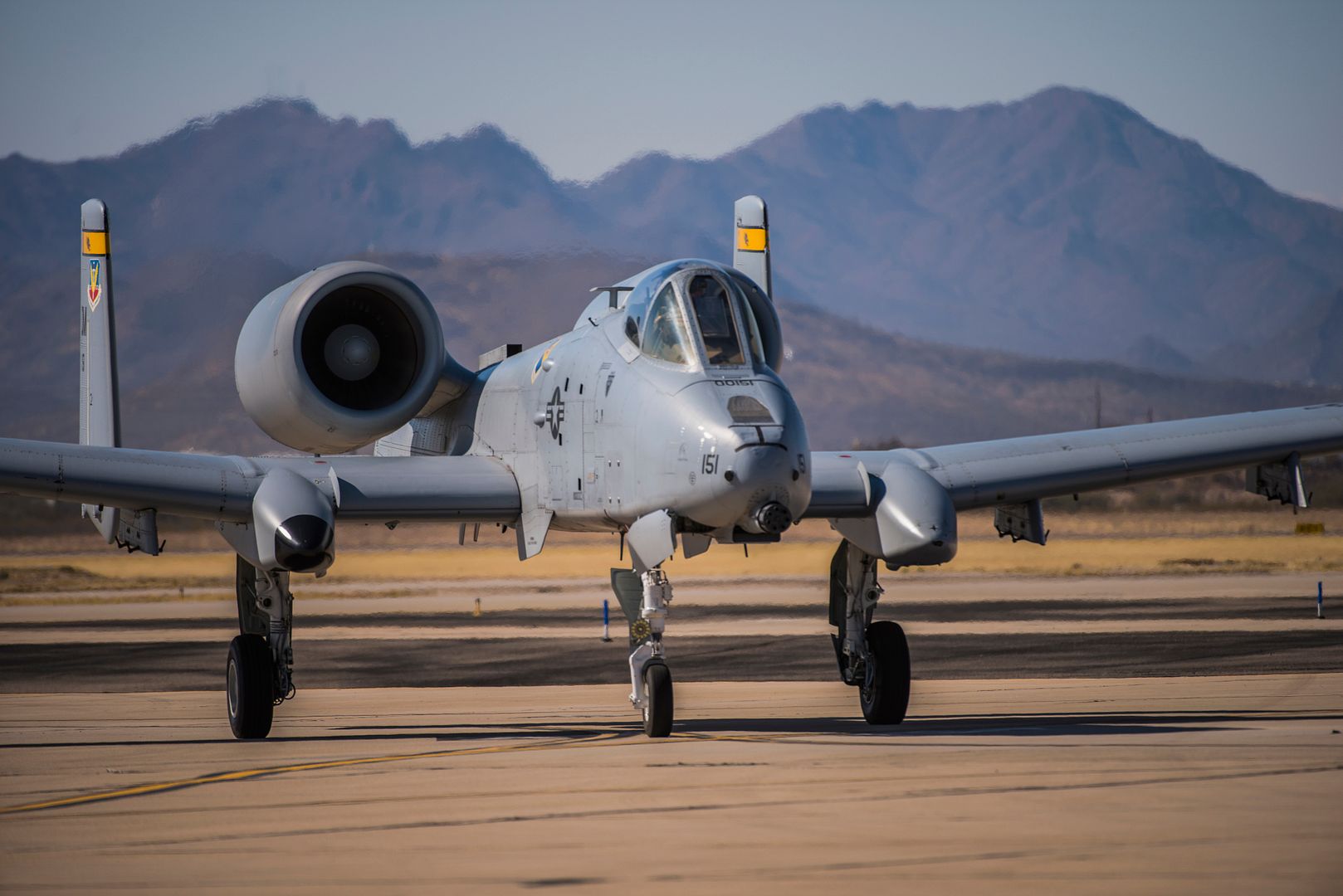
A U.S. Air Force A-10C Thunderbolt II taxies on the flight line while another A-10 takes off in preparation for the 2018 Heritage Flight Training and Certification Course at Davis-Monthan Air Force Base, Ariz., Feb. 27, 2018. The HFTCC provides civilian and military pilots the opportunity to practice flying in formation together in preparation for future air shows. (U.S. Air Force Photo by Airman 1st Class Michael X. Beyer)
SOUTH CHINA SEA (Feb. 27, 2018) An F/A-18F Super Hornet assigned to the "Bounty Hunters" of Strike Fighter Squadron (VFA) 2 attempts an arrested landing aboard the Nimitz-class aircraft carrier USS Carl Vinson (CVN 70). The Carl Vinson Carrier Strike Group is operating in the western Pacific as part of a scheduled deployment. (U.S. Navy photo by Mass Communication Specialist 3rd Class Elton Charles Wheeler/Released)
SOUTH CHINA SEA (Feb. 27, 2018) An F/A-18C Hornet assigned to the "Blue Blasters" takes off from the Nimitz-class aircraft carrier USS Carl Vinson (CVN 70). The Carl Vinson Strike Group is operating in the western Pacific during a regularly scheduled deployment. (U.S. Navy photo by Mass Communication Specialist 3rd Class Elton Charles Wheeler/Released)
SOUTH CHINA SEA (Feb. 28, 2018) An F/A-18E Super Hornet assigned to the "Kestrels" of Strike Fighter Squadron (VFA) 137 prepares to make an arrested landing aboard the Nimitz-class aircraft carrier USS Carl Vinson (CVN 70). The Carl Vinson Strike Group is operating in the western Pacific during a regularly scheduled deployment. (U.S. Navy photo by Mass Communication Specialist 3rd Class Elton Charles Wheeler/Released)
MEXICO CITY, Feb. 28, 2018 /PRNewswire/ -- Boeing (NYSE: BA) and Aeromexico today celebrated the delivery of the first of up to 90 737 MAX airplanes. Mexico's global airline plans to use the more fuel-efficient and longer-range MAX jets to expand its network across the Americas.
In 2012 Aeromexico placed an order for up to 90 MAX airplanes, including the MAX 8 and the larger MAX 9 variant. The two models offer the airline the flexibility to fly between approximately 160 and 190 passengers on flights of about 3,550 nautical miles (6,570 kilometers), both with better operating costs and passenger experience.
"We are very proud to be one of the first airlines in Latin America operating this aircraft, which allows us to provide operational efficiencies that translate into multiple benefits for our clients, both in terms of their experience on-board and the options they have to reach their destination," said Andr?s Conesa, CEO of Aeromexico.
Aeromexico, the largest airline in Mexico, operates one of the most technologically-advanced fleets in the region. It is a leading operator of the 787 Dreamliner.
"We are honored to expand our partnership with Aeromexico and welcome them to the 737 MAX family," said Ricardo Cavero, vice president, Latin America sales, Boeing Commercial Airplanes. "The 737 MAX will provide Aerom?xico with unmatched reliability, fuel efficiency and a premium on-board experience for its passengers."
The 737 MAX family is designed to offer customers exceptional performance, with lower per-seat costs and an extended range that will open up new destinations in the single-aisle market. The 737 MAX incorporates the latest CFM International LEAP-1B engines, Advanced Technology winglets, Boeing Sky Interior, large flight deck displays and other features to deliver the highest efficiency, reliability and passenger comfort in the single-aisle market.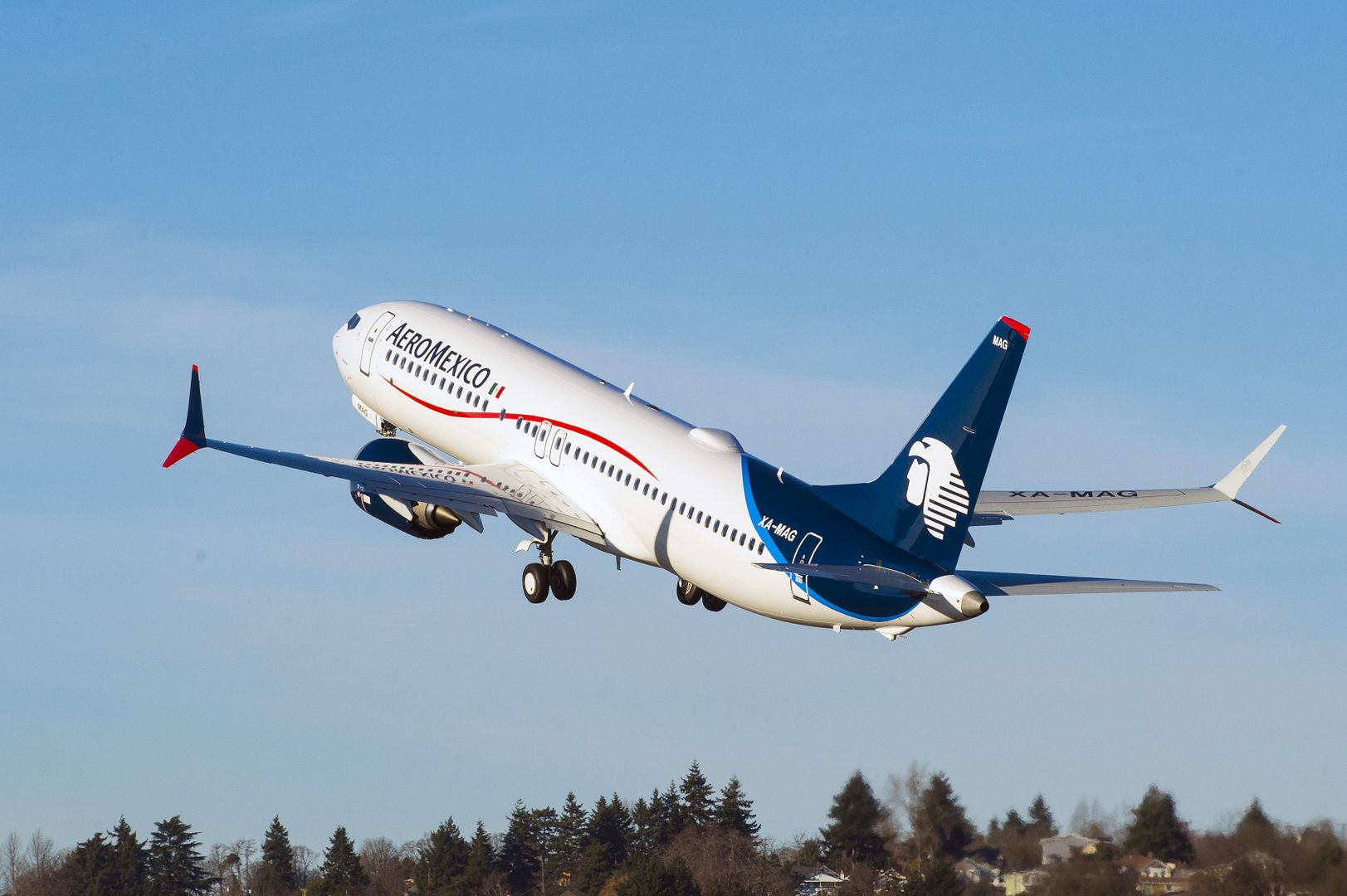
The first Ultra Long Range version of the A350 XWB has rolled out of the Airbus final assembly line in Toulouse. The latest variant of the best-selling A350 XWB Family will be able to fly further than any other commercial airliner and will enter service with launch operator Singapore Airlines later this year.
Altogether, Singapore Airlines has ordered seven A350-900 Ultra Long Range aircraft, which it will use on non-stop flights between Singapore and the US, including the world?s longest commercial service between Singapore and New York.
Following completion of the airframe assembly, the first aircraft has now moved to an outdoor station where it will undergo extensive ground tests, prior to installation of its Rolls-Royce Trent XWB engines.
The aircraft will then embark on a short flight test programme to certify the changes over the standard A350-900 that will bring the additional range capability. These include a modified fuel system that increases fuel carrying capacity by 24,000 litres, without the need for additional fuel tanks. The test phase will also measure enhanced performance derived from aerodynamic improvements, including extended winglets.
With a maximum take-off weight (MTOW) of 280 tonnes, the A350 XWB Ultra Long Range is capable of flying up to 9,700 nautical miles or over 20 hours non-stop, combining the highest levels of passenger and crew comfort with unbeatable economics for such distances.
The A350 XWB is an all new family of widebody long-haul airliners shaping the future of air travel. The A350 XWB features the latest aerodynamic design, carbon fibre fuselage and wings, plus new fuel-efficient Rolls-Royce engines. Together, these latest technologies translate into unrivalled levels of operational efficiency, with a 25 per cent reduction in fuel burn and emissions, and significantly lower maintenance costs. The A350 XWB features an Airspace by Airbus cabin offering absolute well-being on board with the quietest twin-aisle cabin and new air systems.
To date, Airbus has recorded a total of 854 firm orders for the A350 XWB from 45 customers worldwide, already making it one of the most successful widebody aircraft ever.
Singapore Airlines is one of the largest customers for the A350 XWB Family, having ordered a total of 67 A350-900s, including the seven Ultra Long Range models. The carrier has already taken delivery of 21 A350-900s.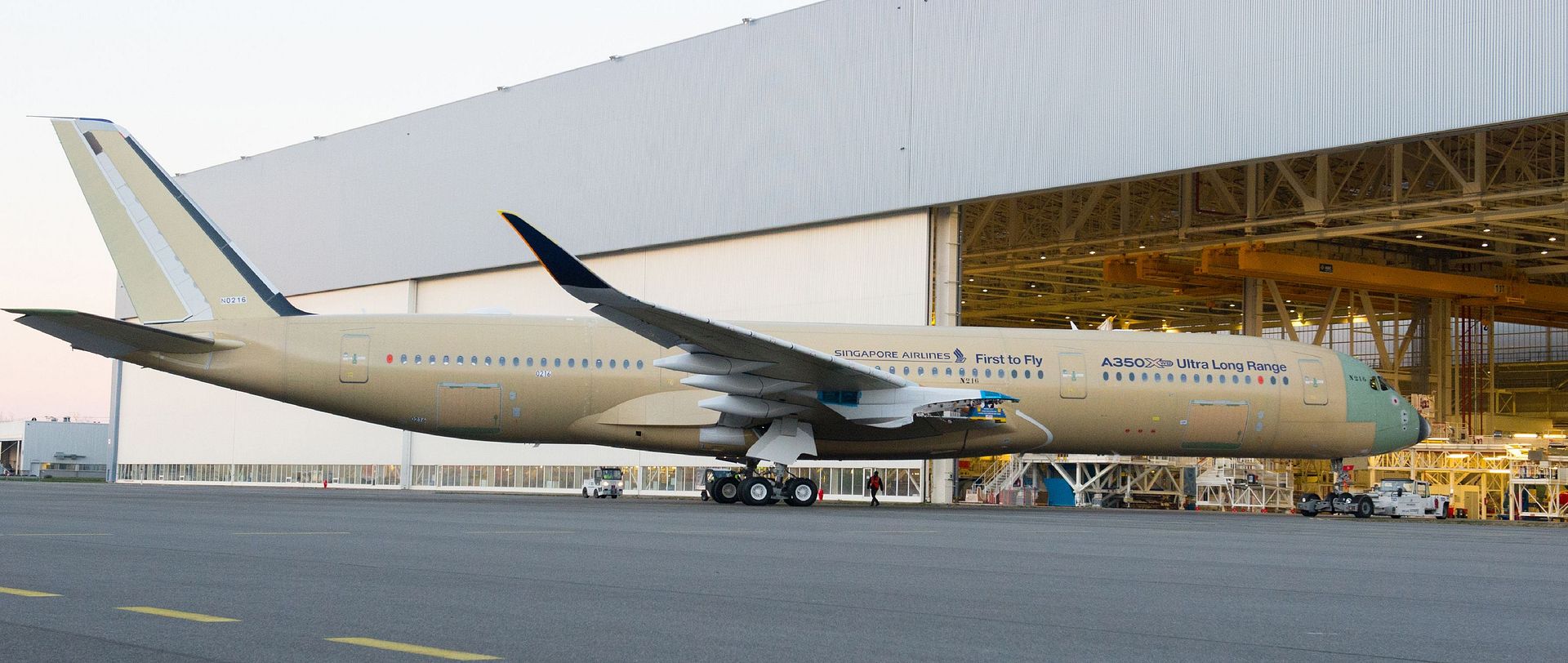
S?o Jos? dos Campos, Brazil, February 28, 2018 ? In a ceremony held today at the Company's facilities in S?o Jos? dos Campos, Embraer received Type Certificate for the E190-E2, the first member of the E-Jets E2 family of commercial aircraft, from the Brazilian Civil Aviation Agency (Ag?ncia Nacional de Avia??o Civil ? ANAC), the FAA (Federal Aviation Administration) and EASA (European Aviation Safety Agency). It is the first time that an aircraft program with the level of complexity of the E2 receives a type certificate from three major worldwide certification authorities simultaneously. It took just 56 months from program launch until the E190-E2 was certified. The E190-E2 features new ultra-high bypass ratio engines and a completely new wing and landing gear. Compared to the first-generation E190, 75% of the aircraft systems are new. ?Having had the pleasure of launching the E-Jets E2 family back in 2013, it is very emotional for me to see the E190-E2 reach Type Certificate today, on schedule and on budget. Our development teams have once again excelled in their creativity, dedication and competence! Not only all development targets were met, but several important ones like fuel burn, performance, noise and maintenance costs came in better than originally specified,? said Paulo Cesar de Souza e Silva, Embraer President & CEO. ?I want to congratulate all the teams involved in the program, everyone at Embraer played a part in this tremendous achievement, bringing to the market the best and most efficient single-aisle aircraft in the world. The E190-E2, alongside with the Legacy 450, Legacy 500 and, soon, the KC-390, positions Embraer as one of the top aerospace companies in the world.? The flight test program comprised four prototype aircraft which were subjected to rigorous testing. The E190-E2 test fleet completed over 2,000 flight hours. Some 45,000 hours of tests were conducted in laboratories with rigs for aircraft avionics, flight controls, and electrical, hydraulic, and environmental systems. ?Today?s certification of the E190-E2 marks a pivotal milestone in the program. It?s reasonable to now anticipate an acceleration of commercial discussions with operators around the globe? said John Slattery, President & CEO, Embraer Commercial Aviation. ?Today, many of the campaigns involving the E190-E2 and it?s bigger sibling the E195-E2 are with new operators for Embraer - and that?s very encouraging as we continue our trajectory towards 100 E-Jets operators around the world.? Wider?e, the largest regional airline in Scandinavia, is the first airline in the world to receive the brand-new E190-E2 and will put the aircraft in revenue service in April. The airline has a contract for up to 15 E2 family jets consisting of three firm orders for the E190-E2 and purchase rights for 12 further E2 family aircraft. Embraer recently announced some final flight tests results confirming the E2 as the most efficient single-aisle aircraft on the market. In fuel consumption, the E190-E2 proved to be 1.3% better than originally expected, a 17.3% improvement compared to the current- generation E190. The E190-E2 also becomes the most environmentally friendly aircraft in its class, with the lowest levels of external noise and emissions. Flight test results also confirmed the E190-E2 to be better than its original specification in takeoff performance. The aircraft?s range from airports with hot-and-high conditions, such as Denver and Mexico City, increases by 600 nm compared to current-generation aircraft. Its range from airports with short runways, such as London City, also increases by more than 1,000 nm allowing the aircraft to reach destinations like Moscow and cities in the north of Africa. The E190-E2 will also have the longest maintenance intervals among single-aisle aircraft with 10,000 flight hours for basic checks and no calendar limit for typical utilization. This means an additional 15 days of aircraft utilization over ten years compared to current generation E-Jets. Another key gain is with pilot transition training time. Pilots of current-generation E-Jets will need only 2.5 days of training and no full flight simulator to be qualified to fly an E2. Embraer is the world?s leading manufacturer of commercial jets up to 150 seats. The Company has 100 customers from all over the world operating the ERJ and E-Jet families of aircraft. For the E-Jets program alone, Embraer has logged more than 1,800 orders and 1,400 deliveries, redefining the traditional concept of regional aircraft by operating across a range of business applications.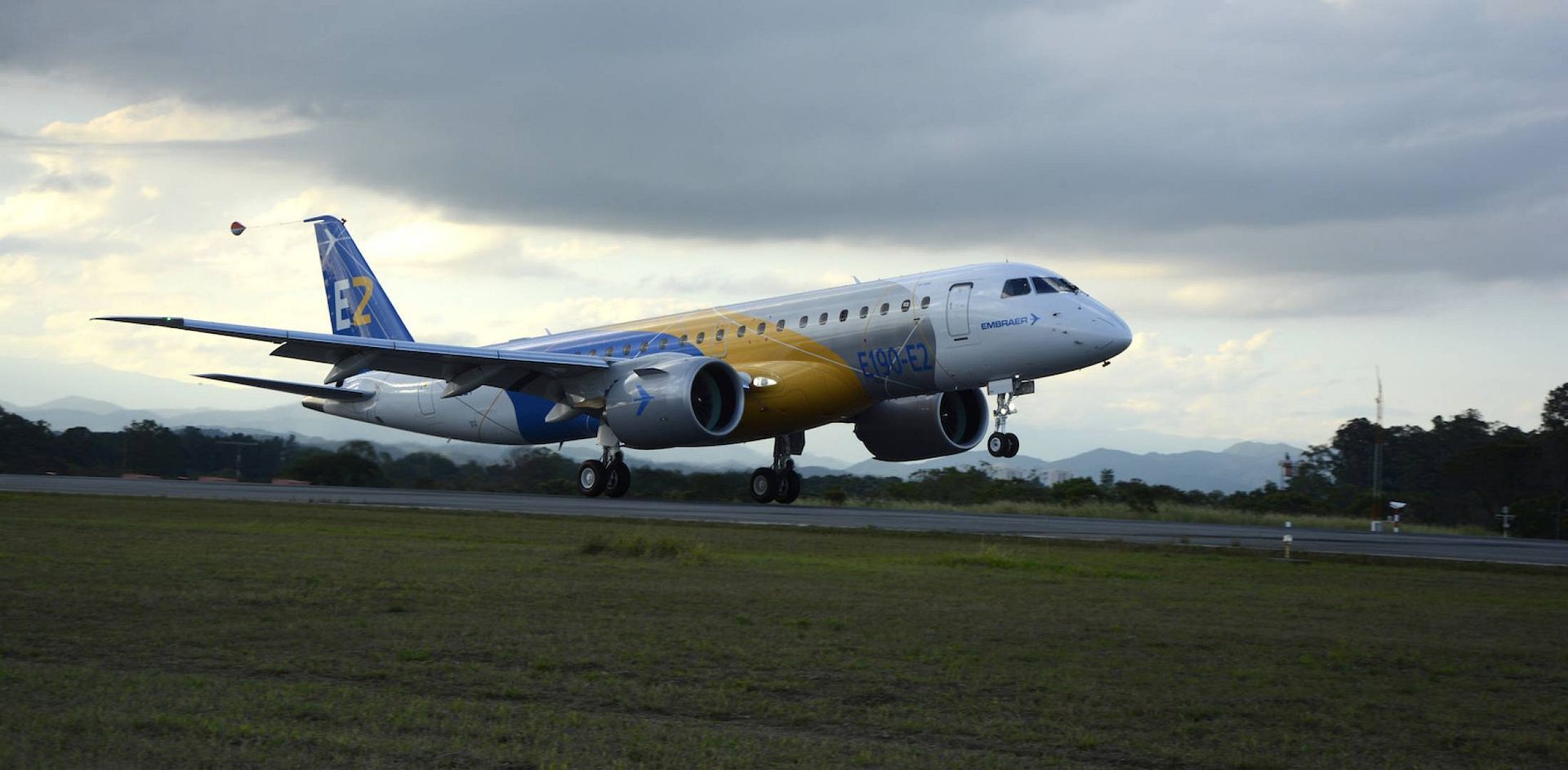
-
 Main AdminARABIAN GULF (Feb. 28, 2018) An F/A-18F Super Hornet, assigned to the Mighty Shrikes of Strike Fighter Attack Squadron (VFA) 94, launches from the flight deck of the aircraft carrier USS Theodore Roosevelt (CVN 71). Theodore Roosevelt and its carrier strike group are deployed to the U.S. 5th Fleet area of operations in support of maritime security operations to reassure allies and partners and preserve the freedom of navigation and the free flow of commerce in the region. (U.S. Navy photo by Mass Communication Specialist 3rd Class Alex Corona/Released)
Main AdminARABIAN GULF (Feb. 28, 2018) An F/A-18F Super Hornet, assigned to the Mighty Shrikes of Strike Fighter Attack Squadron (VFA) 94, launches from the flight deck of the aircraft carrier USS Theodore Roosevelt (CVN 71). Theodore Roosevelt and its carrier strike group are deployed to the U.S. 5th Fleet area of operations in support of maritime security operations to reassure allies and partners and preserve the freedom of navigation and the free flow of commerce in the region. (U.S. Navy photo by Mass Communication Specialist 3rd Class Alex Corona/Released)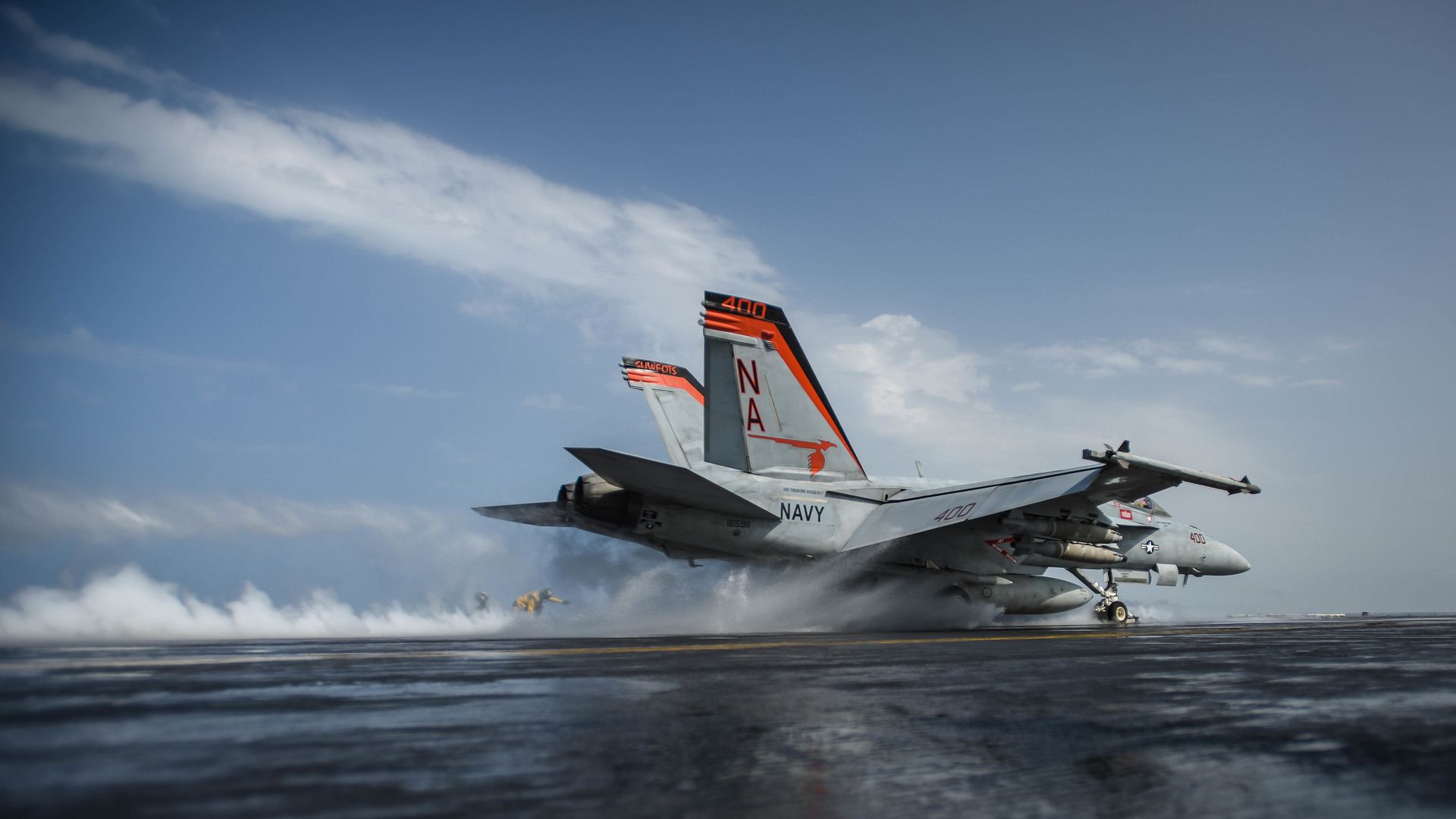
ATLANTIC OCEAN (Feb. 28, 2018) An F/A-18E Super Hornet assigned to the "Knighthawks" of Strike Fighter Squadron (VFA) 136 prepares to launch from the aircraft carrier USS Harry S. Truman (CVN 75). Harry S. Truman has successfully completed its composite training unit exercise, certifying the ship and its carrier strike group for deployment. (U.S. Navy photo by Lt. Lyndsi Gutierrez/Released)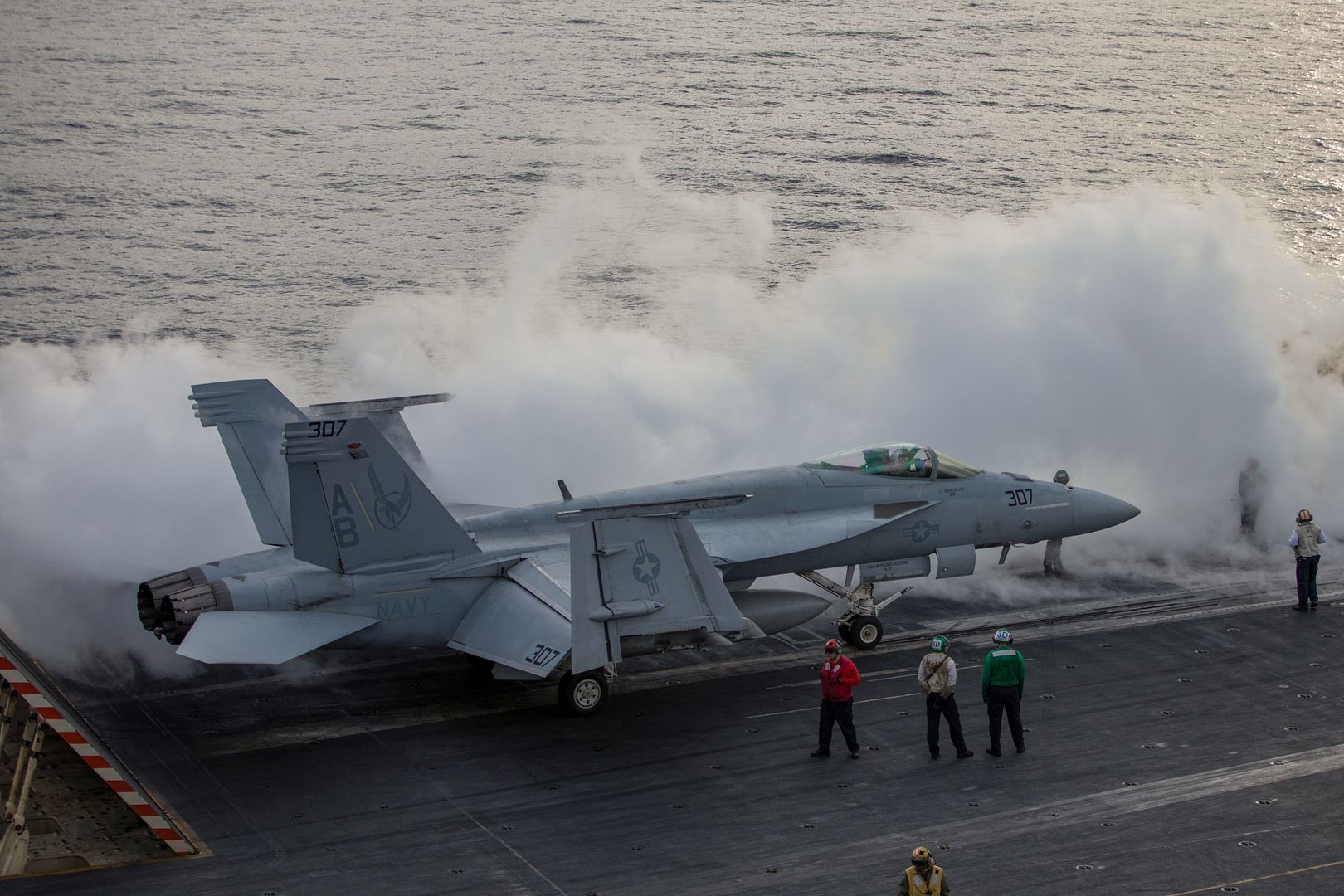
An Air Force F-22 Raptor assigned to the 3rd Wing flies over Joint Base Elmendorf-Richardson, Alaska, Feb. 27, 2018. The F-22 Raptor is the U.S. Air Force?s premium fifth-generation fighter asset. (Photo's by Jamal Wilson)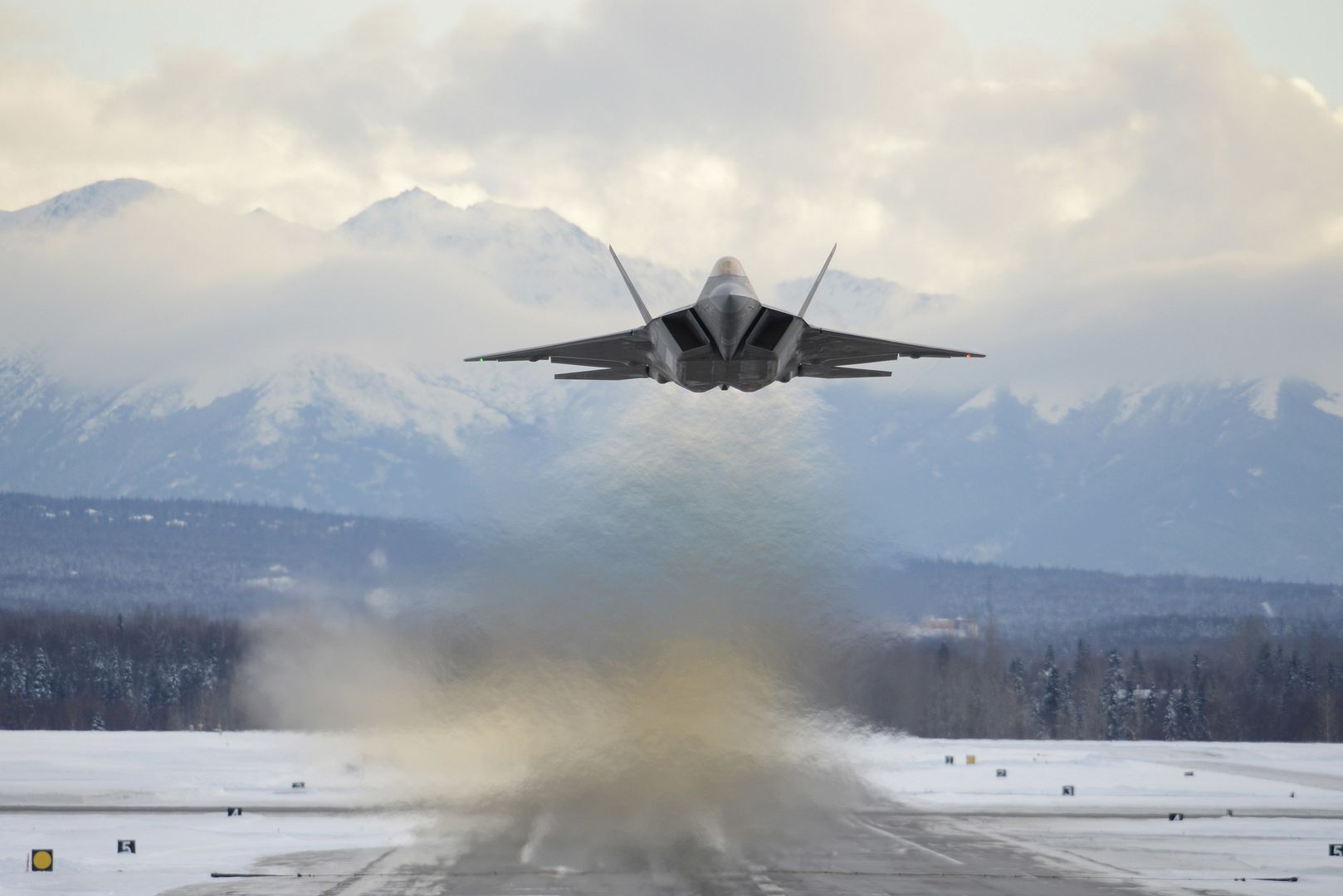

A C-5 M Super Galaxy takes off from Travis Air Force Base, Calif., Feb. 28, 2018. The aircraft were part of a week-long base wide readiness exercise which evaluated the base?s readiness and ability to execute and sustain rapid global mobility around the world. (U.S. Air Force Photo by Heide Couch)
A C-17 Globemaster III takes off from Travis Air Force Base, Calif., Feb. 28, 2018. The aircraft were part of a week-long base wide readiness exercise which evaluated the base?s readiness and ability to execute and sustain rapid global mobility around the world. (U.S. Air Force Photo by Heide Couch)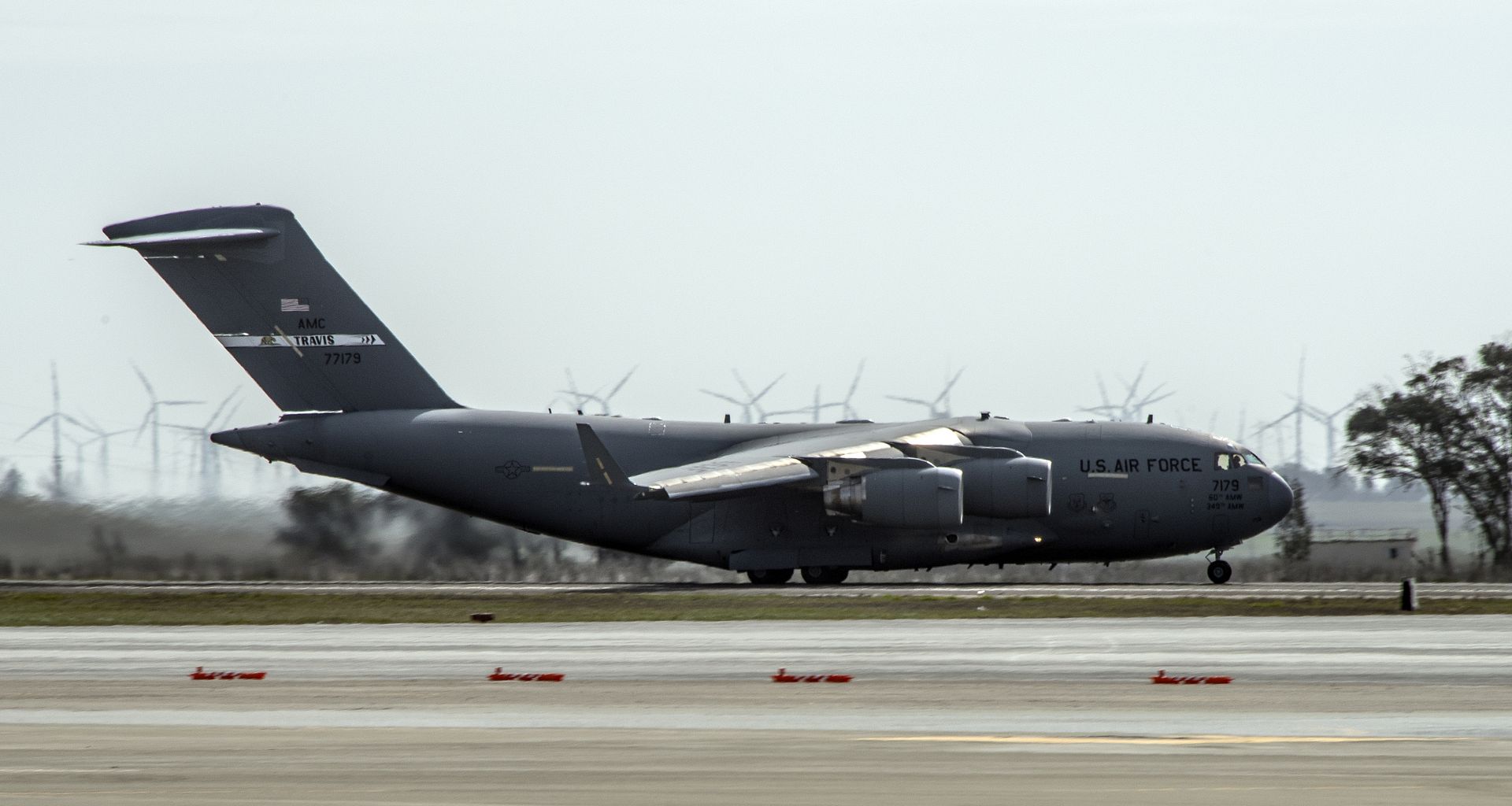
An F-35A Lightning II assigned to the 33rd Fighter Wing flies over Eglin Air Force Base, Fla. Feb. 27, 2018. Aircraft 5017 is the first F-35A Lightning II to reach 1,000 flight hours outside of the test community. (U.S. Air Force photo by Airman 1st Class Emily Smallwood)
Airmen with the 8th Fighter Wing conduct a regular inspection of the airfield at Kunsan Air Base, Feb. 27, 2018. The 8th Operations Support Squadron fulfills a variety of roles to include ensuring the airfield remains operational, overseeing the wing's flying training program, and manning the air traffic control tower for the base. (U.S. Air Force photo by Capt. Christopher Mesnard/Released)
A U.S. Army Task Force Brawler CH-47F Chinook waits on the flightline during a personnel recovery exercise with a Guardian Angel team assigned to the 83rd Expeditionary Rescue Squadron at Bagram Airfield, Afghanistan, Feb. 27, 2018. The Army crews and Air Force Guardian Angel teams conducted the exercise to build teamwork and procedures as they provide joint personnel recovery capability, aiding in the delivery of decisive airpower for U.S. Central Command. (U.S. Air Force Photo's by Tech. Sgt. Gregory Brook)
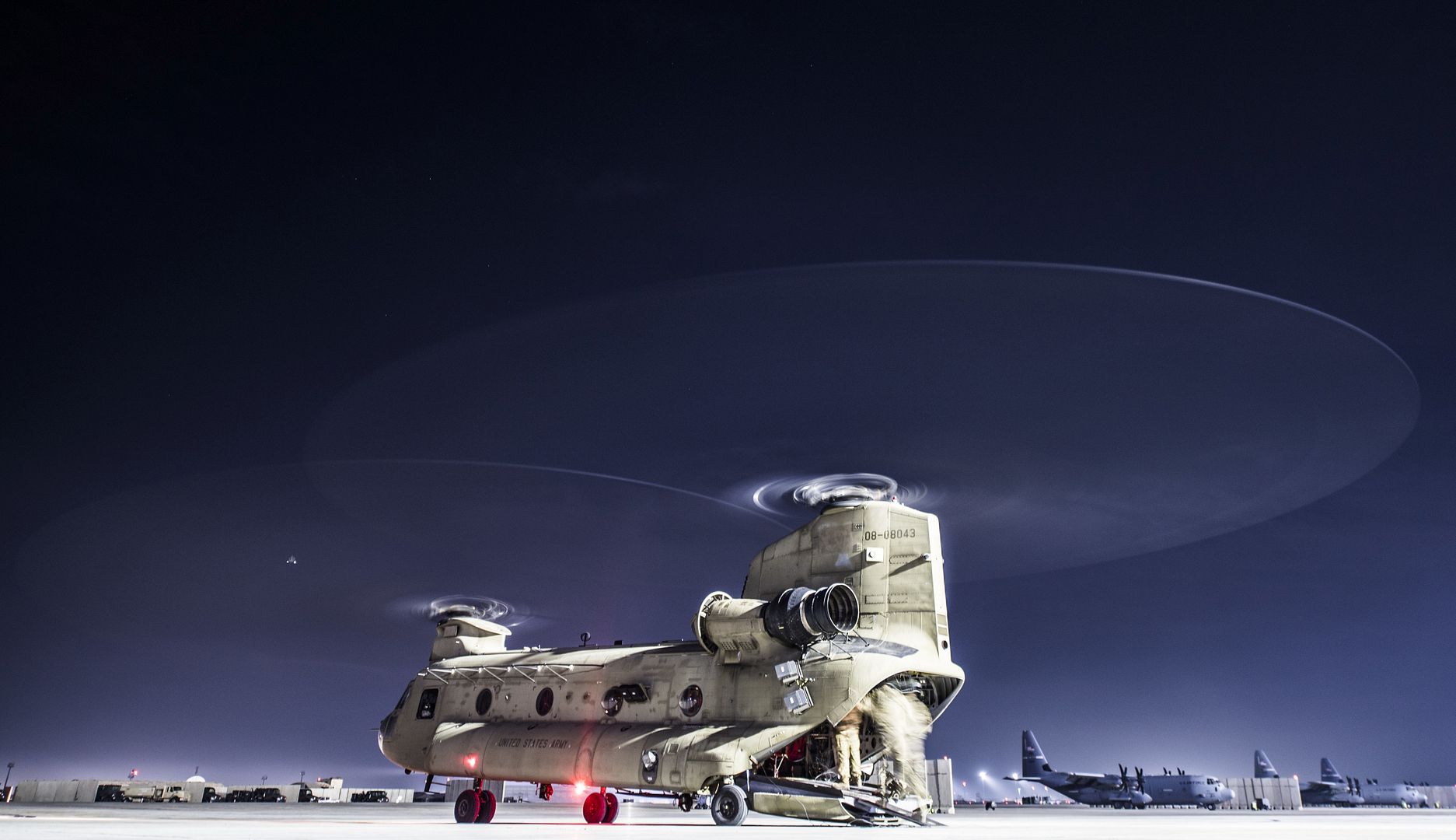
Air Force One taxis at the North Carolina Air National Guard Base, Charlotte Douglas International Airport, with President of the United States Donald J. Trump and First Lady Melania Trump to attend he funeral of evangelist Billy Graham on March 2, 2018. Grahams funeral, held at the Billy Graham Library, will have over 2,000 guests in attendance.
Photo by Tech. Sgt. Julianne Showalter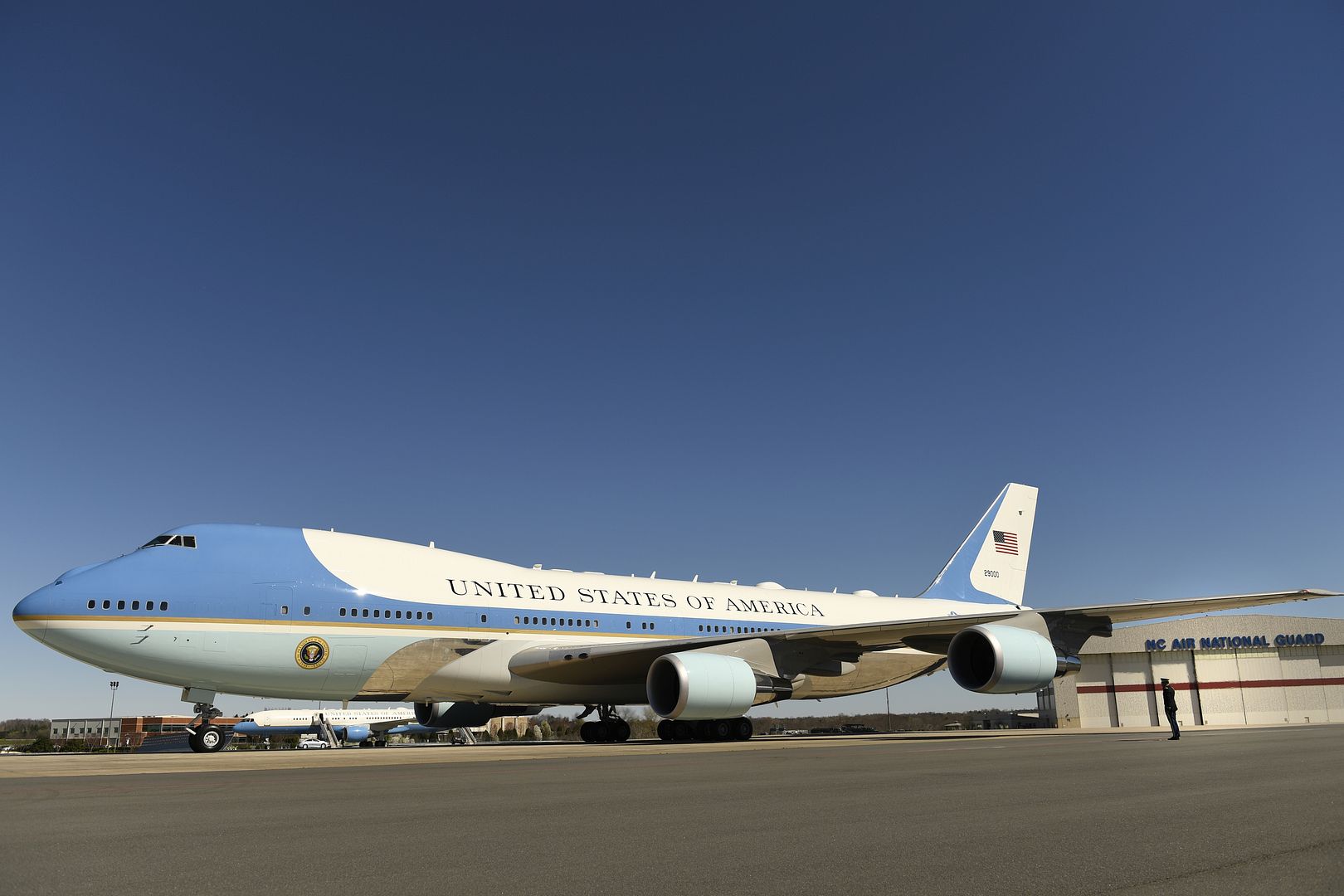
Crew chiefs and weapons Airmen assigned to the 303rd Expeditionary Fighter Squadron arm the weapons on two A-10 Thunderbolt IIs prior to takeoff at Kandahar Airfield, Afghanistan, Feb. 27, 2018. Arming weapons is the final task for maintenance Airmen to complete before the aircraft take off. (U.S. Air Force photo by Staff Sgt. Trevor Rhynes)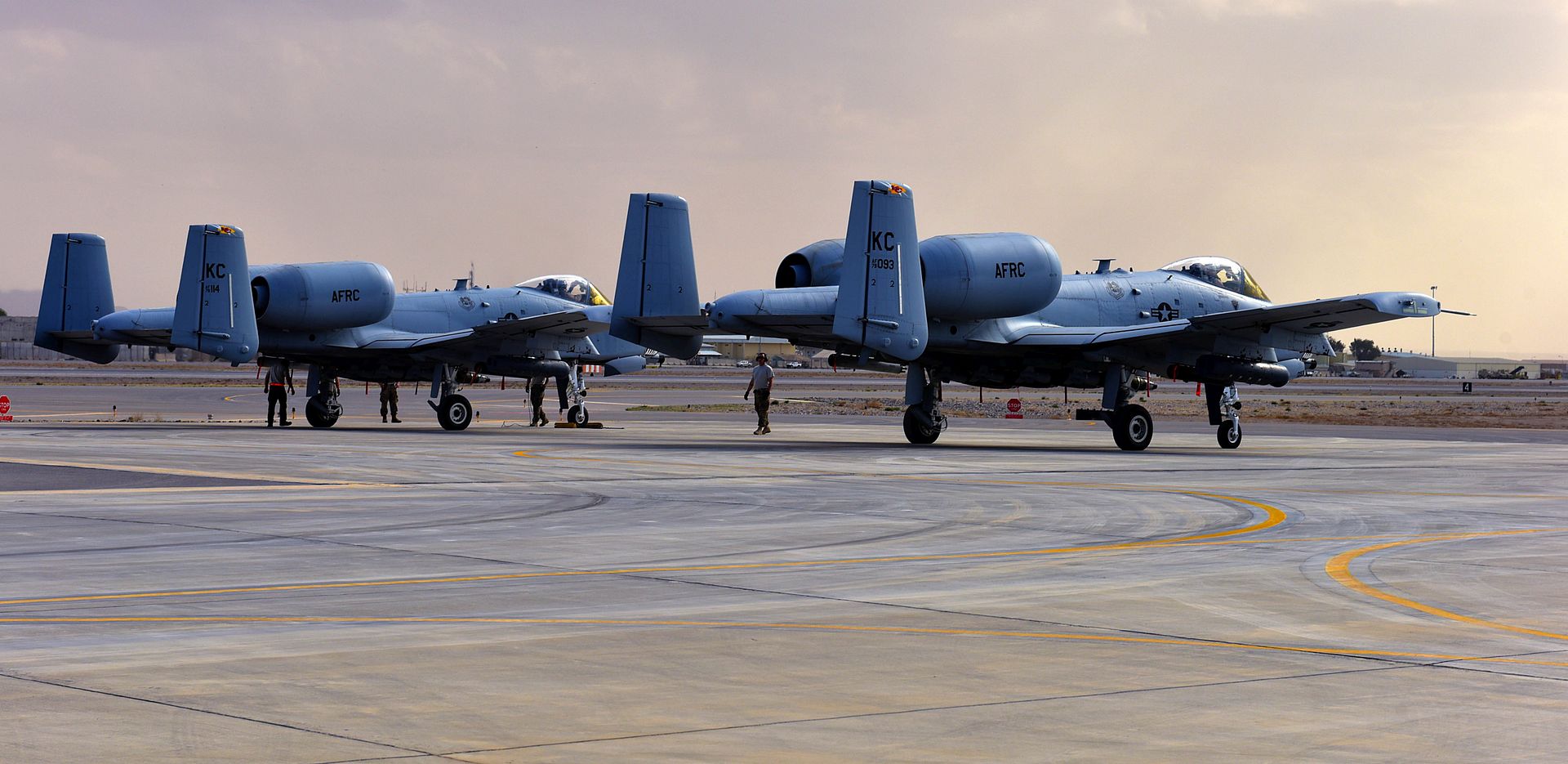
A coalition aircraft detaches from an U.S. KC-10 after receiving fuel over Syria in support of Operation Inherent Resolve March 2, 2018. The KC-10 can refuel a wide variety of U.S. and allied military aircraft within the same mission.
(U.S. Air Force photo by Tech. Sgt. Anthony Nelson Jr.)
(This image was manipulated using blurring techniques .)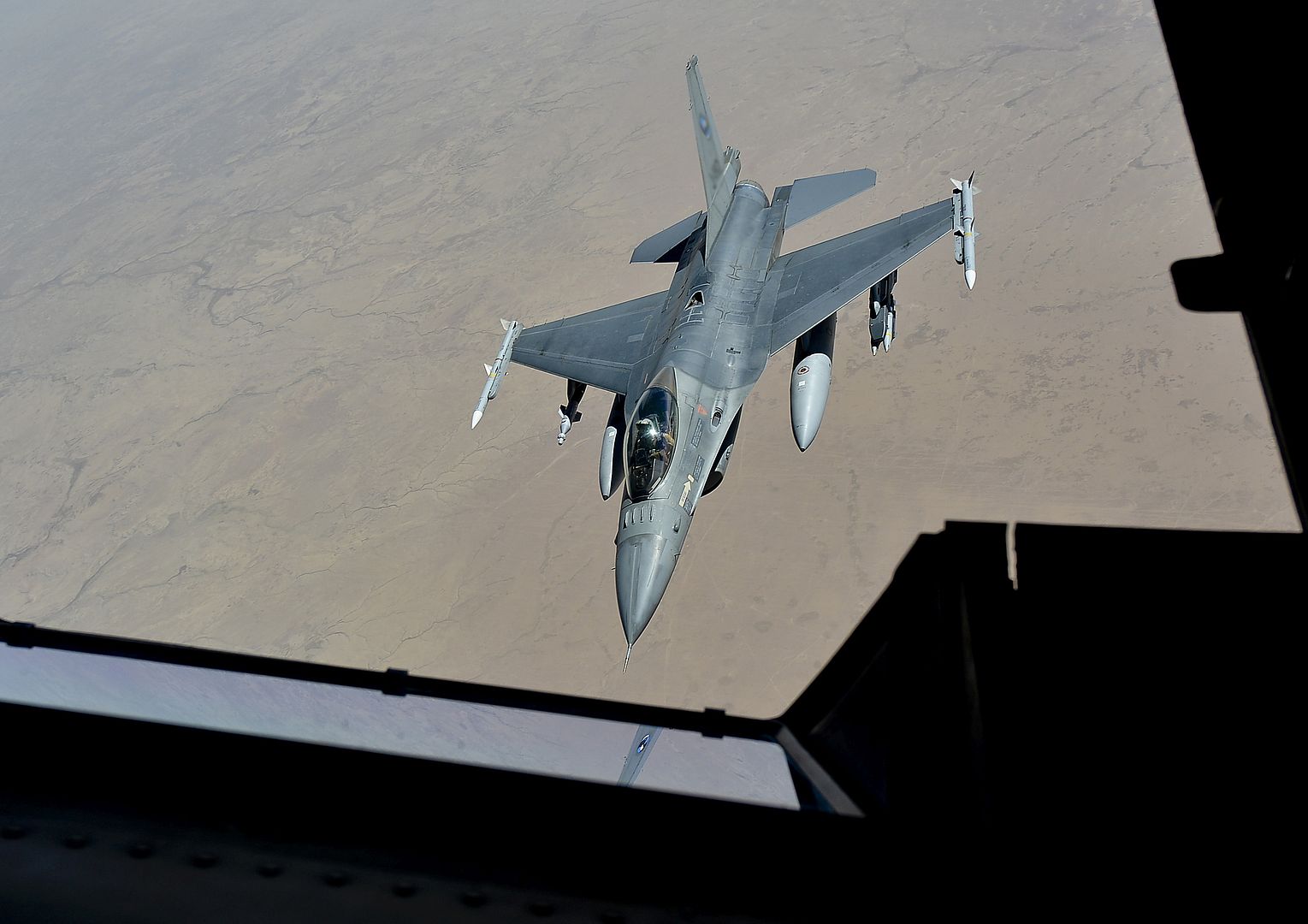
A U.S. Air Force F-22 assigned to the 380th Air Expeditionary Wing, Al Dhafra Air Base, United Arab Emirates disconnects from a KC-10 Extender after receiving fuel over Syria March 2,2018.
The F-22s provide close air support and precision guided strikes in an effort to weaken and destroy ISIS operations in the Middle East and around the world.
(U.S. Air Force photo by Tech. Sgt. Anthony Nelson Jr.)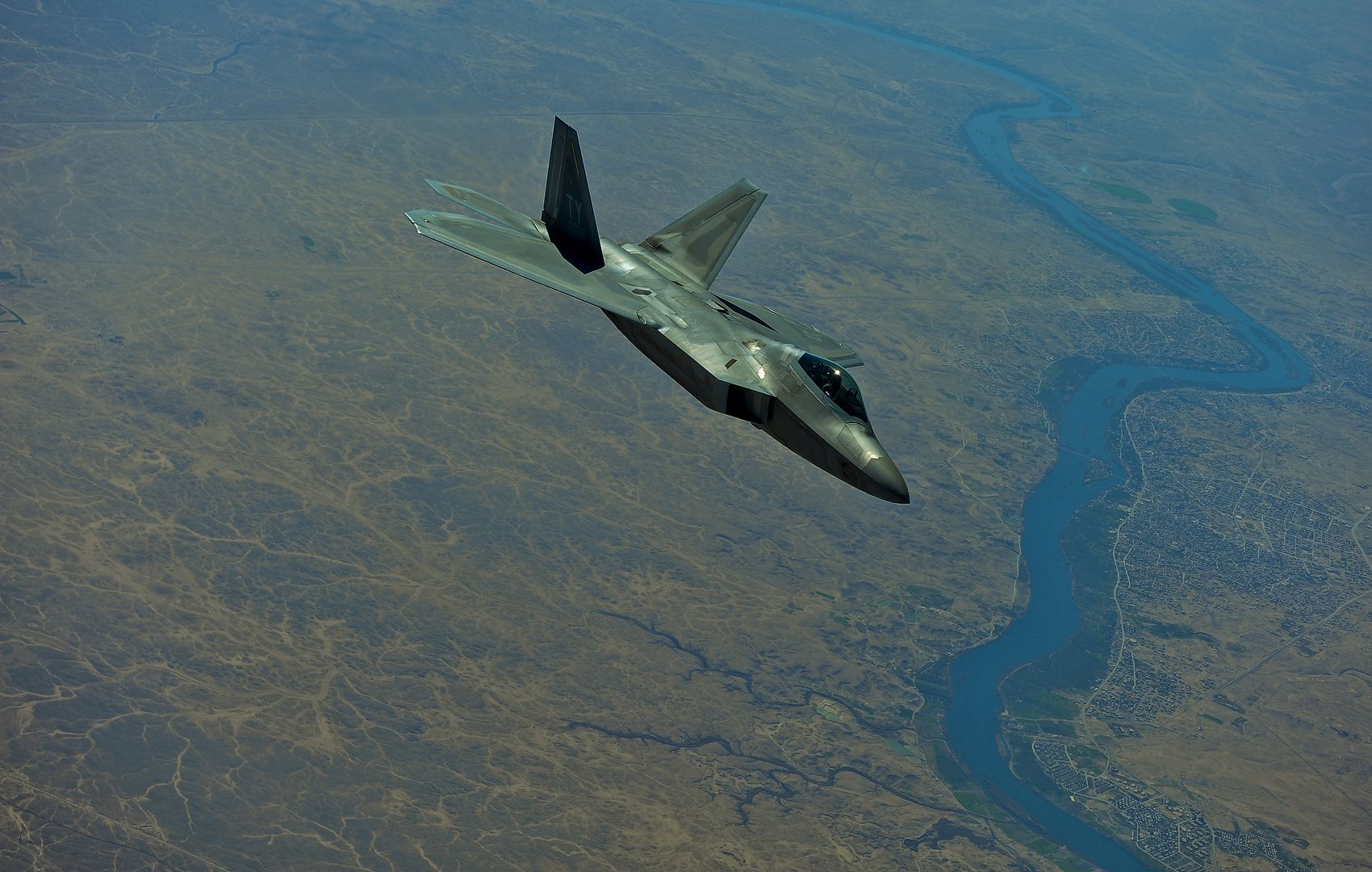
A U.S. Air Force F-16 Fighting Falcon and P-51 Mustang fly in formation during the annal Heritage Flight Training and Certification Course at Davis-Monthan Air Force Base, Ariz., Mar. 1, 2018. Established in 1997, the HFTCC certifies civilian pilots of historic military aircraft and U.S. Air Force pilots to fly in formation for the upcoming air show season. (U.S. Air Force photo by Airman 1st Class Frankie D. Moore)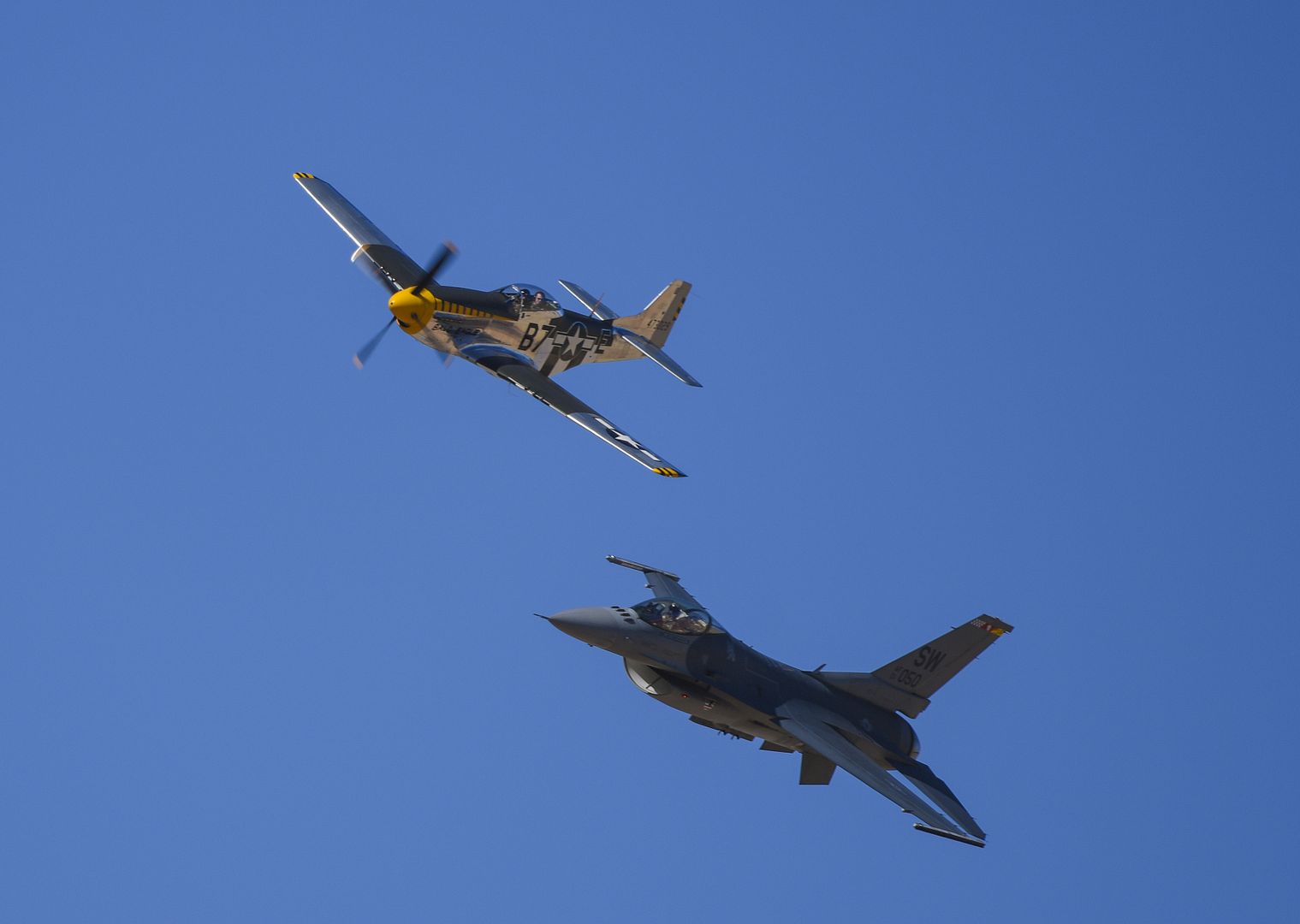
A U.S Air Force F-22 Raptor flies alongside a TF-51 Mustang during the annual Heritage Flight Training and Certification Course at Davis-Monthan Air Force Base, Ariz., March 1, 2018. During the course, aircrews practice ground and flight training to enable civilian pilots of historic military aircraft and U.S. Air Force pilots of current fighter aircraft to fly safely in formations together. (U.S. Air Force photo's by Airman 1st Class Giovanni Sims)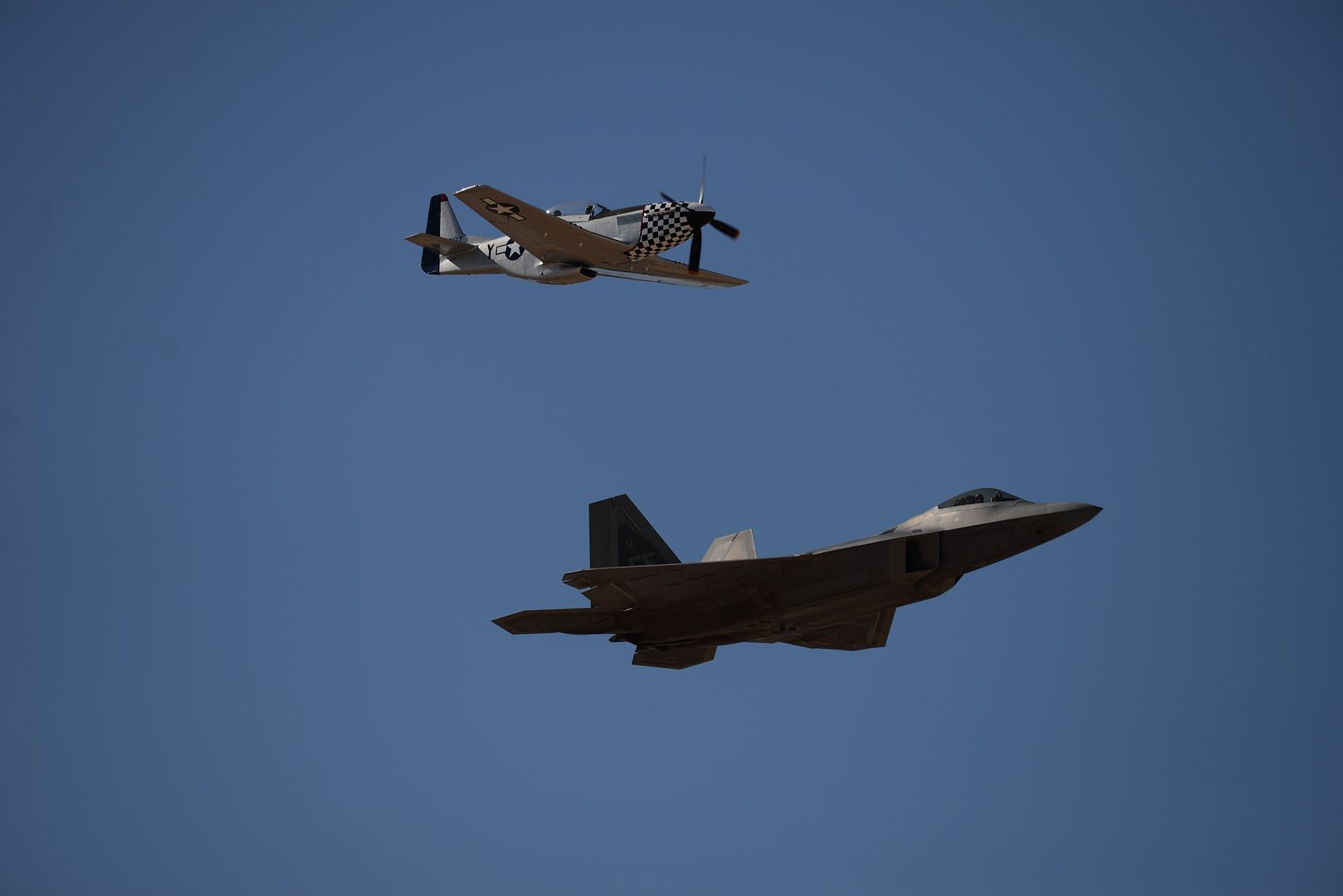
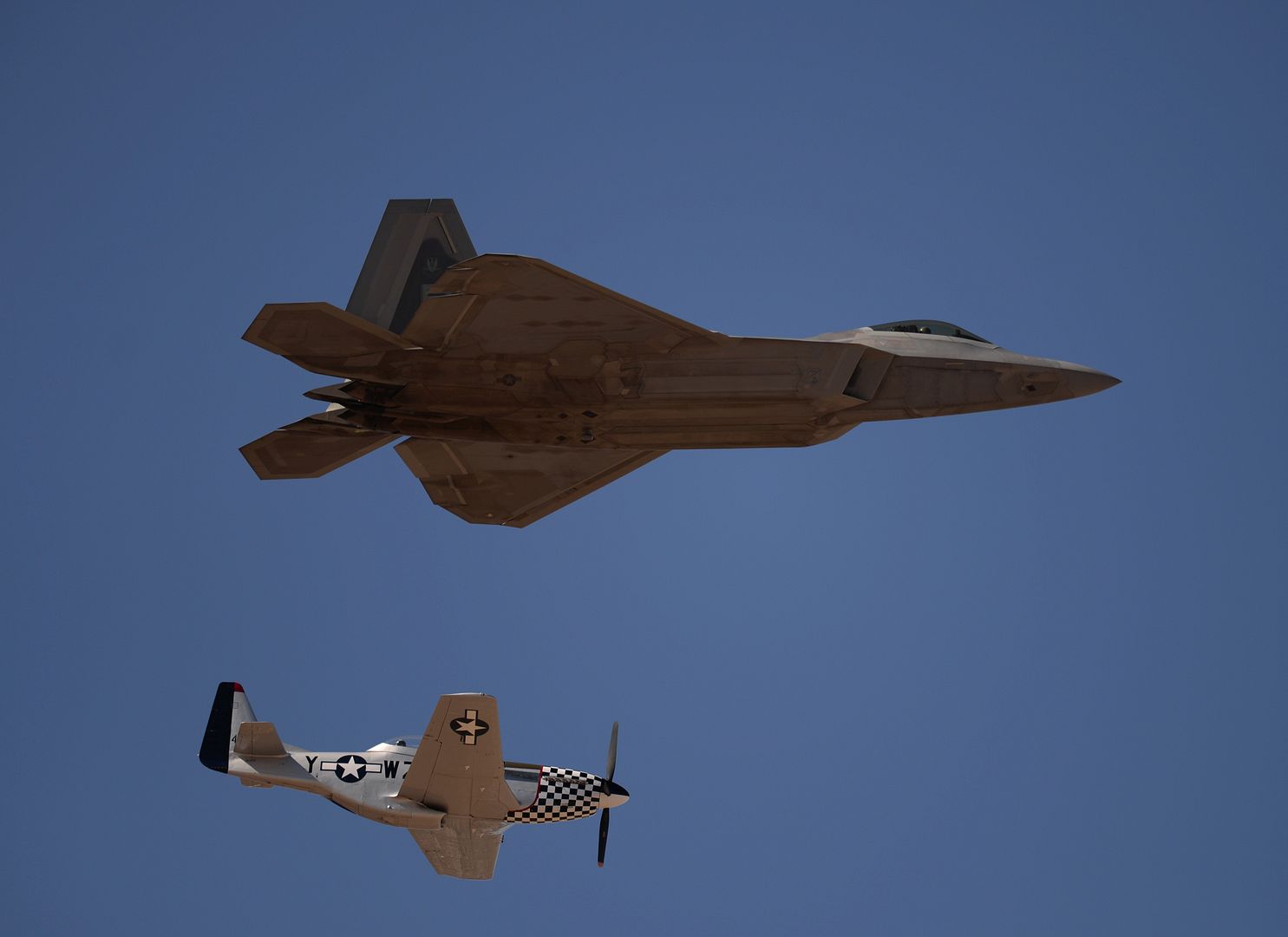
An A-10C Thunderbolt II performs a flyover during the annual Heritage Flight Training and Certification Course at Davis-Monthan Air Force Base, Ariz., March 1, 2018. During the course, aircrews practice ground and flight training to enable civilian pilots of historic military aircraft and U.S. Air Force pilots of current fighter aircraft to fly safely in formations together. (U.S. Air Force photo by Airman 1st Class Giovanni Sims)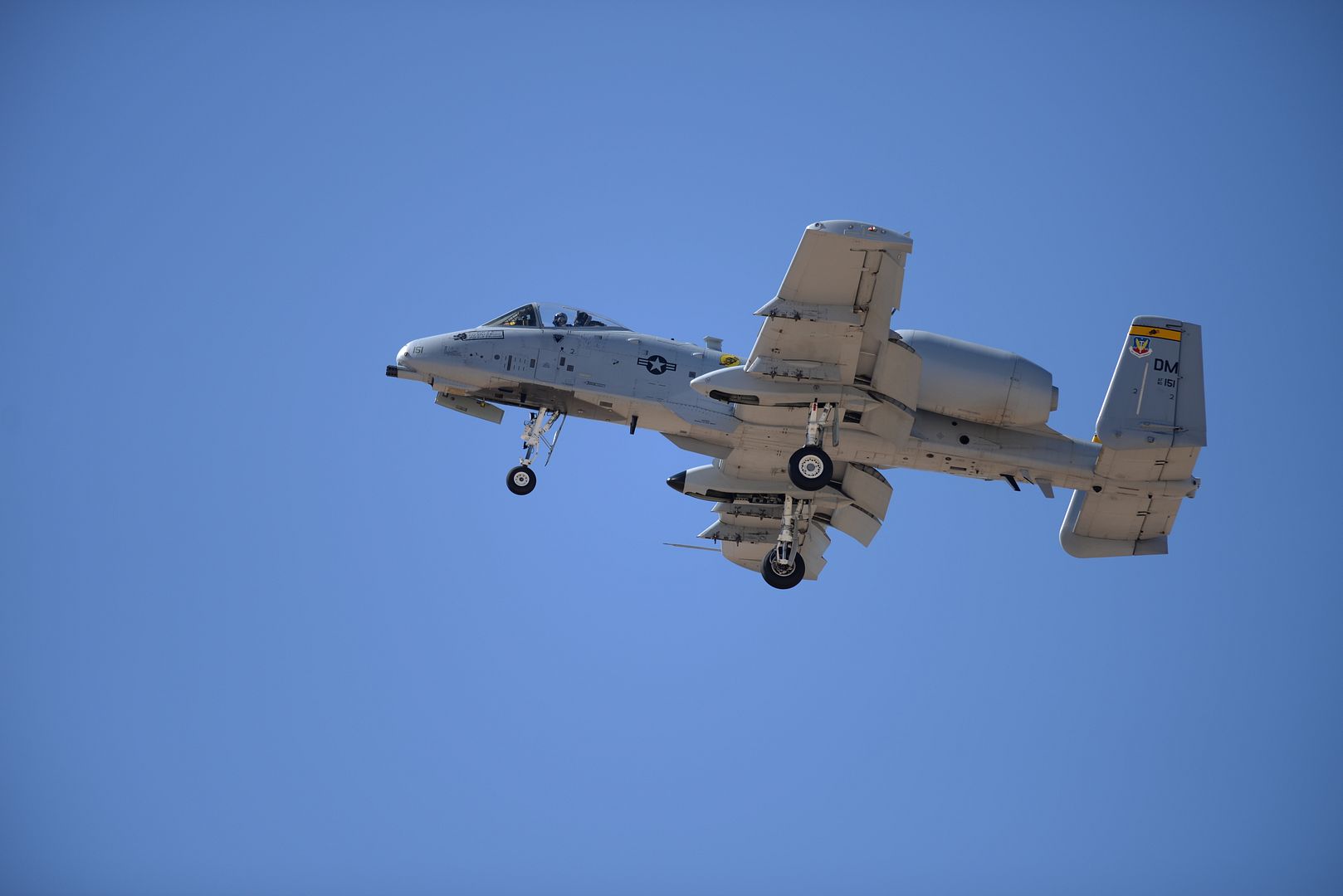
REYKJAVIK, Iceland, March 1, 2018 /PRNewswire/ -- Boeing [NYSE: BA] and Icelandair today celebrated the delivery of the airline's first 737 MAX airplane as the Icelandic carrier seeks to grow and renew its fleet and enhance its trans-Atlantic operations.
The MAX, a new and improved version of Boeing's 737 airplane, will join Icelandair's fleet of Boeing 757 and 767 jets in serving destinations throughout North America and Europe.
Icelandair placed an order for 16 737 MAXs in 2013, including the MAX 8 and larger MAX 9 models. Both airplanes offer airlines exceptional performance with lower seat-mile costs and more range (up to 3,515 nautical miles or 6,510 kilometers) to open new routes profitably.
"The arrival of the new aircraft represents a milestone, the start of the renewal of our fleet which is an exciting undertaking for Icelandair," says Bj?rg?lfur J?hannsson, President and CEO Icelandair. "The MAX will be an excellent addition to our fleet of Boeing 757's and 767's and increase both flexibility and capacity for the growth of our network, through added frequencies and new destinations."
The 737 MAX family is powered by CFM International LEAP-1B engines, and includes design updates such as Boeing's Advanced Technology winglet that will result in less drag and further optimize the 737 MAX performance, especially on longer-range missions. Together, these improvements reduce fuel use and CO2 emissions by at least 14 percent compared to today's Next-Generation 737s ? and by 20 percent more than the single-aisle airplanes they replace.
"The 737 MAX will complement Icelandair's trans-Atlantic operations, continuing to seamlessly link points between North America and Europe," said Monty Oliver, vice-president of Europe Sales, Boeing Commercial Airplanes. "The incredible operating efficiencies of the 737 MAX family will allow Icelandair to steadily and profitably grow its network in the coming years as it introduces both MAX 8s and MAX 9s into its fleet."
The 737 MAX is the fastest-selling airplane in Boeing history, accumulating more than 4,300 orders from 93 customers worldwide.
About Icelandair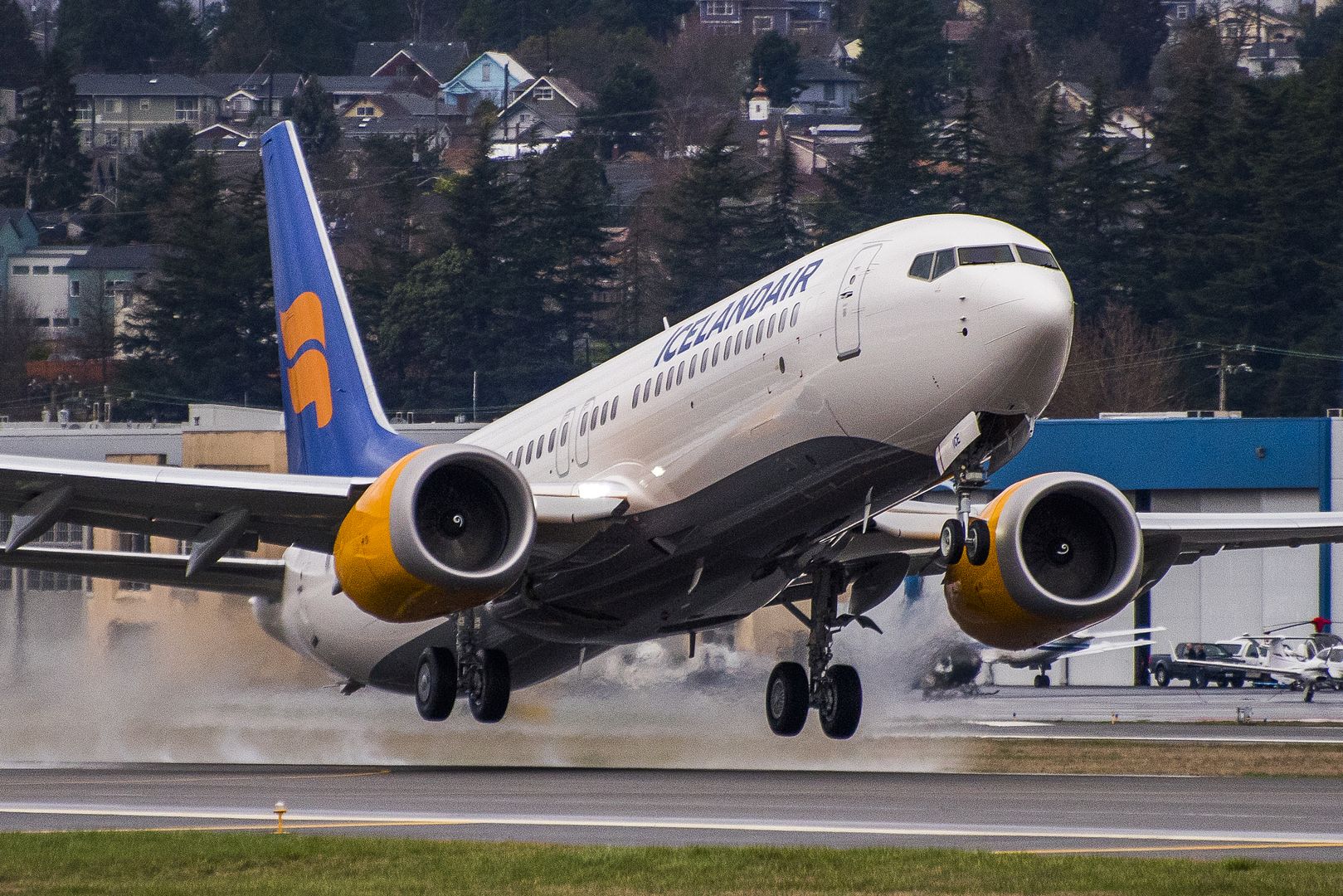
Icelandair is a leading airline offering flights to, from and via Iceland. Its operational strategy is based on the geographical position of Iceland, midway between North Europe and the eastern coast of the USA. Icelandair connects 26 gateways in Europe with 23 gateways in North America, through Reykjavik-Keflavik as a hub.
Back-to-back painting of the initial two A330neo jetliners is completed for the Portuguese flag carrier
The initial two A330neo jetliners destined for an airline operator have rolled out of the paint shop bearing the red and green livery of TAP Air Portugal, which will become the launch operator of this new member in Airbus? A330 family ? the most popular widebody family ever.
Both aircraft received the Portuguese airline?s branding at paint facilities in the Toulouse region of southern France ? location of the A330 final assembly line and home to Airbus headquarters. These jetliners include the ?A330neo / first to fly? wording on the fuselage, underscoring their upcoming role as the first to enter commercial airline service.
When in operation, the aircraft will join TAP Air Portugal?s already large fleet of Airbus-built jetliners, composed of A330s, A340s and A320 Family versions. TAP Air Portugal has ordered 10 A330neo aircraft and will operate a similar number on lease.
The A330neo: new generation, new efficiency
The A330neo brings together unbeatable economics and the proven values of Airbus? popular A330 product line. Equipped with extended-span wings incorporating upturned Sharklets wingtips, it is powered by new Rolls-Royce Trent 7000 engines.
Airlines will benefit from the 25 percent less fuel burn per seat compared to previous-generation competitors, along with reduced maintenance costs and the A330?s market-leading 99.5 percent operational reliability.
TAP Air Portugal?s A330neo jetliners will incorporate the new Airspace by Airbus cabin concept ? a consumer-centric interior based on four values: comfort, ambience, service and design. Airspace features include overhead bins with an updated design that improves carry-on stowage capacity by approximately 66 percent; illumination using light-emitting diode (LED) technology offering up to 16.7 million possible colour variations and lighting scenarios to reflect an airline?s branding; along with upgrades to such cabin items as magazine racks, ventilation grilles and window bezels.
Post a reply
- Go to Next topic
- Go to Welcome
- Go to Introduce Yourself
- Go to General Discussion
- Go to Screenshots, Images and Videos
- Go to Off topic
- Go to Works in Progress
- Go to Skinning Tips / Tutorials
- Go to Skin Requests
- Go to IJAAF Library
- Go to Luftwaffe Library
- Go to RAF Library
- Go to USAAF / USN Library
- Go to Misc Library
- Go to The Ops Room
- Go to Made in Germany
- Go to Campaigns and Missions
- Go to Works in Progress
- Go to Juri's Air-Raid Shelter
- Go to Campaigns and Missions
- Go to Works in Progress
- Go to Skinpacks
- Go to External Projects Discussion
- Go to Books & Resources
